Graduate Directory 2012
Influenced by a diverse range of architects, Andrew Heumann cites his grandparents' Eichler A-frame house in California as one of his initial architectural inspirations. His graduation project is on a subject he is passionate about, the parametric reinterpretation of a housing development in Hollywood based on the 1940 to 1960s American Case Study houses, and won him an AIA Henry Adams Certificate of Merit.
Would most like to work with: 'Snøhetta - it excels at producing challenging, innovative spaces.'

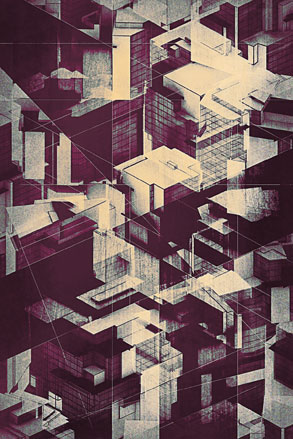
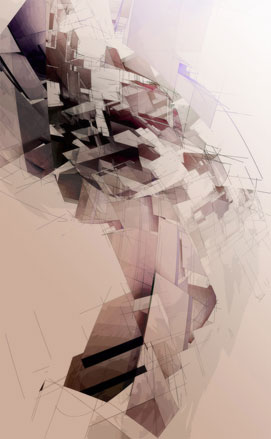
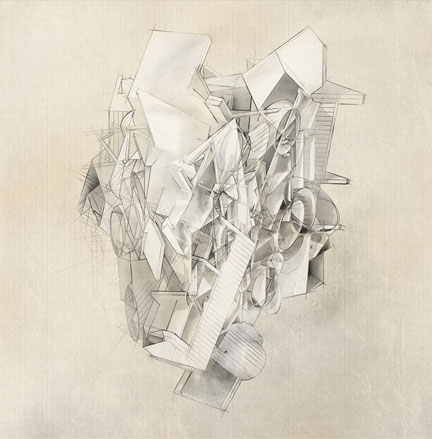
Shanghai-based Chen Zhuowei completed his first degree at the China Academy of Art's School of Architecture before enrolling in a Masters course at the University of Hong Kong, a qualification he is currently working towards. His graduation design thesis explored the idea of vertical living. By breaking the monolithic nature of the standard highrise, Chen proposed a high standard of public-space design in a high-density urban context. 'Wang Shu's great consideration of vernacular culture, Rem Koolhaas's 'The Generic City', Álvaro Siza's design methodology… all their work has influenced me,' he says.
Would most like to work with: 'It would be a great honour to work in Siza's studio.'
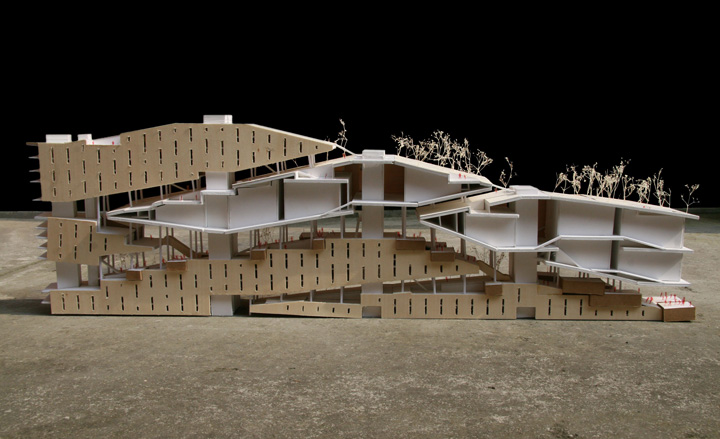
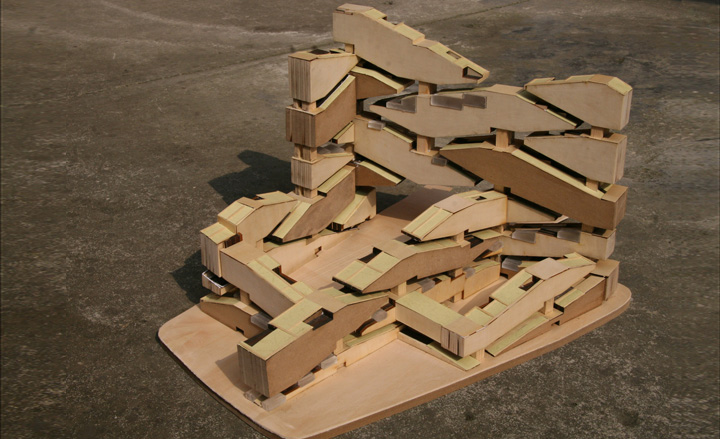
Slotting in work stints with the likes of MVRDV in Rotterdam and Mole Architects in Cambridge in-between his studies, Chris Green combines theoretical and practical skills, and claims 'an unhealthy love of concrete and a penchant for drawing'. Data Forest, his graduation project (pictured), examines a future where an office tower on London's Silicon Roundabout becomes the site of an urban harvesting experiment spanning food and data.
Would most like to work with: 'Heatherwick, Rem Koolhaas and BERG if they started an office.'
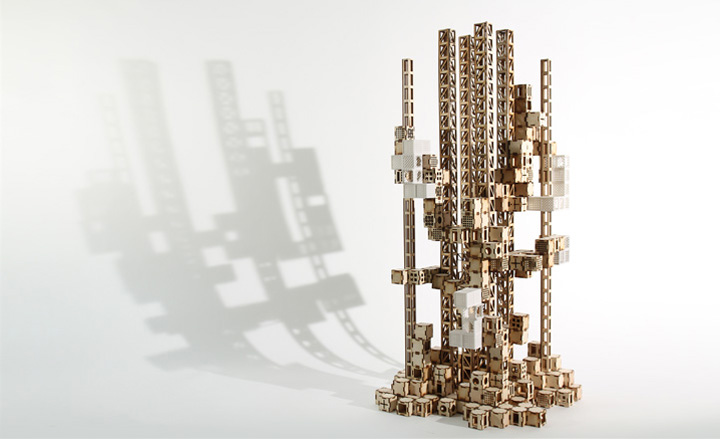
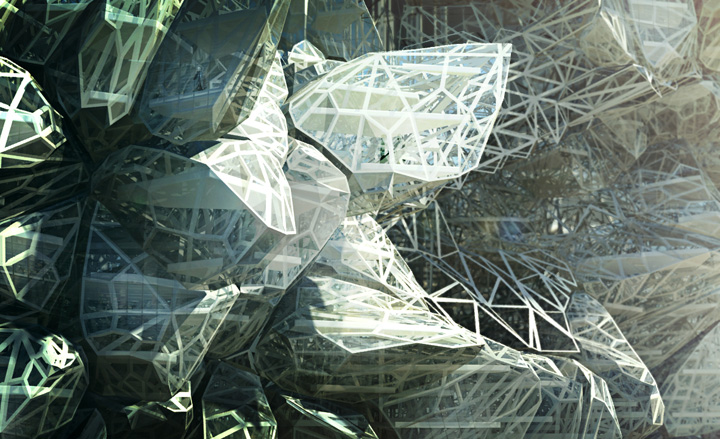
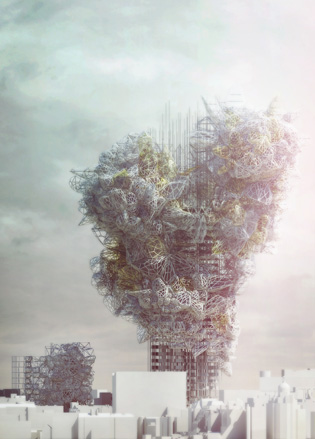

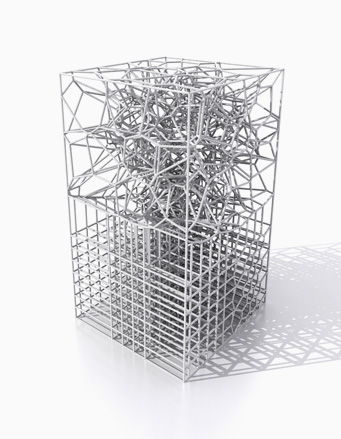
The 'architecture' of nature (the Grand Canyon, Zion, Bryce Canyon National Park); traditional Japanese architecture; Alvar Aalto; Zaha Hadid; books by Rem Koolhaas; texts by Louis Kahn; 'Biophilia' by Edward O Wilson; 'The Death and Life of Great American Cities' by Jane Jacobs… they all inspired Russian Daliya Safiullina to architecture. Her first-class graduation thesis at the acclaimed Strelka Institute investigates reusing, recycling and upcycling elements of Soviet Panel houses and campaigns for waste prevention in Russia, issues she is hoping to develop alongside a career in architecture.
Would most like to work with: 'Kazuyo Sejima, Steven Holl, Atelier Bow-Wow, Wolf D Prix, BIG, Morphosis.'
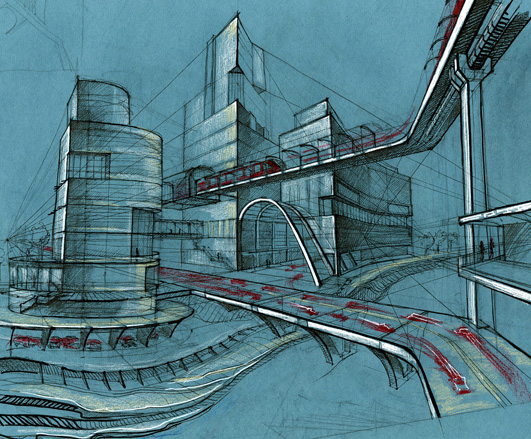
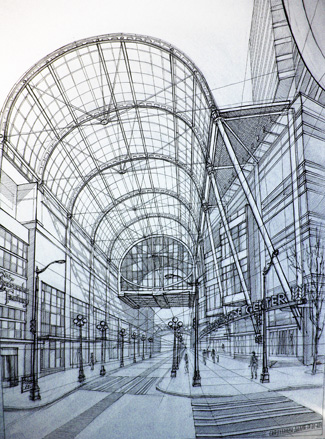
Inspired by Frank Lloyd Wright's 'Fallingwater', Danny Wills sought out an architecture degree at Kent State University and followed with a full-tuition scholarship degree at New York's Cooper Union, where his final-year project explored four proposals for the future use of the Great Plains. Having bagged the Henry Adams AIA Medal and Certificate of Merit as well as the Toni and David Yarnell Prize in Architecture, Wills is now teaching at the Cooper Union. He also works with cultural consultants Museoplan on Hangzhou's Museum of Urbanism, designed by Herzog & de Meuron.
Would most like to work with: 'Smout Allen, Peter Zumthor, Herzog & de Meuron and Anders Abraham.'
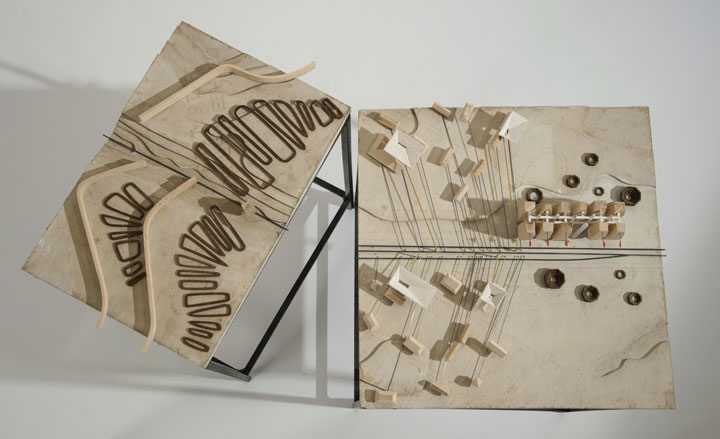
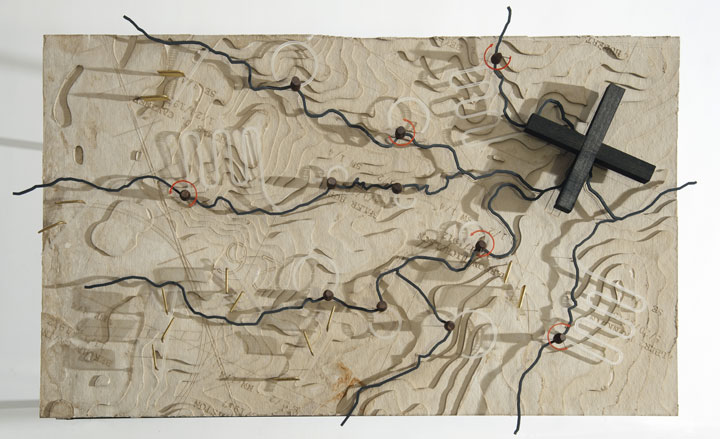
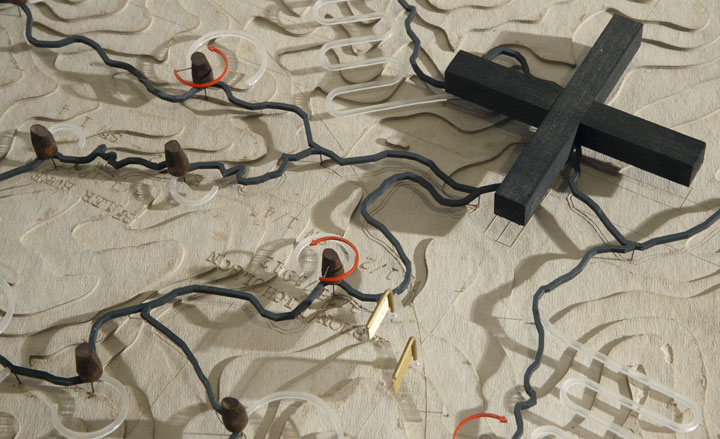
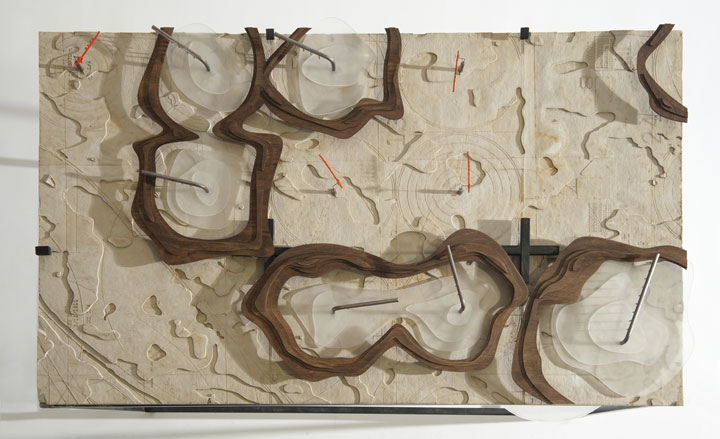
David Späh comes from a family of architects and is 'fascinated by vernacular architecture, which often conveys immense personality without holding the label of a particular architect's name.' His thesis, bottom, speculates on how the city of Regensdorf can achieve densification and urban coherence while maintaining functionality and authenticity.
Would most like to work with: 'Álvaro Siza Vieira.'
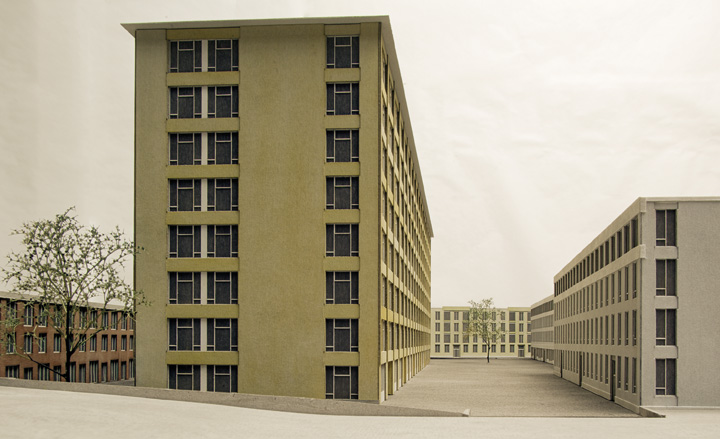
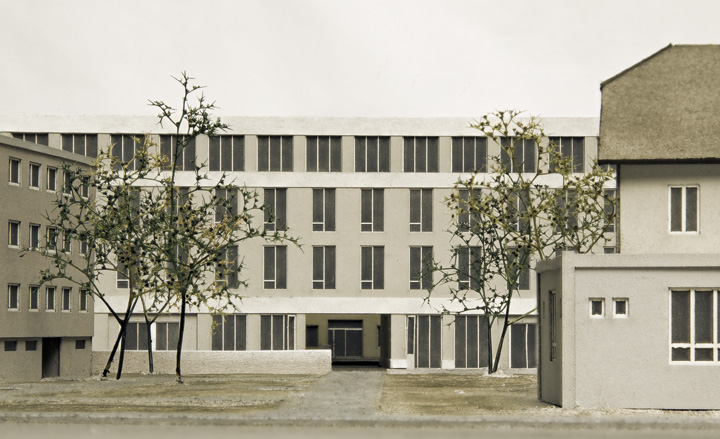
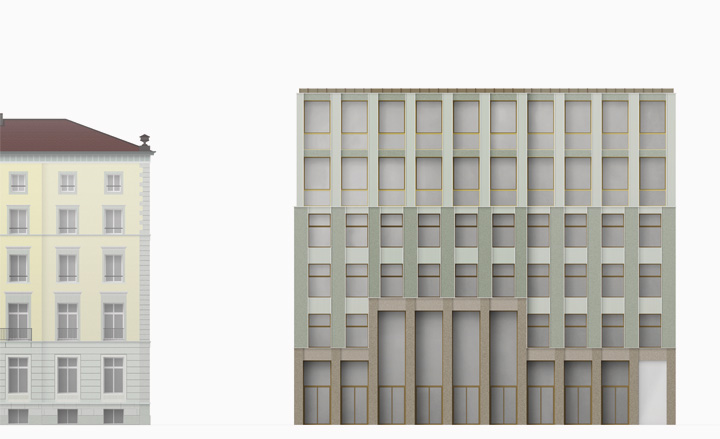
Emma Emerson followed her BA Hons in architecture from the University of Brighton with an award-winning MA in architecture, in 2012. Her thesis looks into boundaries in architecture and the idea of a Fence City. Having combined her studies with practical experience at offices such as Clive Sall Architecture and Walter Menteth, Emerson admits her main influences 'fall outside what the British establishment strictly deems "architecture". I'm fascinated by the space between the formal and informal city.' Emerson assisted in the co-ordination of RIBA's talks programme and the London Festival of Architecture in 2010.
Would most like to work with: 'Many different practices, big and small, here and abroad.'
Wallpaper* Newsletter
Receive our daily digest of inspiration, escapism and design stories from around the world direct to your inbox.
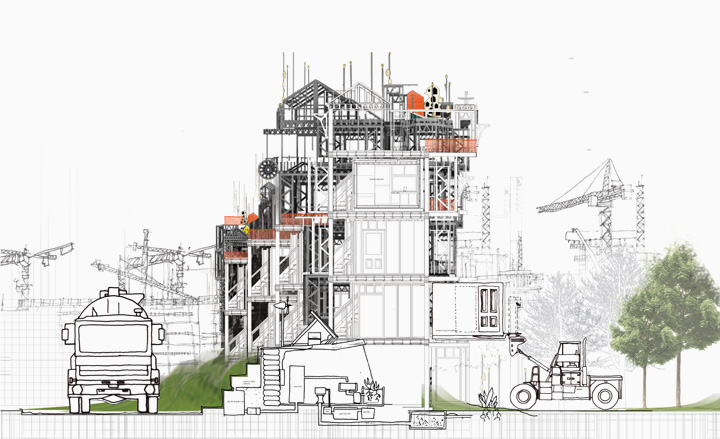
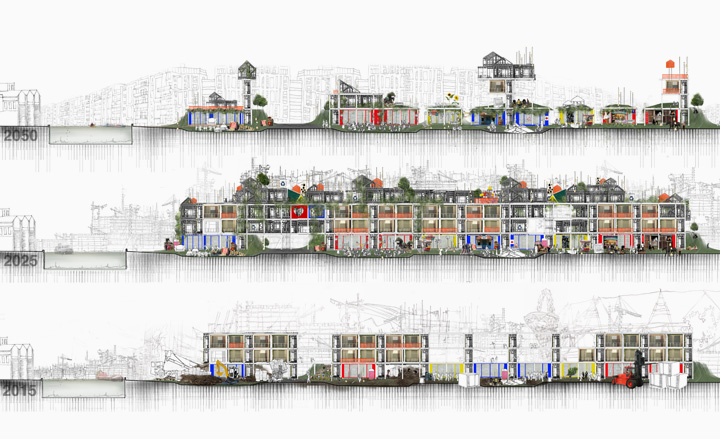
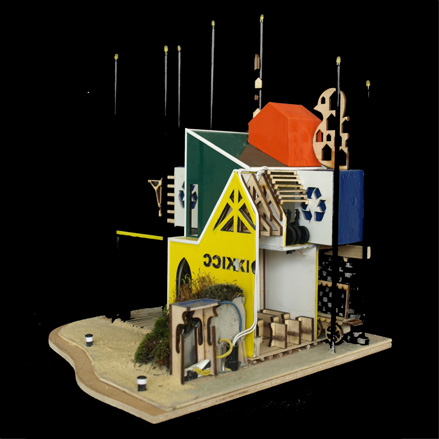
Jacobsen was drawn to architecture by her father's pencil drawings and 'a desire to create beautiful things'. Her final year project (pictured), looks at the transformation of a disused lighthouse in Bornholm and its surroundings. 'I am inspired by architects that achieve a robustness and simplicity while maintaining a connection to the surrounding.'
Would most like to work with: 'An architect who works between art and architecture.'
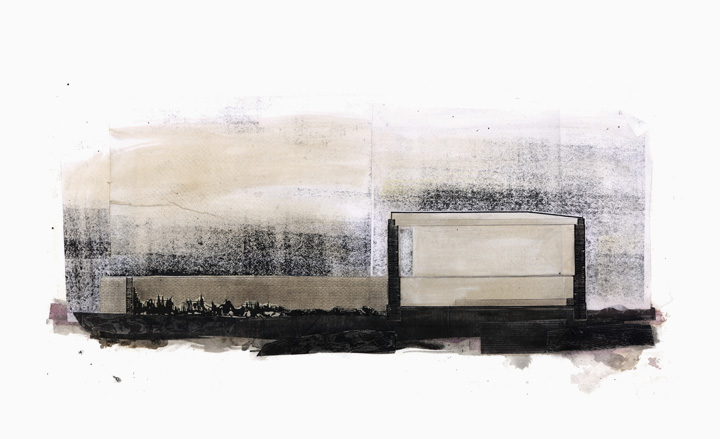
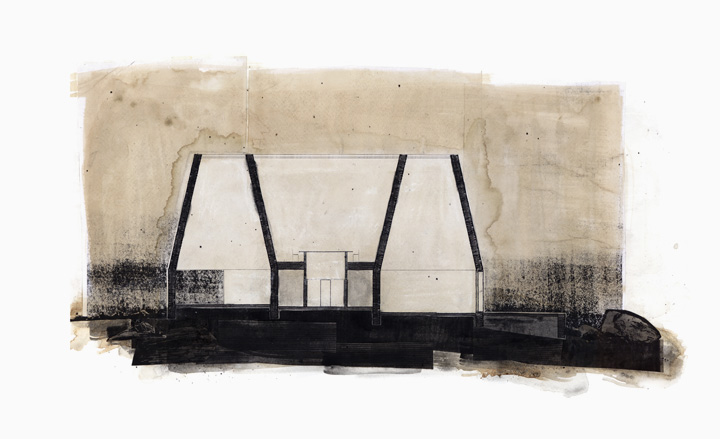
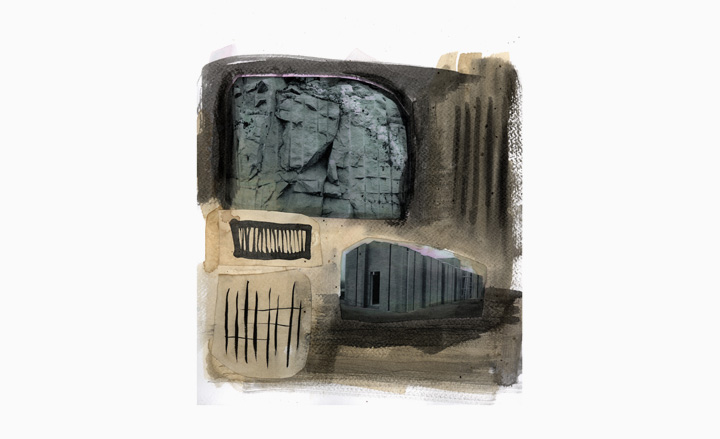
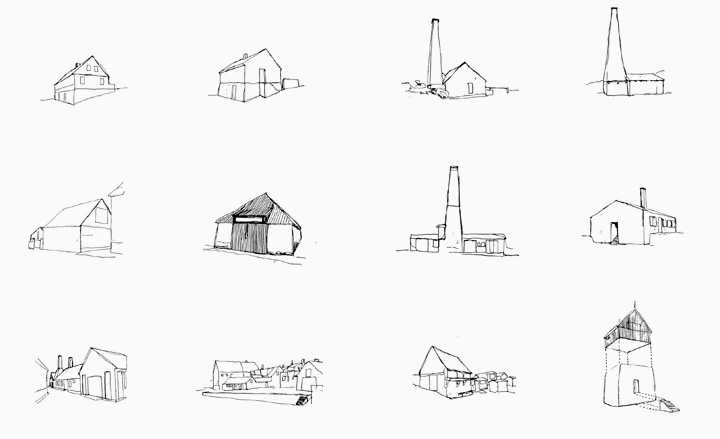
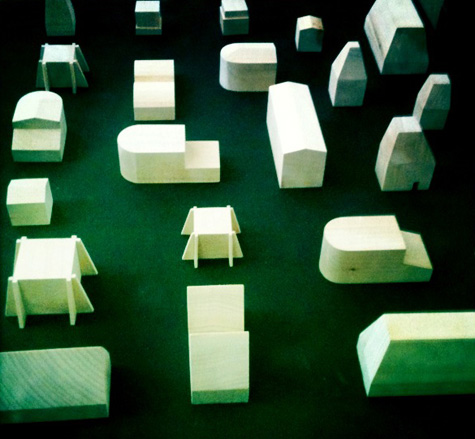
His thesis 'National Purist Routes', completed with fellow student Gislunn Halfdanardottir, studied the concept of national tourist routes and Iceland's energy issues and helped win Mathias Kempton the acclaimed Statsbygg Student Award for Outstanding Architecture. Kempton now works for Lateral Office in Toronto and is considering applying for a post-professional degree in the US. 'My initial drive towards architecture was based on my realisation that it combined simply "making stuff" with extending beyond myself as an individual. Architecture not only reflects cultural and social matters, it changes them by its very existence.'
Would most like to work with: 'I'm already working with Lateral Office, one of the few practices I really wanted to work for when graduating.'

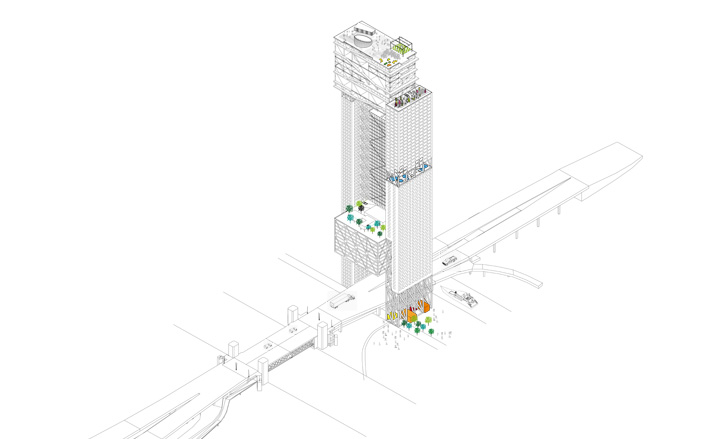
His background in construction and bricklaying introduced Morten Westrup Pedersen to the world of building design. A degree at the Royal Danish Academy's architecture school - where Westrup Pedersen found inspiration from Frank Lloyd Wright, Jørn Utzon and Louis Kahn - swiftly followed. His graduate project 'A Public Bath in Granada' follows his design of a public bath, including showers, Turkish hammam, laundry and kitchen, next to the old rammed-earth wall of the Spanish city. It's designed seamlessly in the same materials as its surroundings, and open to all.
Would most like to work with: 'Chris Thurlbourne, because he focuses on construction detailing.'

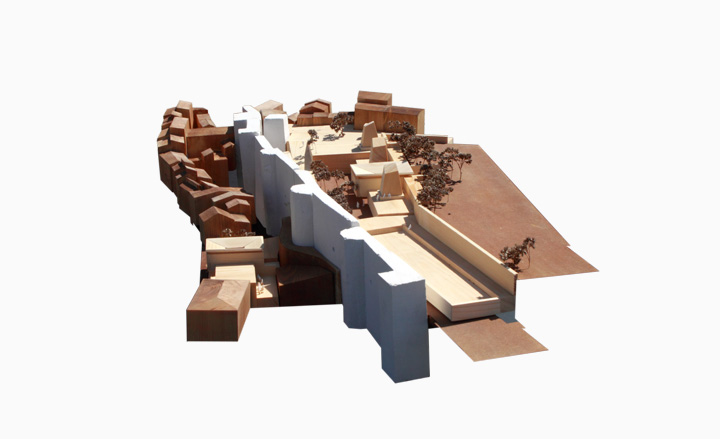
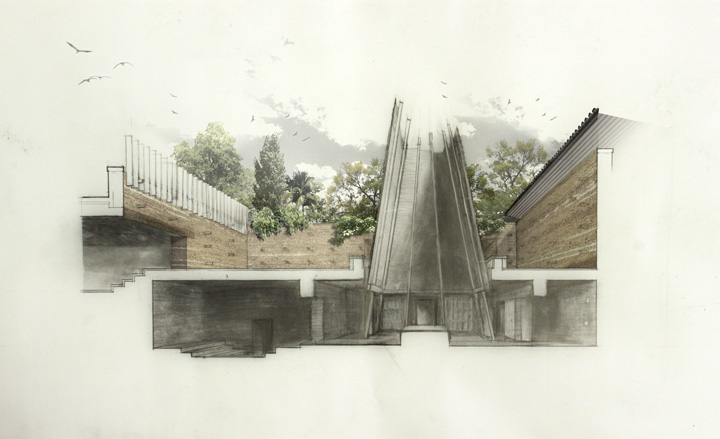
It was reading Bernard Rudofsky's Architecture Without Architects at the formative age of 16 that inspired Ned Scott to become an architect. His thesis study focuses on the War Rooms at St James's Park in a hypothetical, futuristic scenario circa 2050 where the UK turns into a closed-loop agrarian economy. Scott's influences are varied, from John Hedjuk's Victims, to the etchings of Brodsky and Utkin.
Would most like to work with: 'Diller and Scofidio.'

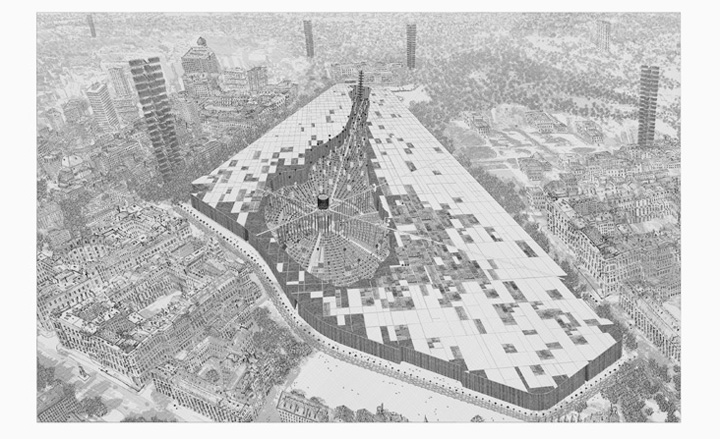

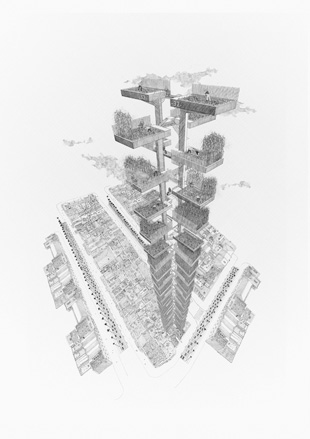
'My main interest is in graphic development - deriving complex spatial relations out of simple diagrams,' says Philipp Mecke, whose thesis involved designing a unique modular assembly method that would adapt to exterior and interior use. He cites Japanese architect Junya Ishigami as an inspiration: 'His work illustrates the emergence of complex structures via simple diagrams and the replication of these elements.' With a recommendation from Ben van Berkel of UNStudio, Mecke is heading off to work for the Performative Building Group at Bollinger + Grohmann, known for complex geometry and engineering solutions.
Would most like to work with 'I'd like to test my own ideas and connect with people who are open to test new things.'
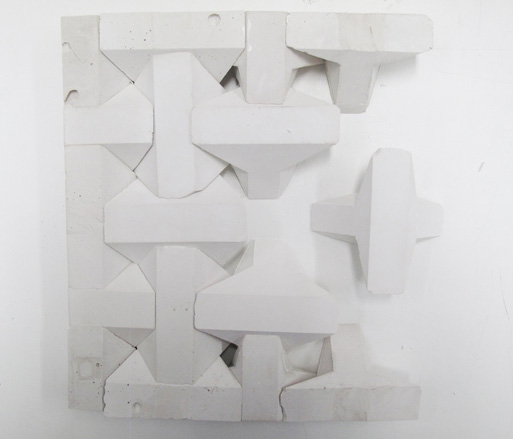
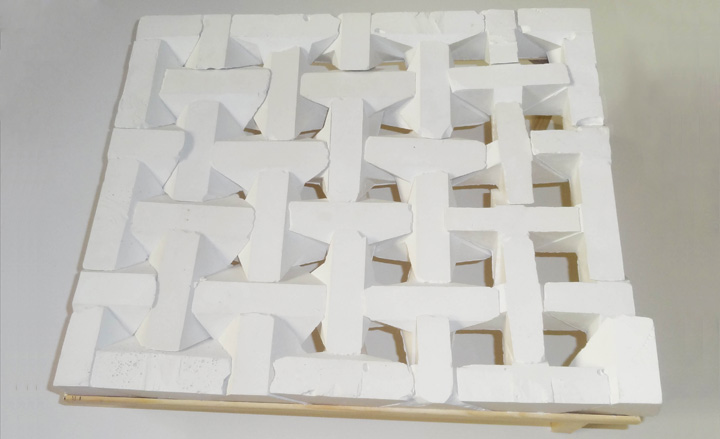
Graduating from the Washington University in St Louis with a Master of Architecture and the Alpha Ro Chi Medal for student accomplishment, Samantha Stein also adds teaching assistant experience to her CV. Her family's engineering and graphic-design background helped Stein choose her profession, yet architecture is not her design stimulation; Richard Serra is one of her greatest sources of inspiration. 'His sculptures influenced how I think about weight, materiality and tectonics,' says Stein. For her graduate thesis on 'water as a spectacle', she designed an aquarium for the city of St Louis.
Would most like to work with: 'Snøhetta, where I'm now a full-time junior designer.'

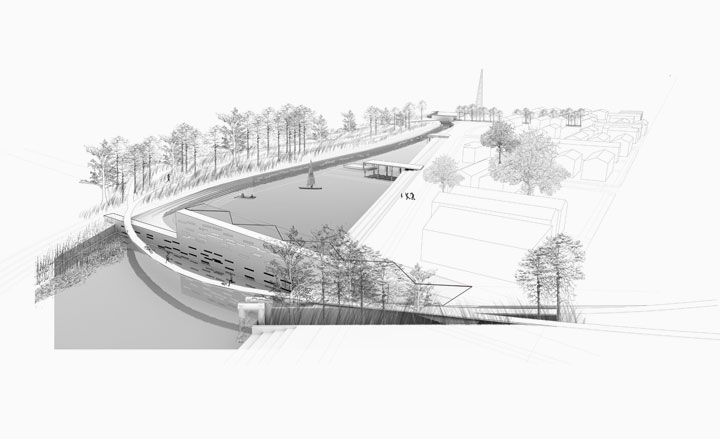
After receiving his Part I from the Bartlett School of Architecture, Simon Moxey concentrated on developing the family business, Forum Homes, and becoming a partner at Moxey Associates in 2005. His recent masters from the RCA led to his Part II qualification, thanks to a thesis that imagines the city of Slough as Britain's next financial hub. Combining research skills with a practice-based approach has won Moxey several awards, including the RCA/New London Architecture Student Prize. As for his immediate future, it involves competitions and new commissions, 'Two residential projects on England's South Coast and a design-build project involving a house in London.'
Would most like to work with 'Kazuyo Sejima and Ryue Nishizawa of Saana.'
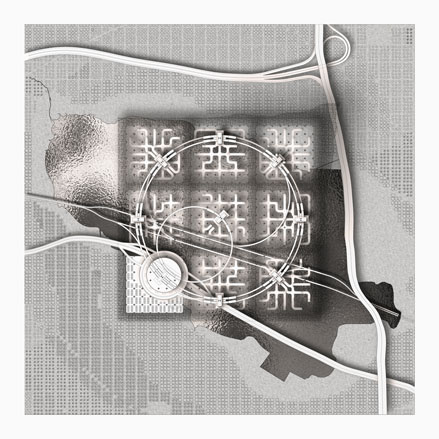
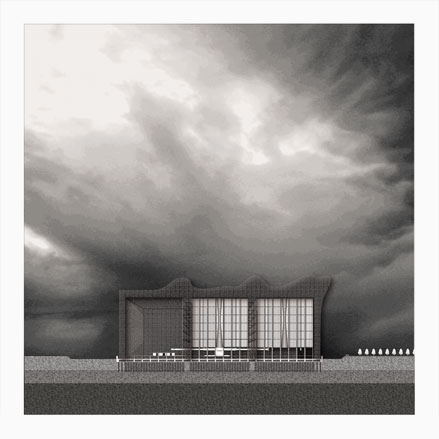
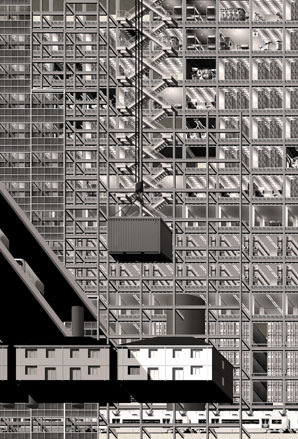
Sina Momtaz completed his first degree at the College of Fine Arts, University of Tehran, before following up with a Masters from the prestigious École Polytechnique Fédérale de Lausanne. 'When I was a boy I was really interested in archaeology and learning about civilizations. I think old ruins inspired me to become an architect,' explains Momtaz, who admires the work of Aldo Rossi, Jean-Jacques Lequeu and Peter Zumthor. His graduation thesis on applying traditional consideration to rain, wind, shade and vegetation in contemporary architecture won him best in class. After internships at Dominique Perrault Architecture and François Roche, he plans to develop his practical skills by joining a woodworking studio.
Would most like to work with: 'Valerio Olgiati'
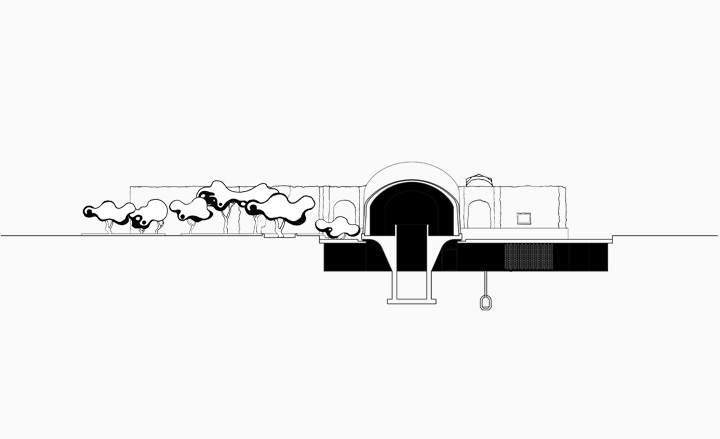
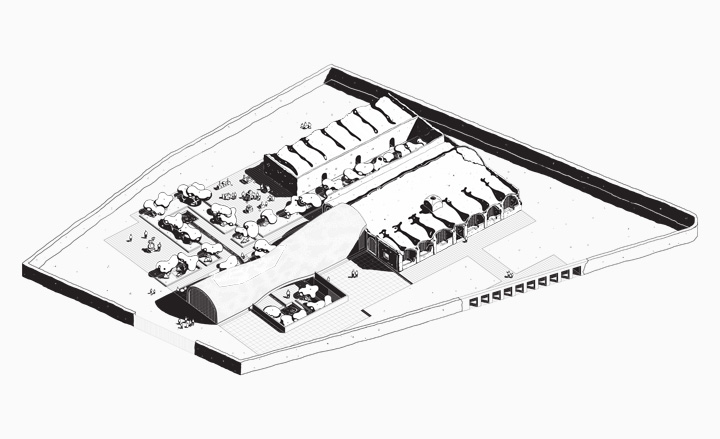
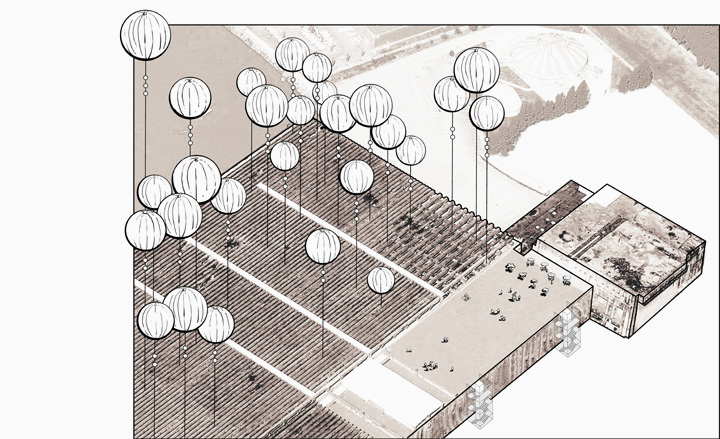
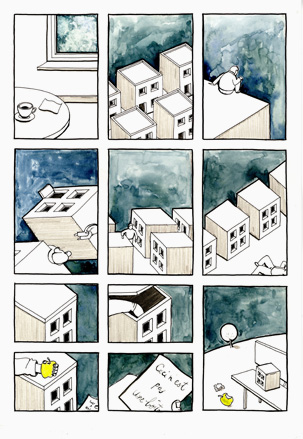
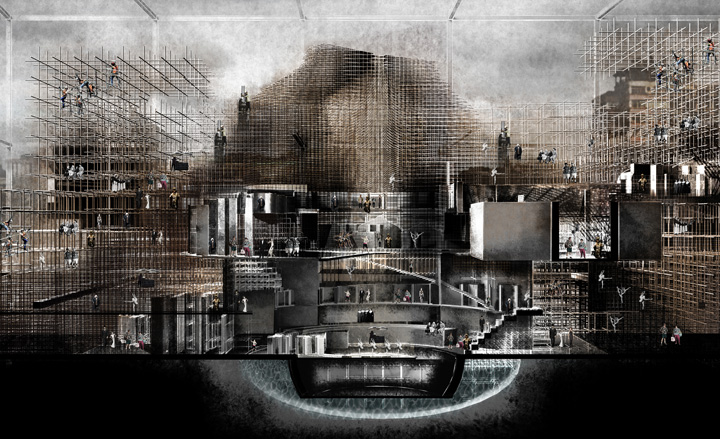
Completing her Part I at the Architectural Association in 2012, Vidhya Pushpanathan was awarded top honours and Bronze at the RIBA President's Medal, the annual prize for student and graduate work. Her graduation project, 'The Depository of Forgotten Monuments', looks at Moscow's ability to maintain local identity while accepting global influences. Pushpanathan places a 3D grid over the city to help create relationships between buildings, monitoring deconstruction and reconstruction.
Would most like to work with: 'The list is endless! I'm keen on firms where there's an opportunity to learn how the industry works and how a practice is run.'
Yukiko Kusumoto's design thesis proposed an urban environment made out of interweaving bridges. She decided to lift a neighbourhood's streets from ground level and introduce bridges to connect the various different buildings. 'I was always interested in house plans,' admits Kusumoto. She also admires the work of Japanese architect Yoshiji Takehara. 'His architecture just fits with the city, but still has a lot of originality.'
Would most like to work with: 'My tutor, Mr Masashi Sogabe.'
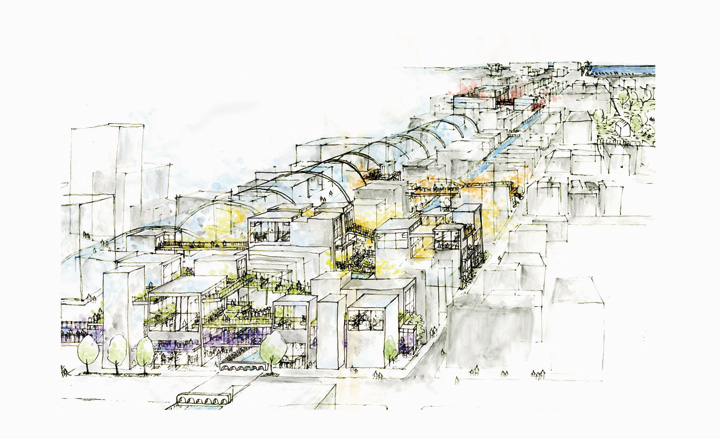
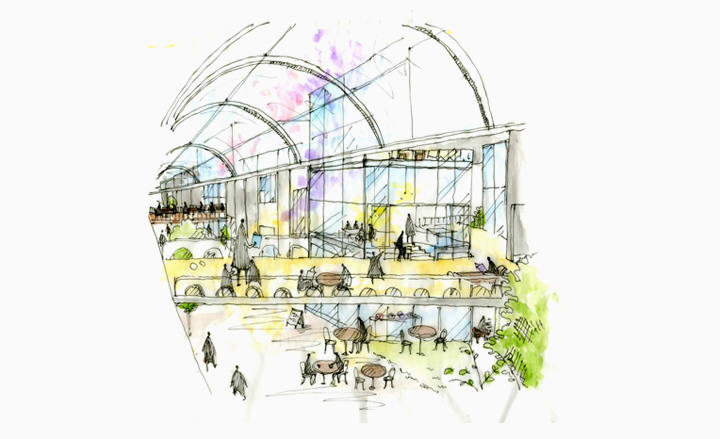
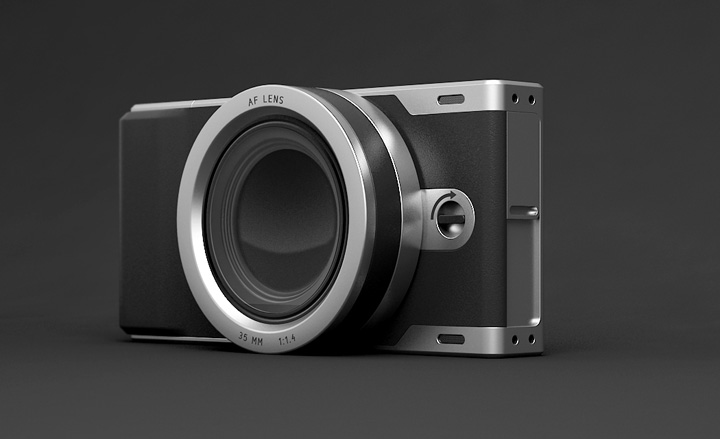
Ahmet Uslu's camera prototype adresses the problem of reconciling good looks and ergonomics with changing technology. 'Is it possible to design a camera considering all the other systems around it?' he asks. 'Digital evolution has changed the rules of product design. Products have become a part of a complex system, with smartphones, wireless connections and the sharing platforms all having a big impact on cameras and photography.
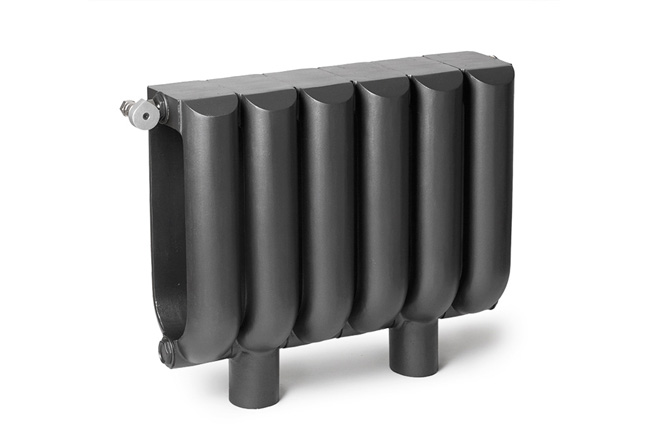
Bertille Laguet and Mathieu Rohrer work together as the duo Bertille & Mathieu. Their 'VentrU' cast-iron radiator has an interior space so that it can accommodate blankets, gloves and other accessories you may wish to warm or dry. 'Its generous volume and curves define its warm and comfy allure. It's an invitation to touch and to feel the sweet sensation of warmth.'
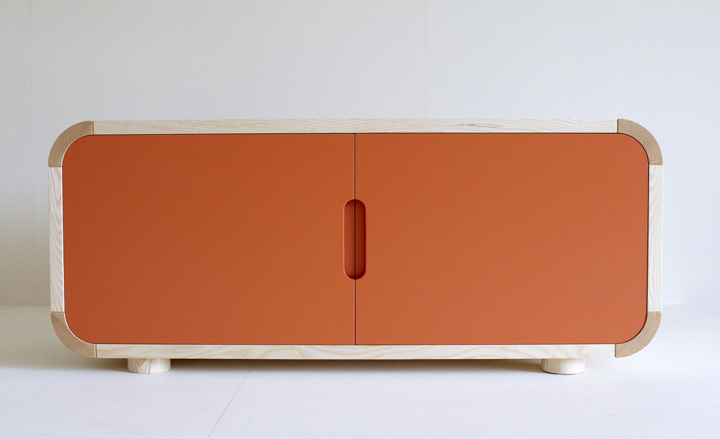
Bonaventure Touton grew up in France, but found tutor and cabinetmaker Dominic Ash through the English side of his family. 'Contemporary retro design is my current passion. I love its visual simplicity. Using it in combination with colours that convey warmth and happiness, I seek to create a finished result that lifts the spirit.'
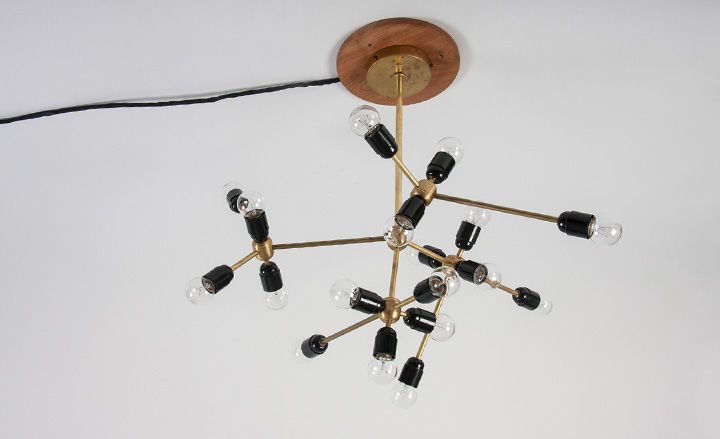
The 'Dim(Some)' chandelier features two dimmer switches, one to turn more bulbs on or off and the other to adjust their brightness. 'I've been lucky enough to discover Arduino, the open-source electronics platform, which allows me to create work with endless possibilities in the area of lighting and electronics,' he says. 'Hacking known interactions with objects - something as simple as how a lamp can turn on or off - really fascinates me.'
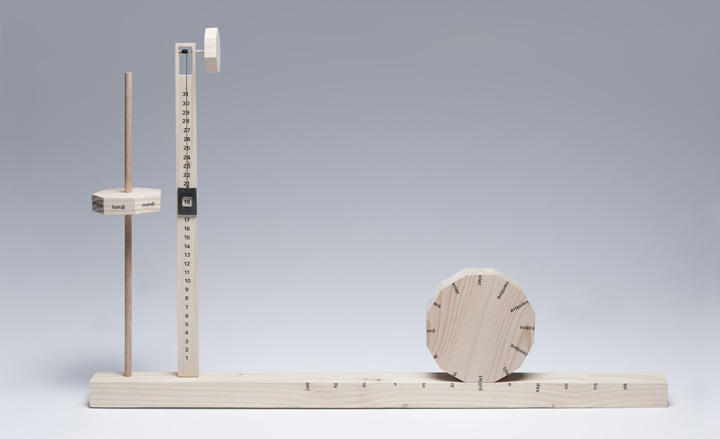
Charlotte Baverel has devised a perpetual calendar manually adjusted through a set of rotating movements. Citing Constantin Brancusi and Alberto Giacommetti amongst her influences, the designer adds, ‘I try to link rationalism and poetry in my work. This calendar is a timeless sculpture.’
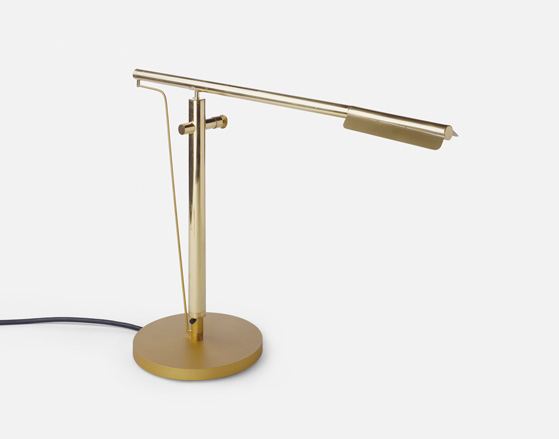
Giulio Parini's 'Brass Ensemble' lamp was inspired by the way the slide moves in a trombone and was made with the assistance of a trombone maker. 'In a trombone the variation in air pressure changes the musical note,' says Parini. 'In my lamp there is a low-tech pneumatic system. The variation in the volume of air inside the lamp's air chamber permits the slide between two tubes of different diameters, allowing a telescopic extension of the lamp body.'
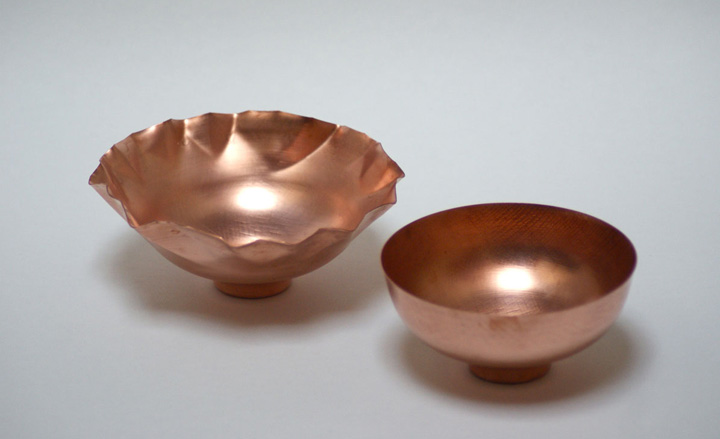
Hugh Leader-Williams' 'Wood Grain Bowls' are handmade copper bowls that were the result of experiments with the process of metal spinning, a traditional technique that straddles the boundaries of craft and industrial production. 'I substituted the steel formers that are normally used for ones made from oak and ash. Their distinctive grain pattern was imprinted into the inside surface of the copper bowls during production,' he says.
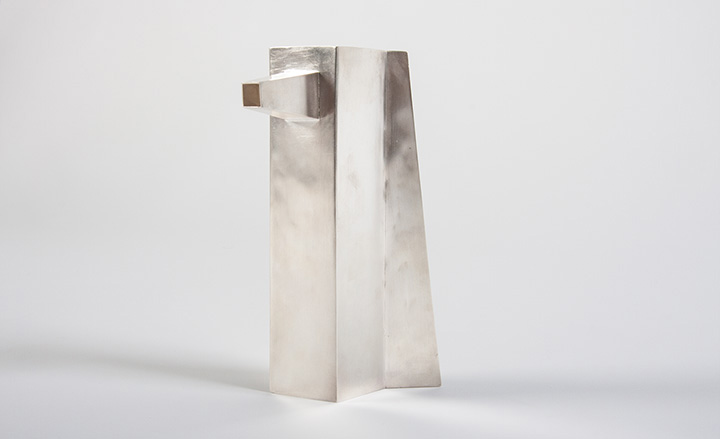
Imogen Clarkstone's cubist silver-plated milk jug was an exploration of alternative construction techniques combined with traditional silversmithing. It was inspired by the artist Vladimir Arkhipov's collections of home-made, handmade objects. 'I am inspired by the inventive and the human, by people improvising with what they have, to create and mend in times of need,' she says.
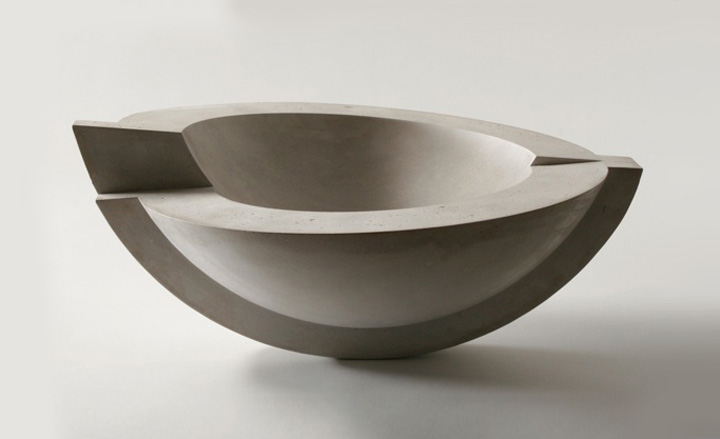
Taking an architectural approach to design, Jo Woffinden explores space and form in her creations and works with a range of materials, from porcelain, bone china and stoneware to concrete, plaster and paper. This elliptical concrete bowl is part of her Baroque series. 'I wanted to bring the spirit of the baroque into a modern context,' she says. 'I focused on using curves to create a spatial flow between planes and lines.'
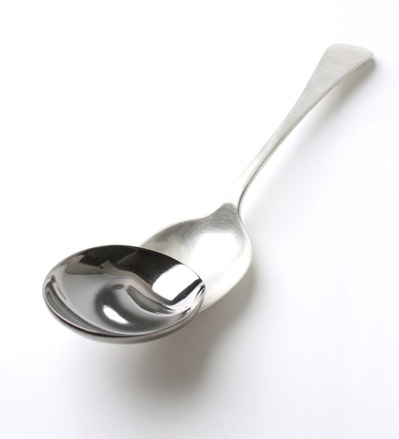
Joo Hyung Park makes both cutlery and jewellery and it is while manipulating the materials that her designs are formed. 'The touch of my hands is significant in my work,' she says. 'I learn while I make objects and the ideas get developed together with my hands. With the two elements of my work, my desire is to share how I use my hands. They bring new life to a material as a piece of jewellery. I use them to start jewellery and complete cutlery.'
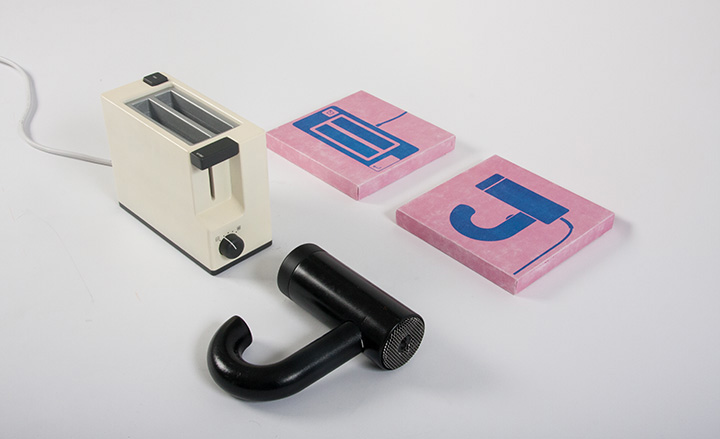
Jungha Lee's hairdryer and toaster prototypes are designed to make these appliances more user-friendly. For the hairdryer, he asked: 'How to make a hairdryer easier to hang?' resulting in the umbrella-shaped handle. And for the toaster, the burning question was: 'How to make a toaster easier to cancel?' And so the keyboard-inspired 'enter' lever is counteracted with an 'esc' button on the top in case a quick eject becomes necessary.
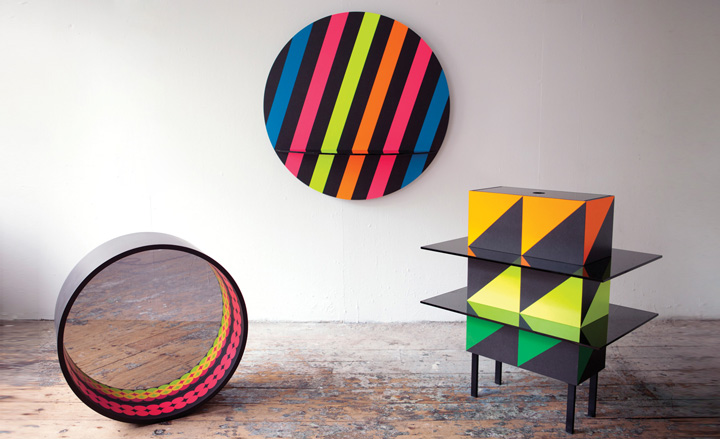
Primarily working with semi-translucent material, Kim Thome's shelf looks at the behaviour of reflection through the use of colour, shapes and a two-way mirror. 'Reflective and translucent materials offer visual scenarios that can be explored and choreographed by the viewer,' she says. 'The semi-transparent and reflective material is manipulated by naturally illuminated shapes in the fore and background of the object in such a way that the graphic aesthetic becomes something of a relational experience with the viewer.'
Laura Nelson's iron neatly addresses storage and convenience concerns. Eliminating the need for an ironing board, two aluminium plates apply heat and pressure to both sides of a garment thanks to a hinge mechanism, much like the ones in hair straighteners. It works particularly well for panels and tricky spots, such as collars and sleeves. And a heat-resistant sleeve means it can be stored away neatly even when it's still hot.
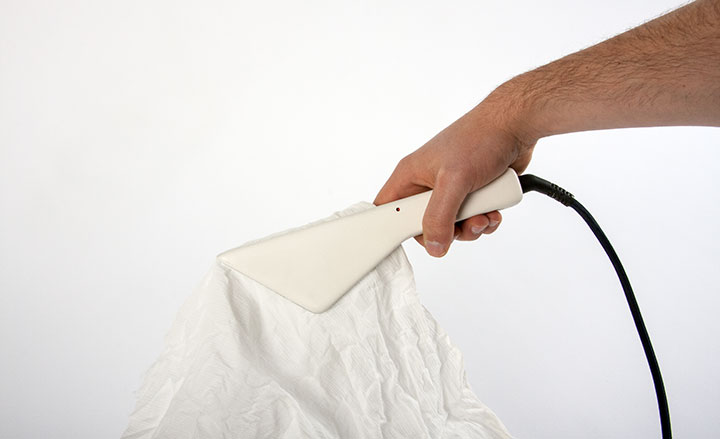
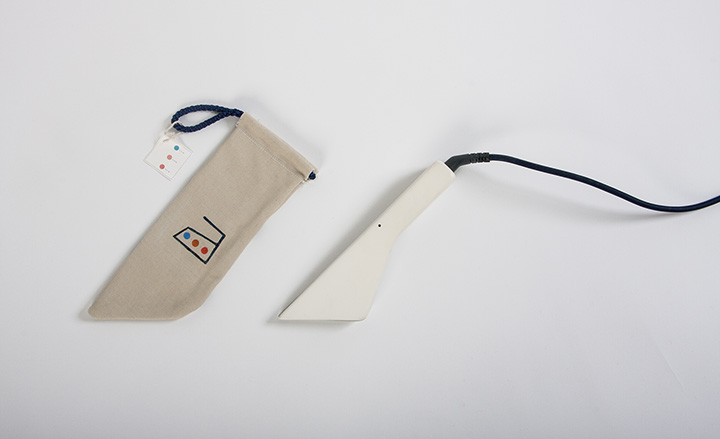

Lola Lely is a designer who lives and works in East London and studied under Tord Boontje. 'I have a long-standing fascination with colour, pattern and form. These elements are always present in my work and in 'Water Marble Stool', I marbled some turned, solid timber stools. Marble can transform lowly materials and objects into something beautiful and unique, elevating their perceived value.'
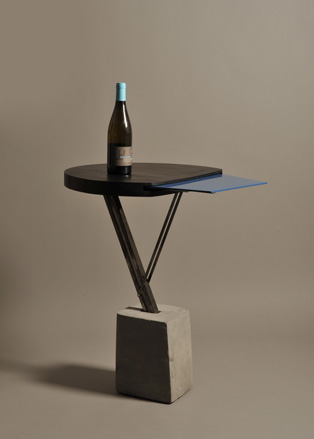
In her project Le Poids des Choses (The Weight of Things) Mathilde Pellé sought to explore the limits of usefulness in a piece of furniture. Thus her table extension, although seemingly of service, may, in fact, destabilise the table depending on the weight of the item placed on it. 'My vision of design is about disturbing people's habits to create a small rift in their behaviour. I want to bring questioning and daydream-like qualities to everyday objects.'
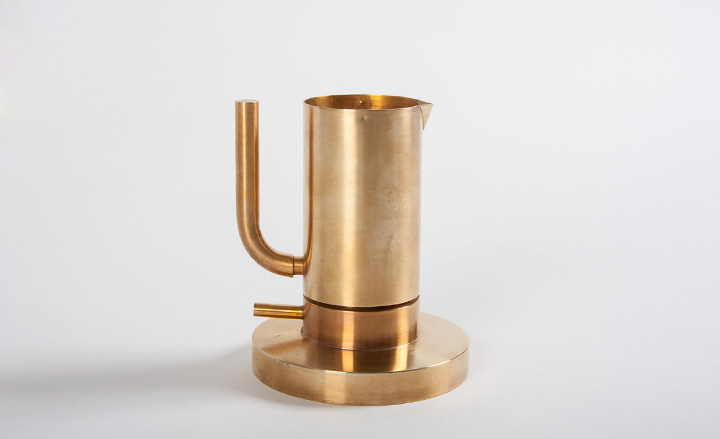
For his 'Barista' stove-top espresso maker, Max Neu's aim wasn't to reinvent the coffee-making process, just the handling and appearance of the device used to make it. 'My aim is to try and increase the emotional value people have for the objects they use. I wanted to design an object that has the potential to become a beloved part of someone's morning ritual.' With its shapely design, it certainly inspires us to wake up and smell the coffee.
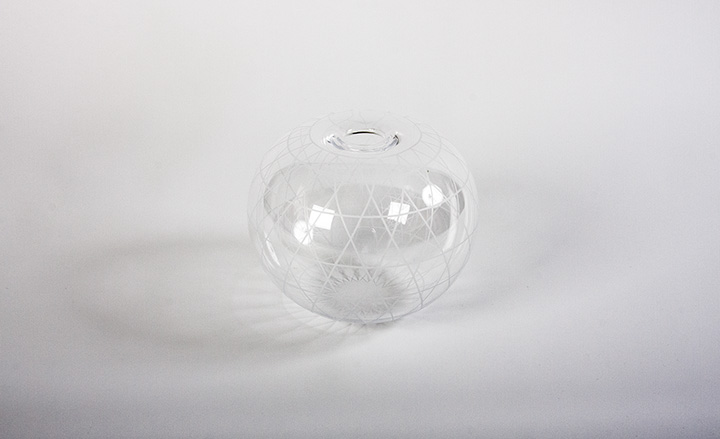
The Japanese picture scroll, emakimono, provided the inspiration for Naoki Otsuka's glass sphere vase. 'The picture scroll is a form of traditional Japanese painting depicting many objects, architectre and artwork that have often disappeared in the modern world. I wanted to revive one of the tobjects from a scroll and so turned it into this flower vase,' she says.
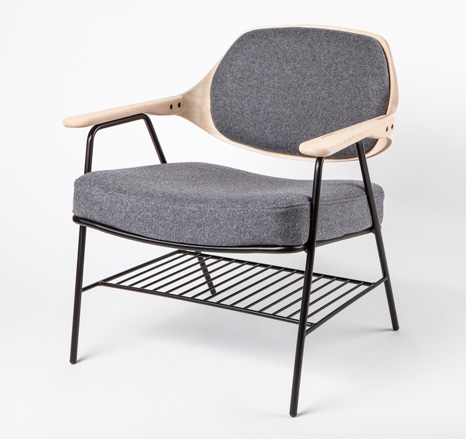
Oliver Hrubiak's 'Finn' lounge chair was inspired by midcentury Scandinavian functionalism and is an elegant combination of ash and powder-coated steel. It was awarded a New Designers Award by UK department store John Lewis in 2012 and is now being developed for retail there in the summer. 'I want to design products that mix functionality and aesthetics, and can adapt to changing trends and interior styles,' says Hrubiak.
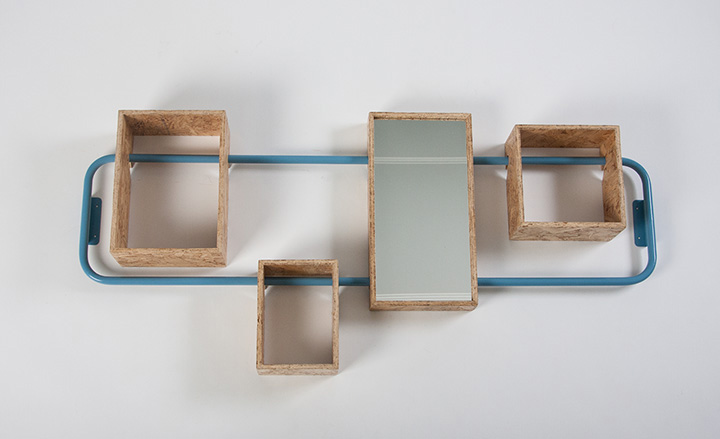
Rory Thompson describes himself as a material and process-led designer. 'I love to test, question and find new possibilities and I want people to interact instinctively with my products like this modular shelving unit. I try to achieve this by stripping things back to their basic components. There is real elegance in this form of simplicity, but it is deceptive, as a huge amount of time actually goes into the design.'
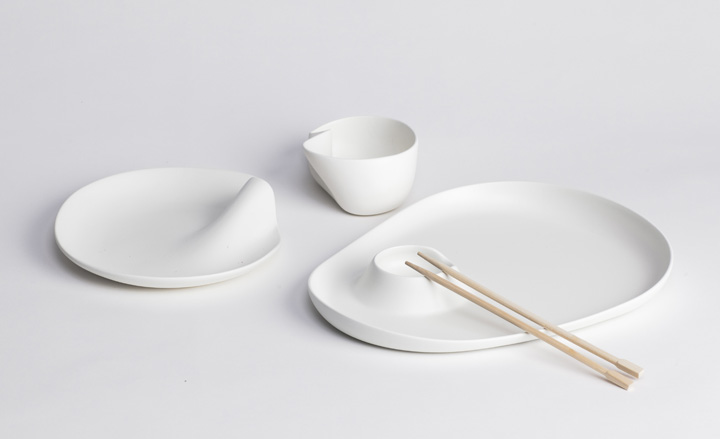
For her 'Vessel of the Senses' plate, Sandra Cohen Callman set herself the task of trying to heighten the emotional experience of food. 'I used the body, water and flow as my points of departure. A plate and a cup become a part of the body - a kind of extension of the hand - and demand physical contact in order to fulfill their function, thereby encouraging a more mobile manner of eating.'
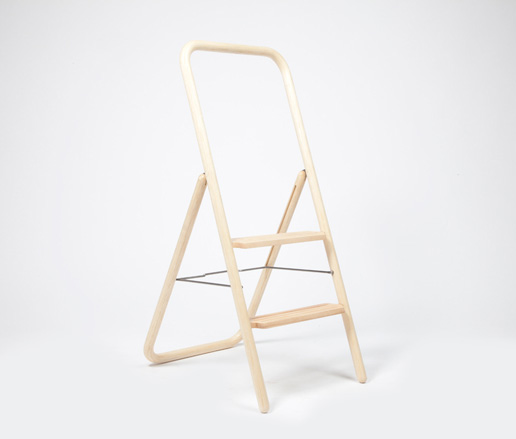
Sina Sohrab’s wooden stepladderis an appealingly clean and elegant interpretation of the household staple. ‘I am interested in objects that become invisible as they satisfy their functions,’ says the Iranian-American designer. ‘With my work I am attempting to create products that are able to convey their utility directly, while fulfilling the needs of the user quietly.’
Debuting her S/S13 collection this year at New York Fashion Week, Aina Beck drew her inspiration from the pioneering work of 1960s American animator John Whitney and Jim Henson's eccentric early sketches. Her fascination with geometry and kaleidoscopic prints led to a collection that includes oversized printed knitwear, foiled colour-shifting patterns and sheer floor-length tulle dresses covered in asymmetrical shapes. She now has plans to launch her own brand.
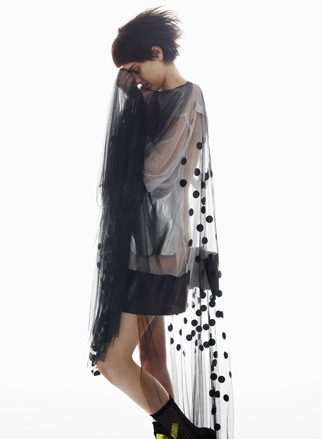
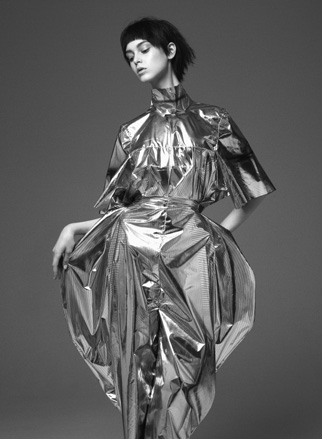
Cosima Gadient challenged the traditional catwalk format with a more intimate approach for her debut collection, seating the models among the audience on raised chairs. She paired flattering hourglass dresses with cinched bomber jackets and baseball-style hats, matching hyper-femininity with strong masculine sportswear. Using lace, sheer tulle and floor-length fringe to soften the look, Gadient's tight colour spectrum of white, dip-dye canary yellows, shimmering silver and dense blacks lets the technical draping, cuts and fluid silhouettes take centre stage.
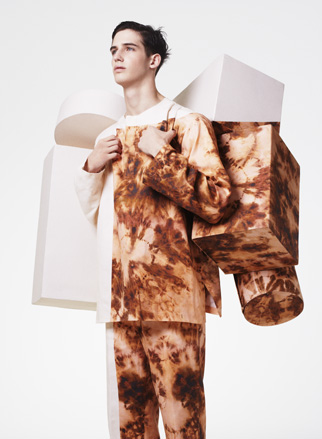
Pushing menswear at a conceptual and physical level, Craig Green is already gaining industry recognition with approving nods from the likes of Walter Van Beirendonck and Henrik Vibskov. This September marked his inaugural S/S13 show at London Fashion Week, with a collection that matched a boyish imagination with New Age tribal mysticism. Green favours monochrome colours with a few digital prints to complement his precise, calculated tailoring.

Osaka-born, London-based Hiroaki Kanai plays with volume, shape and one-colour outfits to challenge our perceptions of menswear. A year-long internship for Haider Ackermann during his studies clearly left its mark judging by his London Fashion Week S/S13 show. Its mixture of proportions, including cinched jackets, high-waisted cropped trousers and voluminous sleeves was futuristic menswear at its finest.
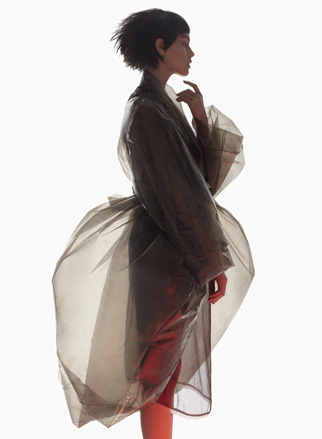
Swiss designer Jennifer Gadient creates voluminous pieces by blowing air into synthetic materials - transparent, colourless or brown PVC - and then moulding them into striking shapes. Her debut collection showcased translucent silhouettes in smoky hues over brown, gold and beige. In addition to synthetics, she used silk and velvet for a series of oversized sweaters, full body wraps and knee-length shell coats.
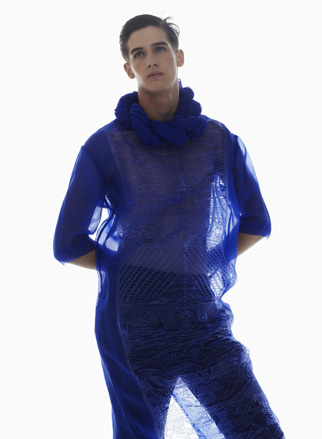
London-based Jie Lang's graduate collection is inspired by paper craft and packaging shapes, and is rooted in interfacing surface textures. Using a limited palette of black and blue, Liang explores the creative possibilities of man-made fabrics in layered looks, including laser-cut, abstract patterns on some of her pieces. Her avant-garde shapes include cropped and pleated jackets, sheer knee-length shirts and head scarves, with an overall focus on durable and functional menswear.

Peruvian Lucia Cuba's debut is both a fashion collection and social activist project, drawing attention to forced governmental sterilisation in Peru. Silhouettes are inspired by traditional Andean polleras (skirts), in maroon, yellow, cream and black, and she has embroidered fragments of victims' testimonies, political speeches, legal documents and research papers onto the fabrics, literally wrapping the wearer in information and creating fashion rooted in social awareness.
In naming her debut collection 'Bowerbird', Manon Kündig acknowledges the preliminary hunting and gathering that her designs require. Using online image resources, she created digital prints that resemble vibrant Rorschach tests. Blending seemingly random bits and pieces - a flower here, a cat there - Kundig's menswear label blurs the line between androgyny and other-worldly. Cropped tailored trousers, unstructured jackets and silk scarves adorned with faux fur, sequins, synthetics and lace create a mix of textures, colours and images that allure and intrigue.
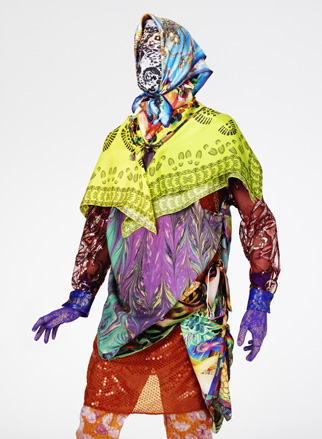
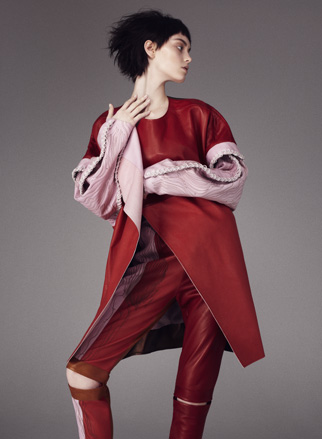
A bold sense of colour, clever use of fabrics, textures and complex detailing makes Canadian Ryan Mercer's womenswear collection a cut above the rest. Mercer has used a narrow selection of fabrics, maintaining a strong focus and clear direction. Panelled leather crop tops and pencil skirts in lambskin and snakeskin are held together by leather cord, while eyelets and lace add depth and structure to the perimeter of most of his garments. Demonstrating an assured sense of colour blocking, he used asymmetrical bands of neon yellow, deep orange and alabaster white strips, sometimes laser-etched, to striking effect.
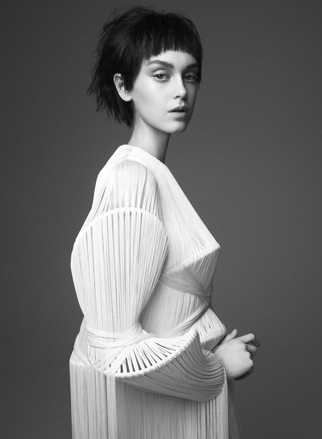
Yulia Kondranina has designed a highly technical collection, taking an architectural approach to the female form. She created radical shapes by wrapping fine viscose fringing around a flexible support structure. The internal mechanics and intricate design make for captivating pieces, while the black and white colour scheme allows the complex construction to shine.
Whether she is disintegrating gold or working with heat reactive metals, Alice McLean’s jewellery explores the expressive power of materials in transition. The London-based graduate subverts traditional notions of value with designs that vacillate in their physical form.
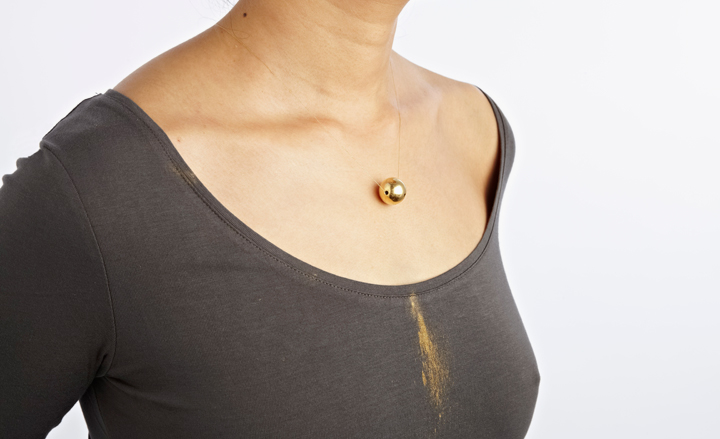
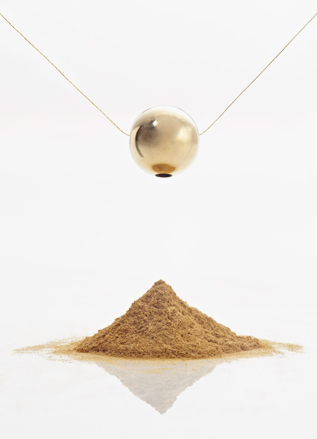
Caroline Kernick’s opulent creations may look like high jewellery pieces but they are in fact handcrafted from layers of paper, embellished with gouache. Showcased behind glass on a gallery wall, they are designed to perplex and intrigue the viewer and act as a commentary on notions of luxury. An exercise in endurance, each piece takes a staggering 200 to 300 hours to complete.
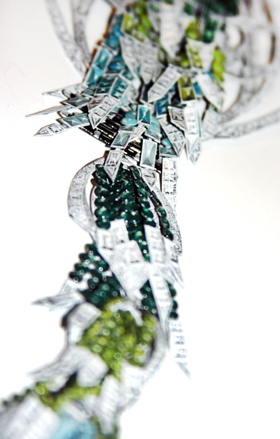
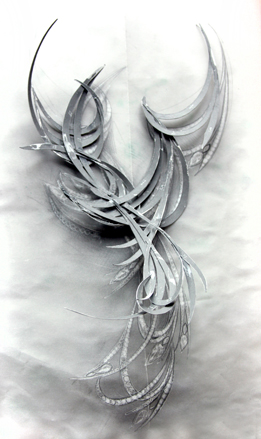
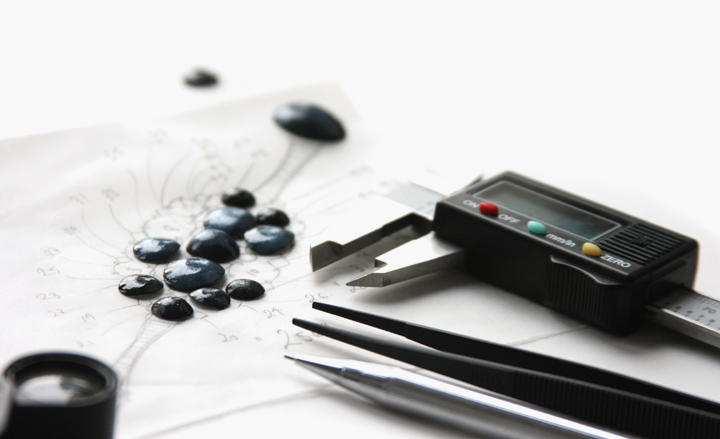
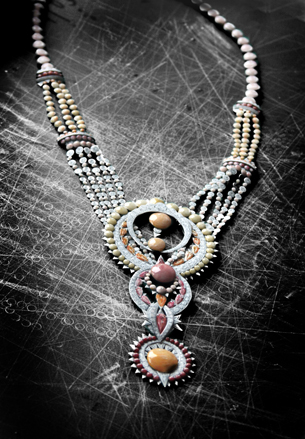
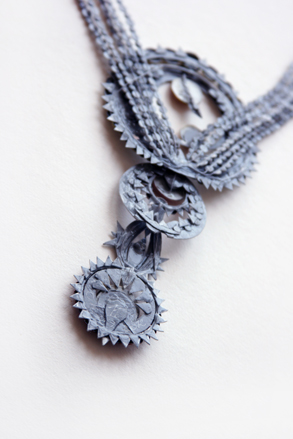
Bold sculptural form is the foil for Kirstin Dunn’s seemingly delicate creations. The jeweller and silversmith might have an obvious instinct for light and tone, but it is the combination of materials and forms - such as 'the juxtaposition of lightweight plastics with metal structures' - that is central to her vision.
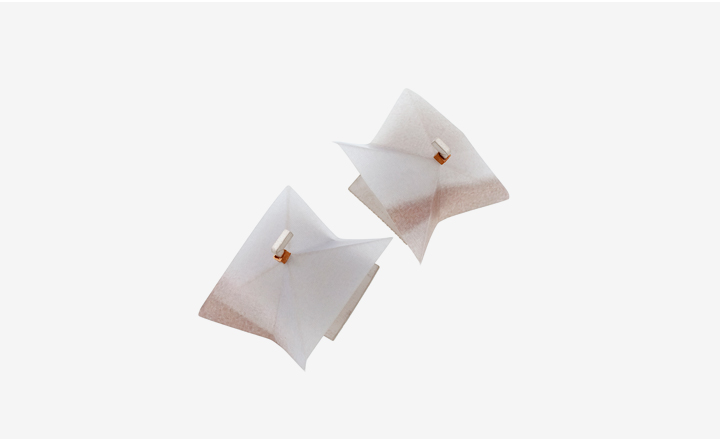
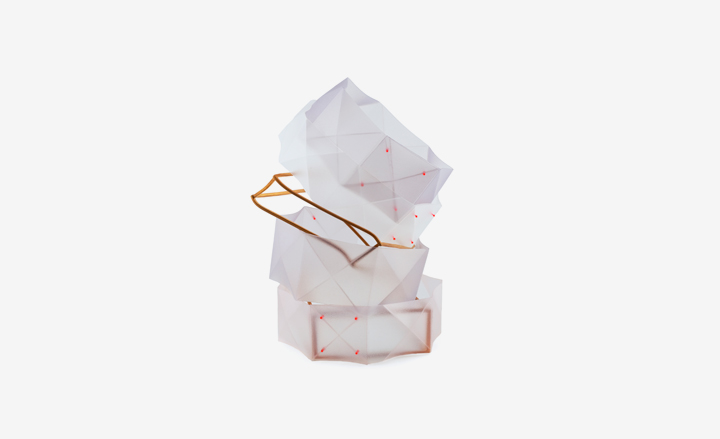
The urban environment - bridge frameworks, building sites and scaffolding - heavily informs Laura Templeton's designs, hence her tendency to view each piece as 'a miniature construction in precious metals'. Inspired by a 'juxtaposition of bold, straight and repetitive geometric shapes against the softness of the organic human form', her deft handling of form and function gives this Scottish newcomer's jewellery instant wearability.
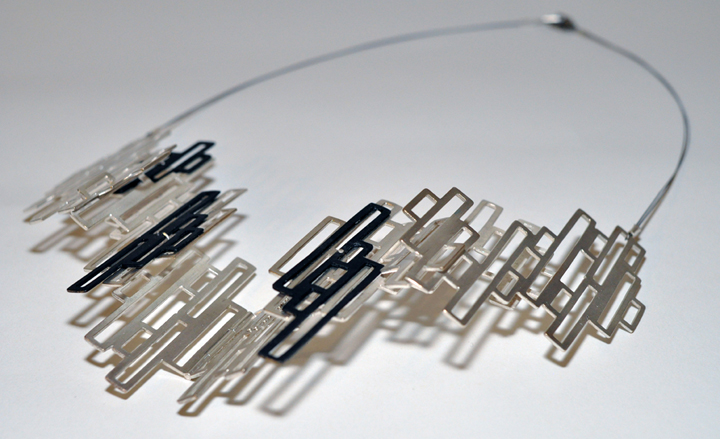
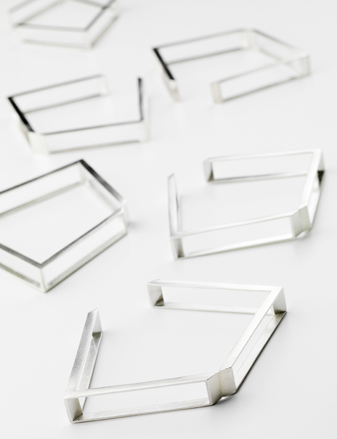
A fascination with metals and their properties led jeweller Sophie Ellis to create pieces that are not necessarily as simple as: 'You wear it.' Hence her decision to make watches. Her pieces, which are cut in half to reveal inner mechanics, or are completely deconstructed leaving just an outline, highlight the compelling nature of horology. Hers is a modern attitude towards time: 'The irony of a watch being something you need but probably never understand amuses me.'
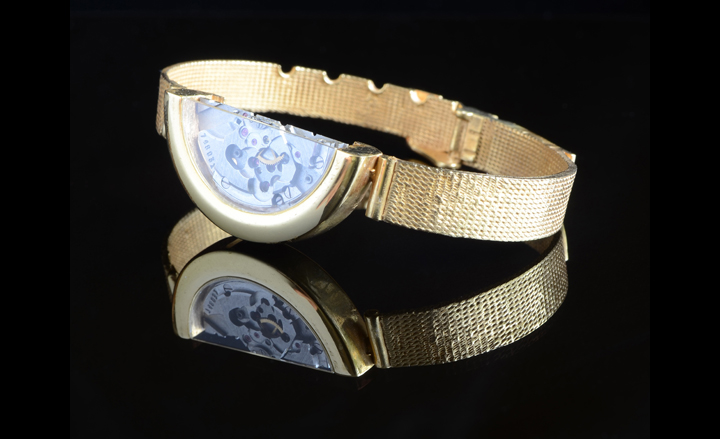
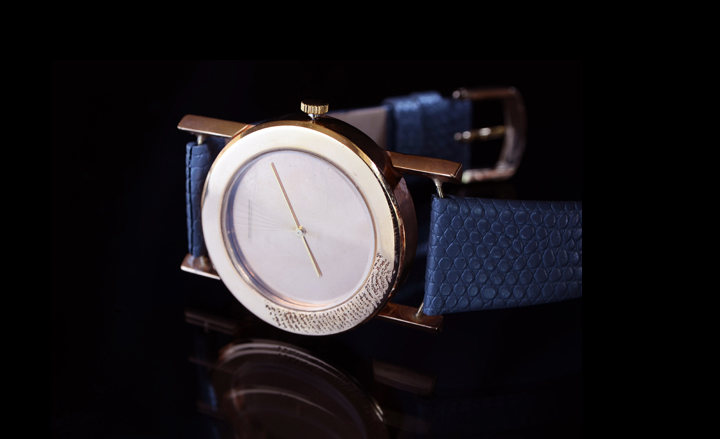
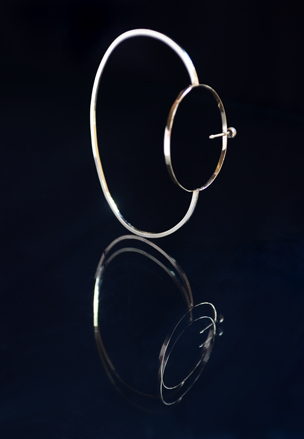
Collin Cummings created a package for the Savannah Bee Company's organic raw range inspired by the dichotomy between the aesthetic and the functional nature of honey. 'I have always loved how, despite involving such an old and somewhat industrial process, everything about honey is so beautiful,' he says. 'I aimed for a simple message and the chance for discovery'. His packaging incorporates glass bottles embellished with bee-inspired graphics, topped with wooden lids, and labeled with strong typography that offers the consumer information and serving suggestions.
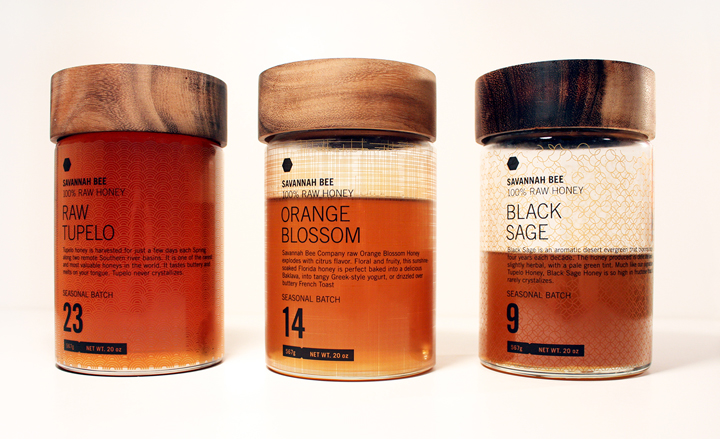
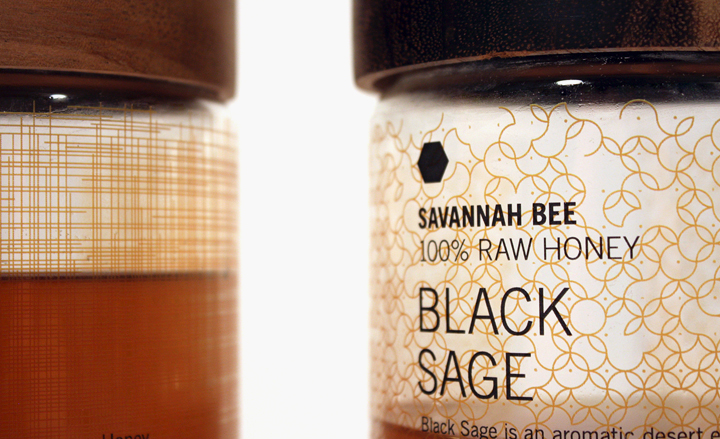
With a strong, colourful graphic element running through all of her graduate projects, Dafna Aizenberg's 'Hybris' is no exception. She has designed a cosmetics range inspired by forbidden treats and decided to use elements of confectionery packaging and branding for the collection. 'My purpose was to reflect the desire and natural, almost sexual, craving people have towards candy and apply it to cosmetics.'
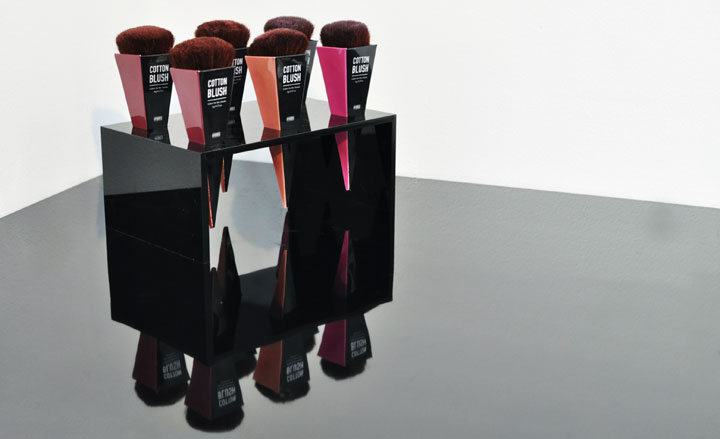
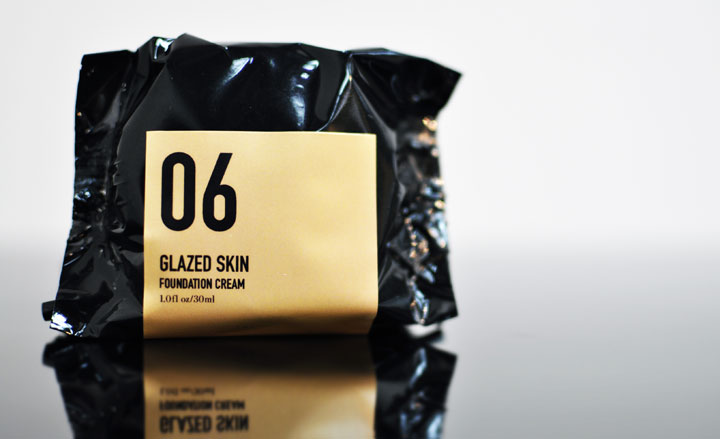
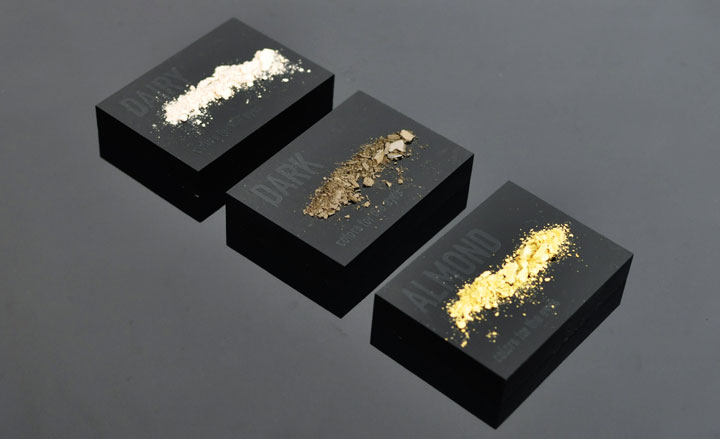
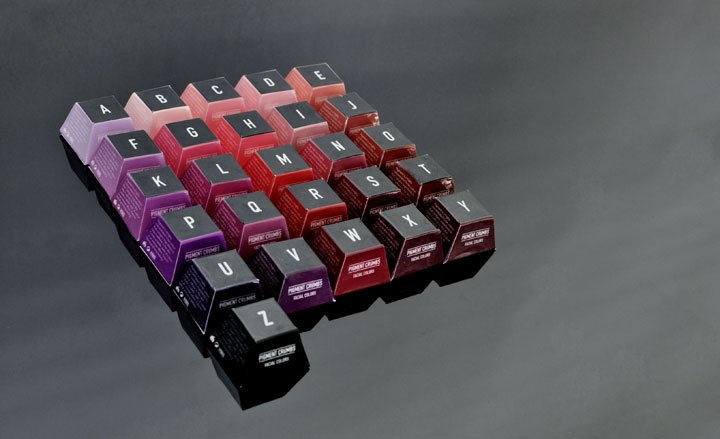
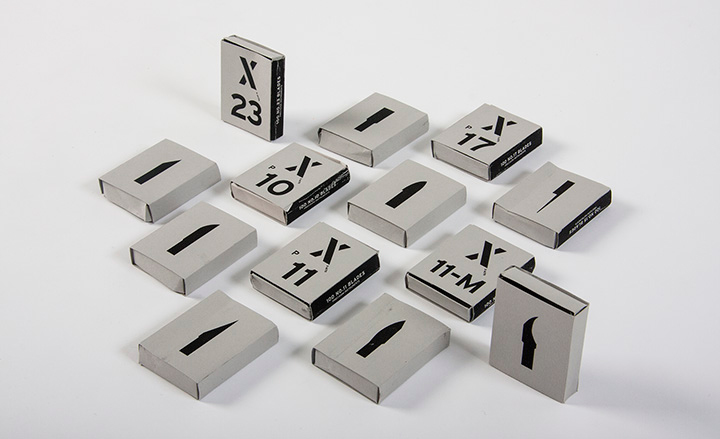
Aiming to transform an X-Acto blades box from a simple container to a visual guide for the consumer, Heesang applied the aesthetic codes of the Fluxus movement to a practical, fuss-free design. 'I created a package design that provides information and focuses on practicality, with a neutral colour palette that allowed me to emphasise the hierarchy of the blades.' The stripped-down graphics give the monotone patterns a minimal look, with the blade number on the front, and an illustration of the blade's shape on the back.
Determined to combine eco-efficiency with simple yet striking aesthetics, Maria Milagros Bouroncle Rodriguez has redesigned the tea sachet. The minimalist black box opens to reveal an explosion of colourful sachets, each one a piece of paper folding art in itself, and able to be recycled. 'Drinking tea is an uncomplicated, delicate and tasteful experience of discovery, and I wanted the packaging to reflect this journey,' she says.
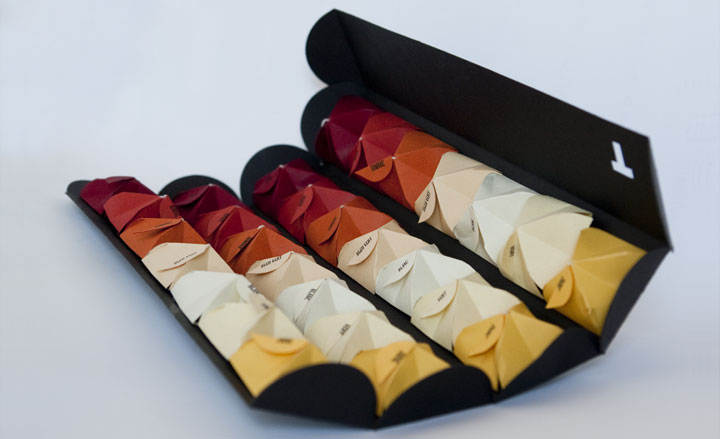
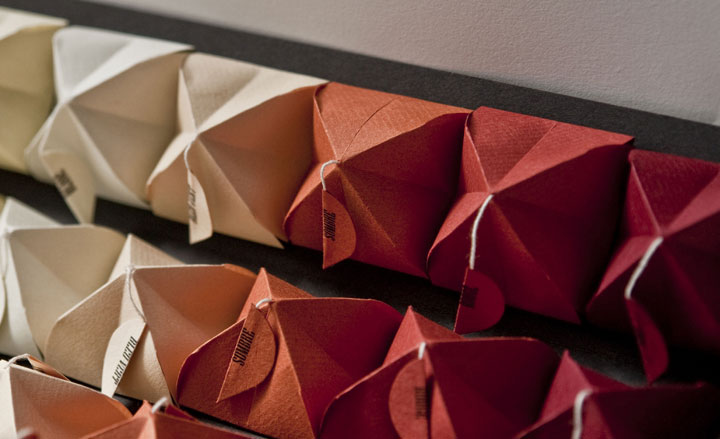
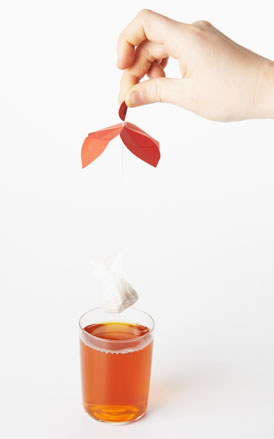
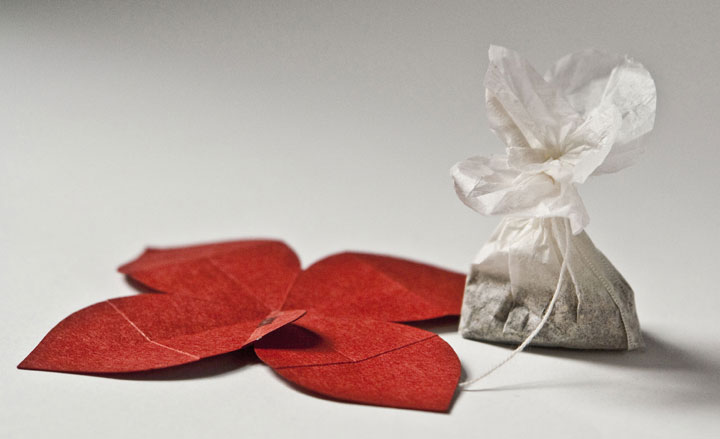
A collaborative project between three students, the 'One Eighty' design began with a fascination for triangles. The sculptural packaging is made from a structure of tessellating triangles and changes shape as the product is used. As they say: 'Products should be simple to manufacture, yet with a striking and effective concept behind them. They should be both aesthetic and functional.' The three have now formed their own creative studio.
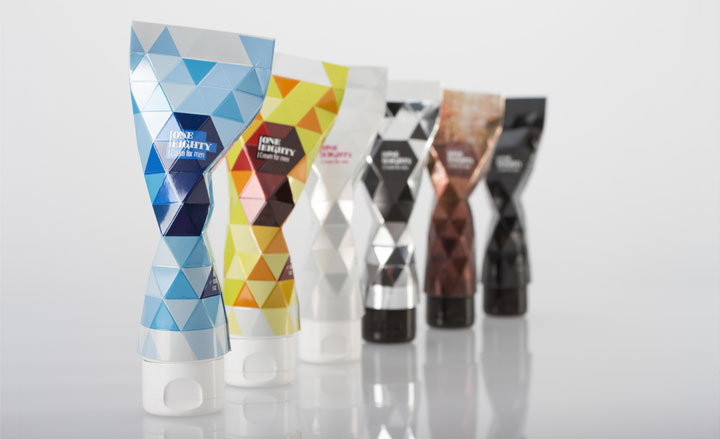
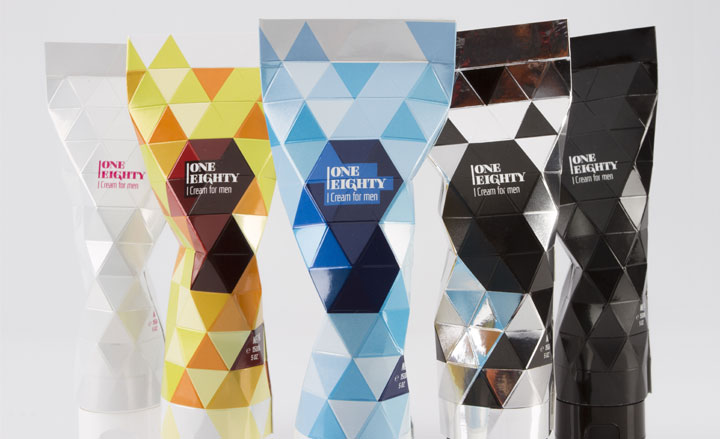
'Every project has a different problem for the designer to solve. I prefer the simple solutions,' says function-focused Otília Erdélyi. The elegant, one-piece egg box is made from natural microwaved cardboard and is not only practical, but also requires much less material than traditional cartons. 'My goal was to design an innovative package using a small amount of material. You just get the eggs out by taking off the sleeve and pulling back the top side.'
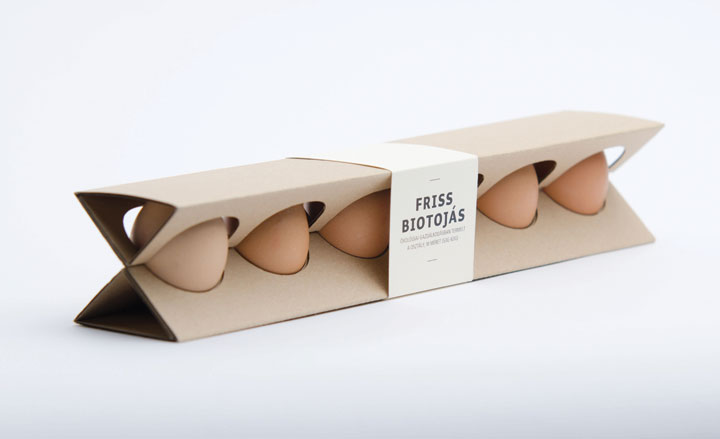
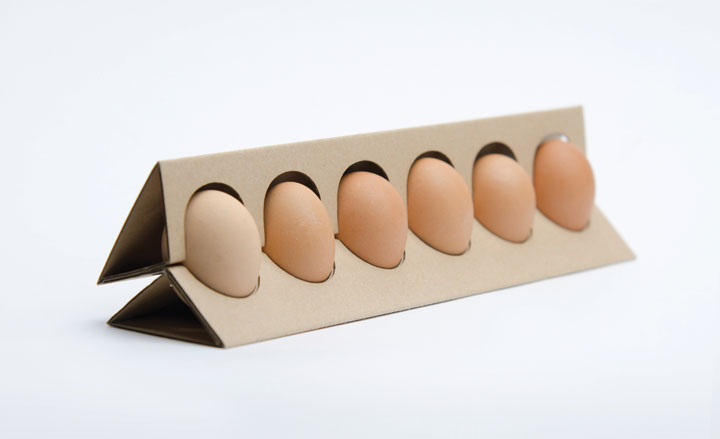
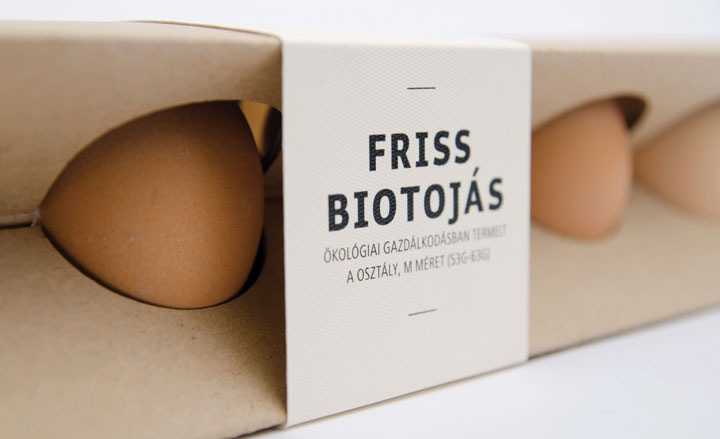
Inspiration for Keren's seafood packing came from varied sources: 'working in a Japanese fusion restaurant, the daily fishing at the port in Jaffa, seafood restaurants that are scattered throughout Tel Aviv, and of course, my love of seafood,' he says. Ron created a simple, practical and informative design. The Styrofoam package protects the raw content, keeping it fresh, and the red label is illustrated with details about the seafood, cooking equipment, as well as culinary and refrigeration advice. Each pack comes with tools, as well as detailed instructional cards that promise to turn shellfish skeptics into seafood chefs.
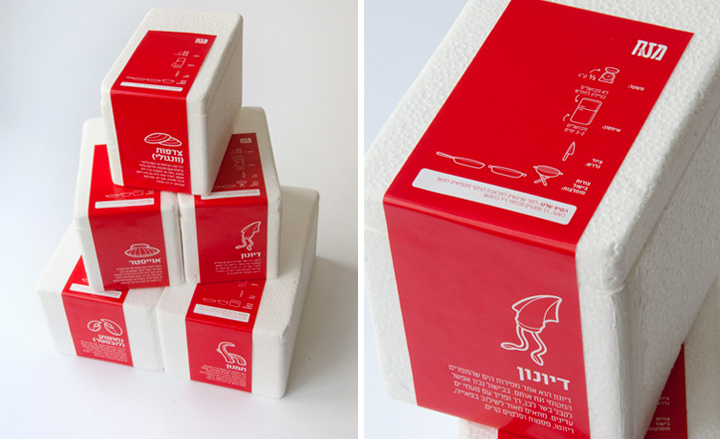
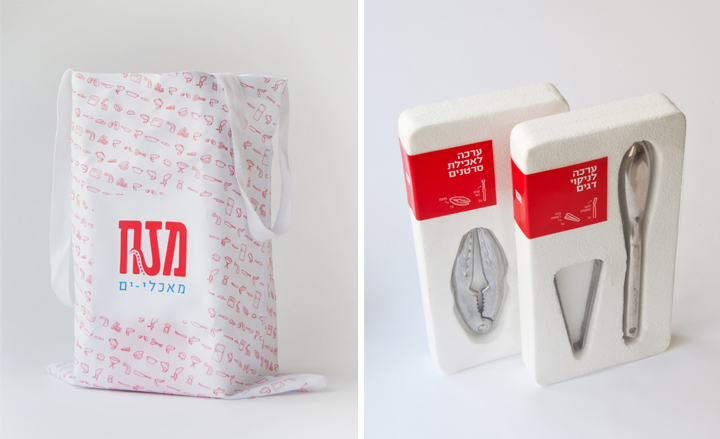

When designing the packaging for premium Belgian beer brand Mercator, Illevold drew inspiration from the ship of the same name, built in 1936 in Ostende. Interested on the structural elements of the ship and how they transfer into beer packaging, she decided to focus on the rope that holds the whole ship together. 'When the rope became the main idea, everything else had to be really subtle,' she explains. 'I etched nautical objects on the bottles, stamped the lid with the same pattern, and changed the label into a "luggage tag", making the experience of drinking the beer a journey'.
A weak spot for pasta and Djarov's yearly travels to Italy were the building blocks for his La Forma Saporita packaging project, developed for his university thesis. 'Being there and enjoying all of it in person encouraged me to create a special brand that encapsulates my love for Italy. Djarov devised a monochrome design with vintage details that walk the line between nostalgic and modern. The project includes high-tech elements, with a smartphone app that enables you to find the nearest stockist, gives cooking tips and even helps you to measure the perfect portion.
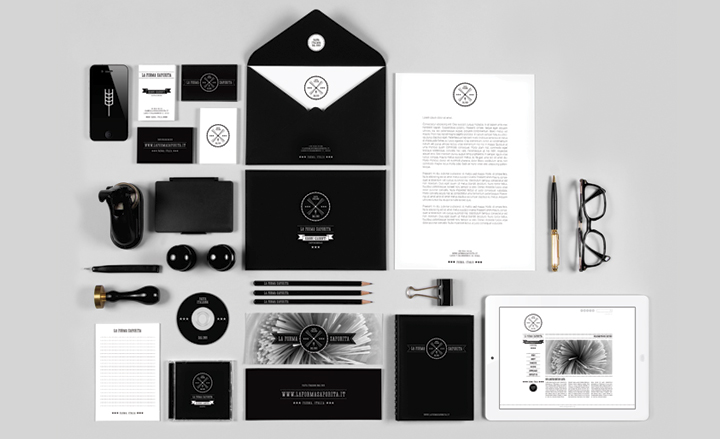
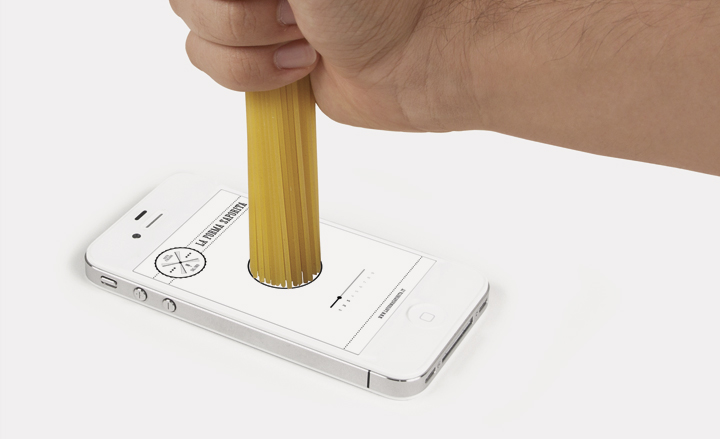
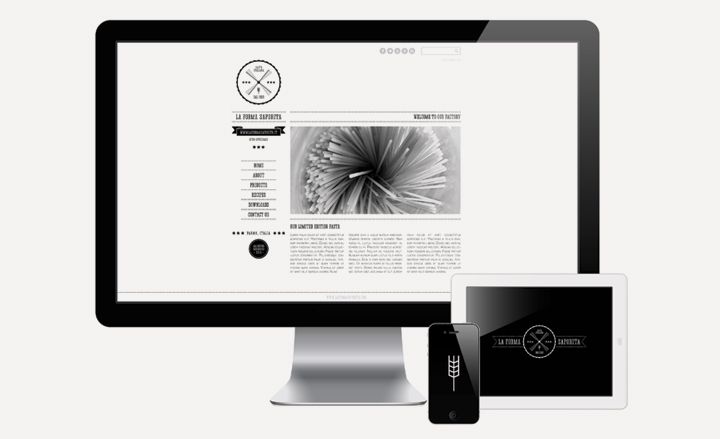
André Giesemann's graduation project was called 'Attrappe: Reality and Cheating in Photography' and featured mock rooms that are in fact spaces in shops and museums. 'I wanted to create pictures that look like artificial veneers,' he says. 'I found rooms that looked like Potemkin villages. I wanted to review the reality of both the objects and the photography itself.'
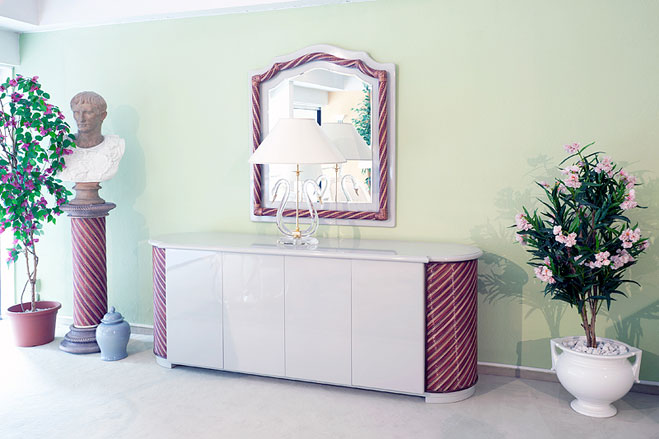
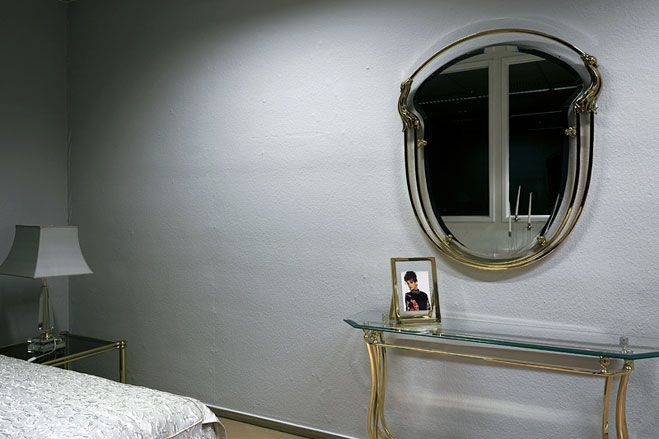
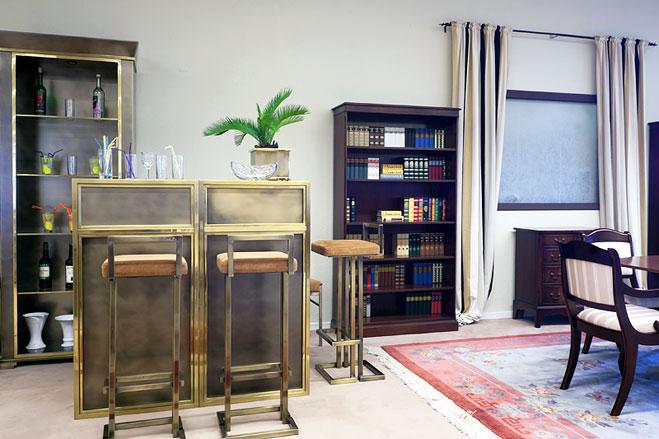
Antonia Basler is interested in photographing images and materials intended for mass production. 'This body of work focuses on objects found in dollar stores. Constructing scenes that examine the presence of the artificial in everyday life, I look to incorporate humour and references from art history in the composition and content of my work. The intent of the project is to create situations that obscure the function of a readily available product for the purpose of making an aesthetically appealing photograph.'
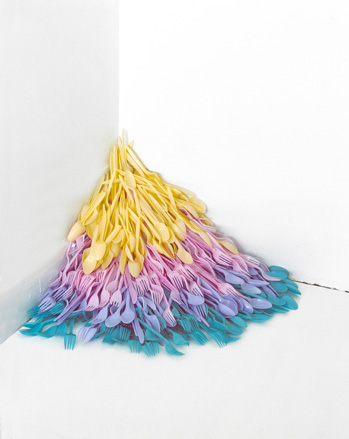

Emile Barret's images of bones and body parts in jars, displayed against striking gothic backdrops or Hieronymus Bosch's Garden of Earthly Delights, are taken from a three-folio project entitled 'A Contemporary Atlas of Human Body Process'. 'The true body does not exist in the representation,' explains Barret. 'For every representation is a metaphor of the body, every representation is a metaphor for life.'
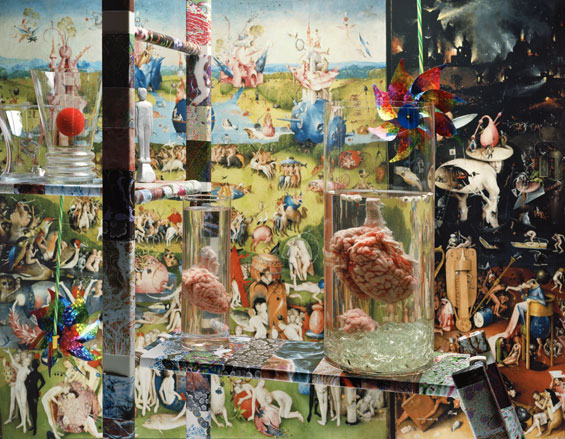
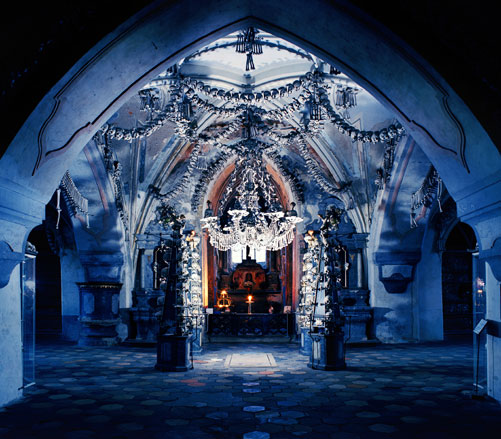
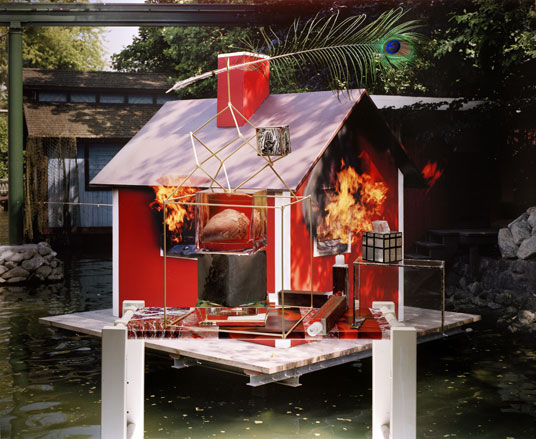
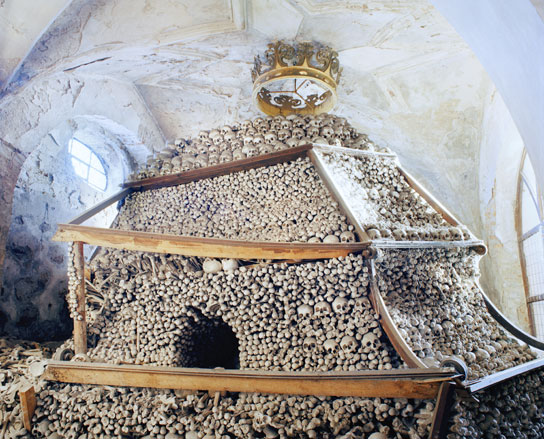
'It starts with a little inspiration,' says Ester Grass Vergara. 'I sometimes go looking for it, but most often it just hits me in the face. The way a woman crosses her legs or the sight of decaying fruits, I register it and save it for later use. Whether I'm making a portrait or still life, I'm always looking for the things that are delicately abstract and possess a timeless essence.' These images are part of a fashion series inspired by the 1966 French film 'Qui êtes vous, Polly Maggoo?'
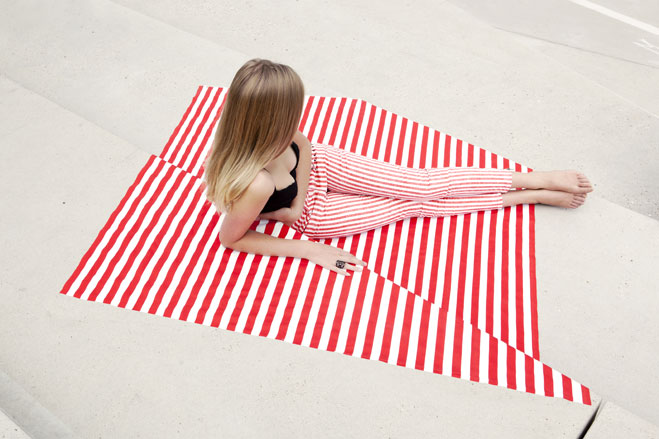
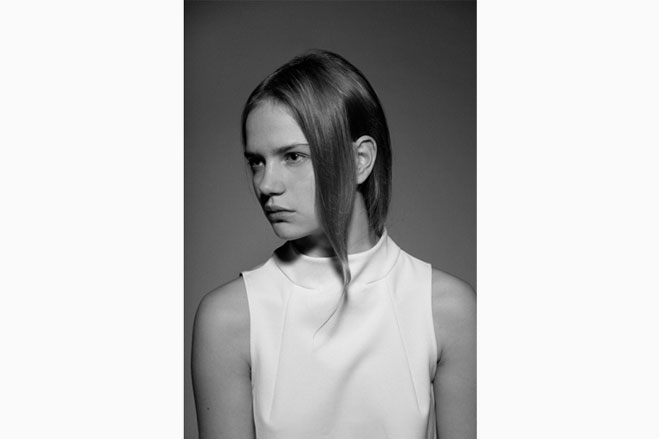
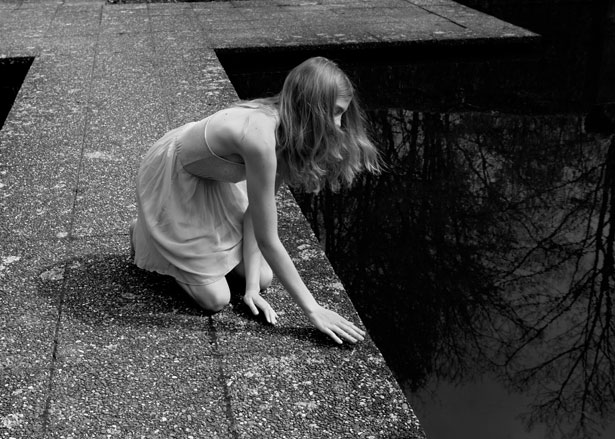

These images by Felix R Cid are taken from a project called the 'Bureaucracy of Love Stories', a title he came up with because of the complexity of taking the images with a large-format camera. The series features friends and family members. 'Those fantasies were based on personal experiences, but they were also related to social and political events in which metaphor and poetry were my biggest ambition.'
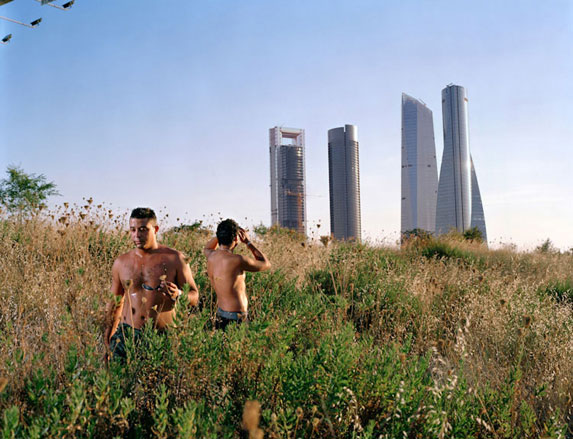

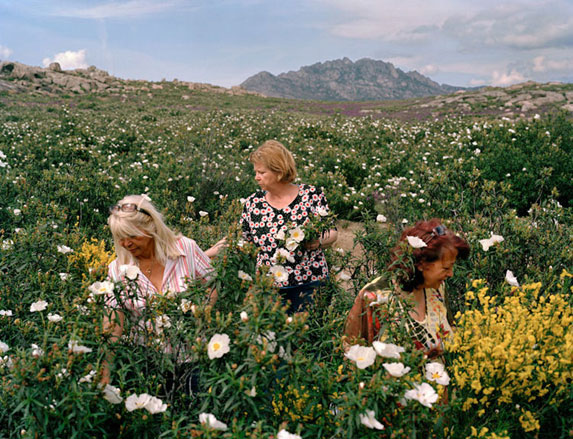
Philippe Fragnier’s Snowpark landscape photography project is inspired by the minimalist sculptures of artists like Donald Judd and Richard Serra. 'I'm really interested in the process by which an object become something new, like a sculpture. The Snowpark project proposes an analysis of landscapes modified by human intervention. An undefined landscape, dotted by the presence of functional, ephemeral objects, which acquire, by the eye of the camera, a hybrid status halfway between architecture and sculpture.'

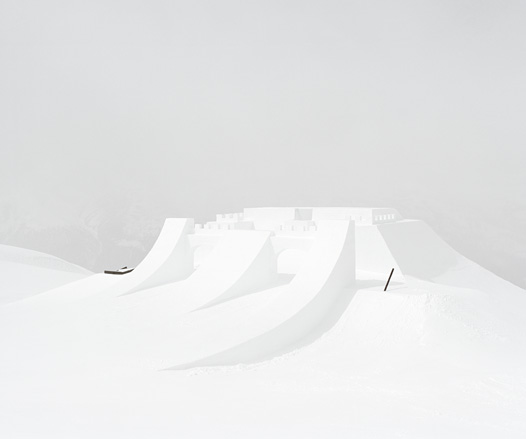
Adam Setter's project for Rolls-Royce eschews almost any conventional relationship with auto design. Instead, the glass-clad 'Monolith' is pitched at the plutocratic traveller, creating a sort of sybaritic carapace beneath which they can shuttle from penthouse to yacht. Setter's work is a statement about the emergence of a new, architectural language tailored at individuals, not the masses. 'When cities have removed the car, and personal transport seamlessly integrates with public, owning a private car will become a much bigger status symbol than it has ever been,' he says.
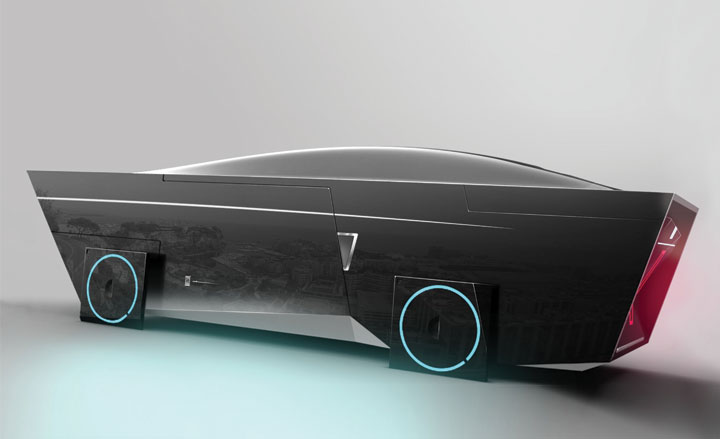
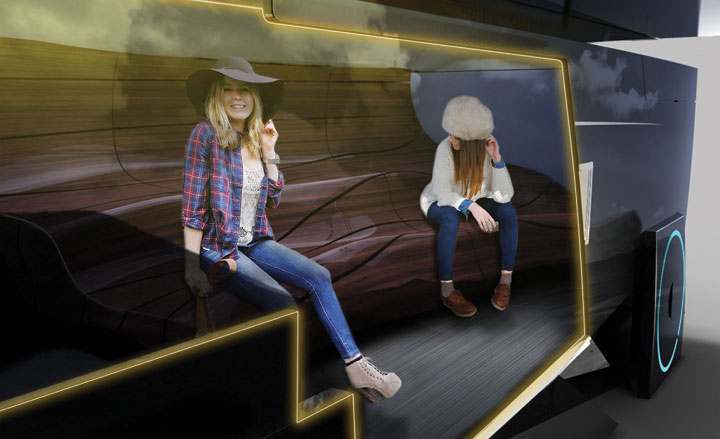
Bergström's 'Core Camper' is a world away from the swooping curves and insectoid forms of experimental concept cars. A mobile homage to the traditional Swedish holiday cottage, it fuses go-anywhere functionalism with the back-to-nature feeling of a 'cabin in the woods'. The concept features untreated timber, hard edges and a modular interior, far removed from the lavish, OTT interiors of today's campers, complete with opening walls and simple materials like plywood. 'It's basically a concept whereby less means you get more,' says Bergström, whose work features shades of Atelier Bow-Wow, Sou Fujimoto and the Eames House.
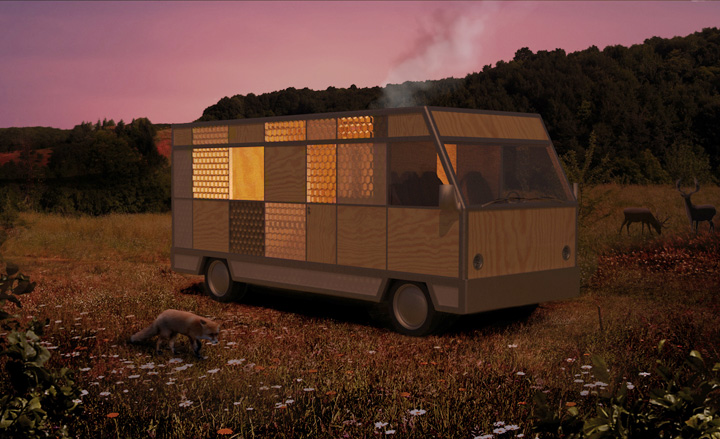
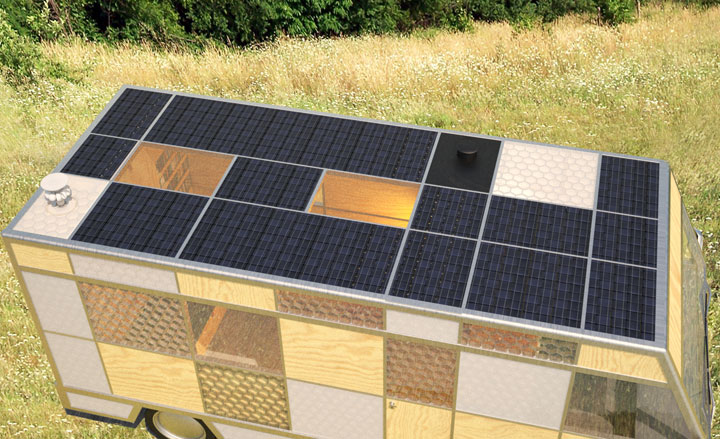
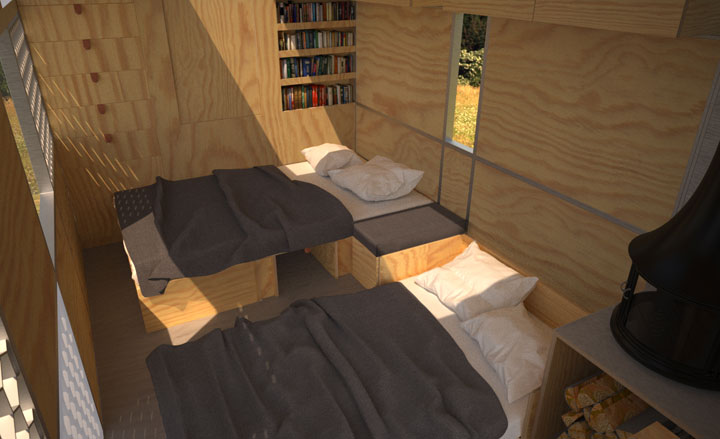
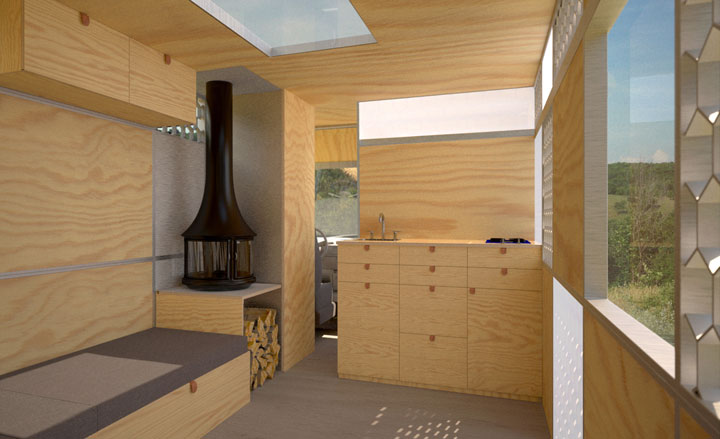
Shin's 'Frame + Twist' concept splices automotive futures with augmented reality, giving drivers and passengers a multiplicity of viewpoints from which to experience the road ahead, a frame that users can twist to their own advantage. Shin cites the combination of blue cheese and wasabi as a perverse form of inspiration: 'You hate it at first, adapt to the taste and finally love it. I was fascinated by this "twist" (change of perception) and wanted to see if a car could do that.' Frame + Twist is an avant-garde combination of design and technology, taking car design beyond the conventional.
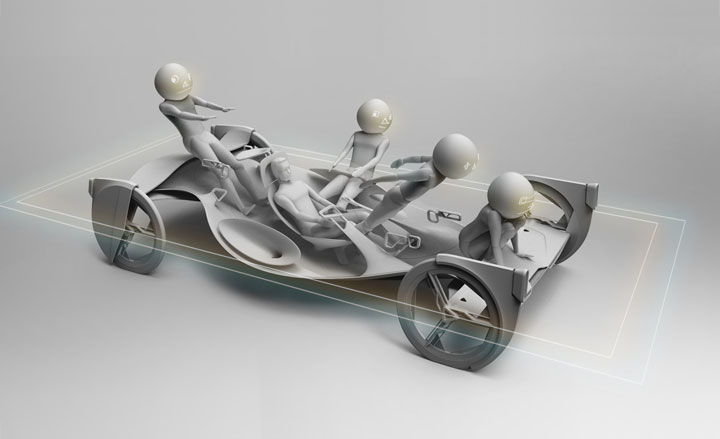
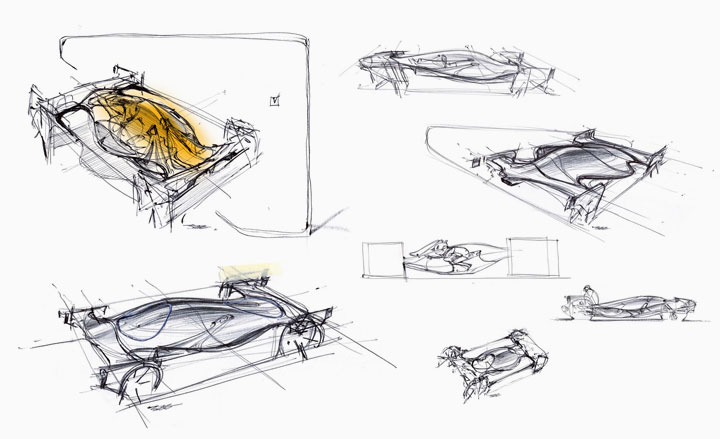
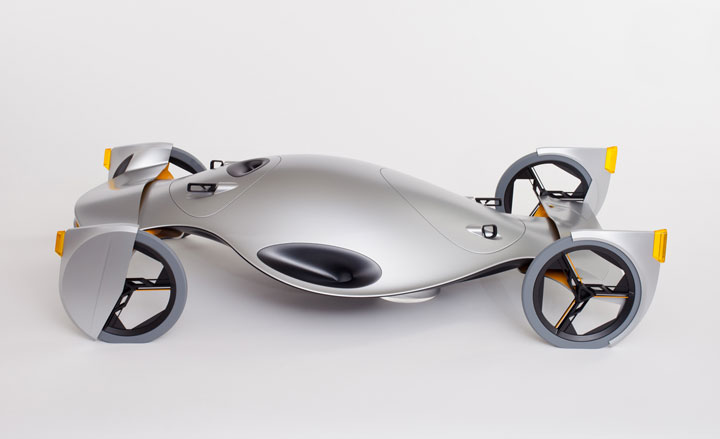
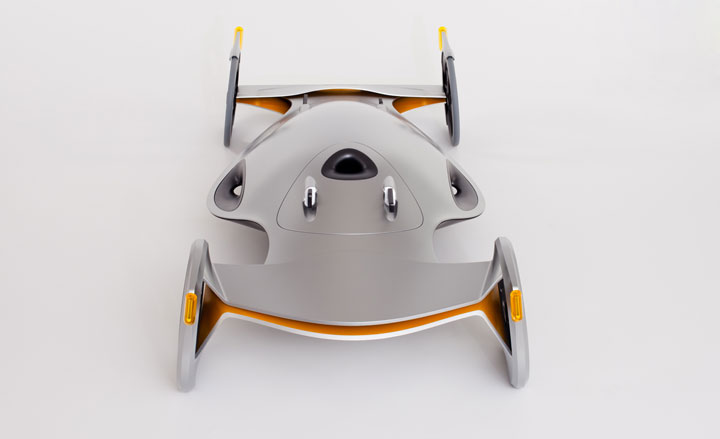
Liwen He is attempting to break out of the box with her 'Snake' project, which melds bold design with sinuous forms and new technology. The 'bionic' forms are 'inspired by flexible, stretchable snakeskin,' creating a machine that 'curls up' when parked to save space and expands to swallow a piece of luggage. Inspired by former BMW chief designer Chris Bangle, He envisions a city alive with her 'Snake' vehicles, pushing personal design preferences to the forefront.

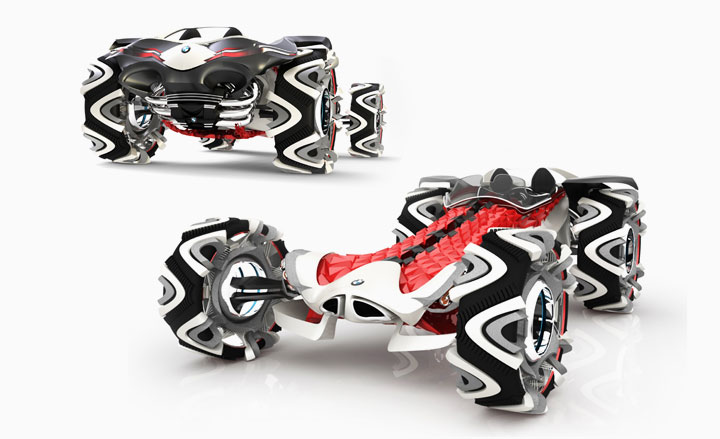
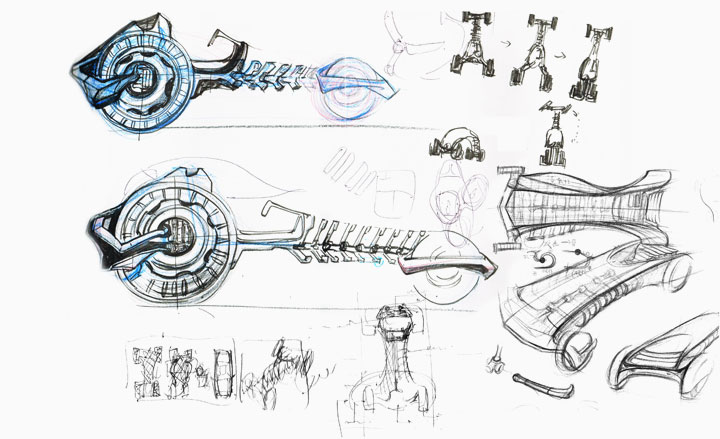
A lifetime's interest in cars and car culture drove van Rojj to the RCA Vehicle Design course. Drawing inspiration from nature - not just in terms of form and performance, but also exploring how a brand's 'DNA' can evolve over time - the designer hopes for a career helping 'serve society,' especially at a time when 'more intelligent thinking' is needed about the packaging, presentation and use of cars. His concept, the 'Rolls-Royce Shooting Brake', pushes the luxury marque into new territories, creating a monumental machine inspired by deconstructivist architecture and designed simply for 'traveling with your dogs'.
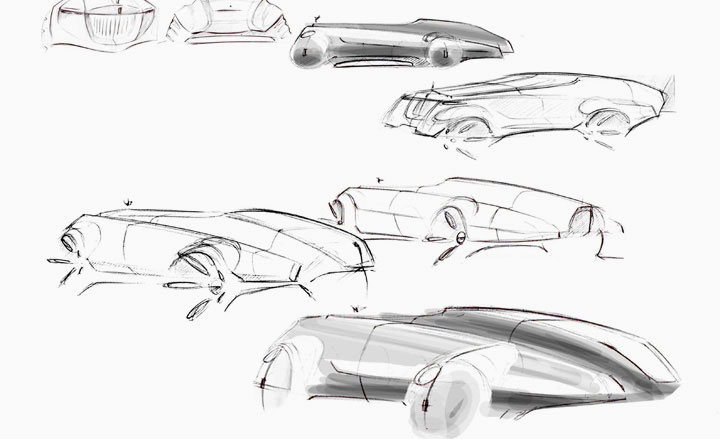
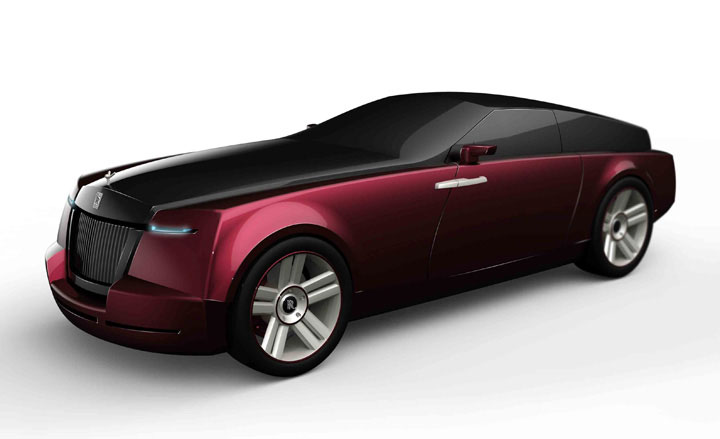
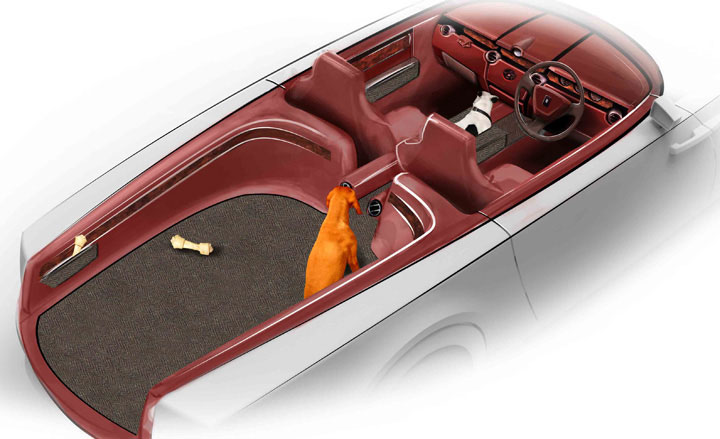

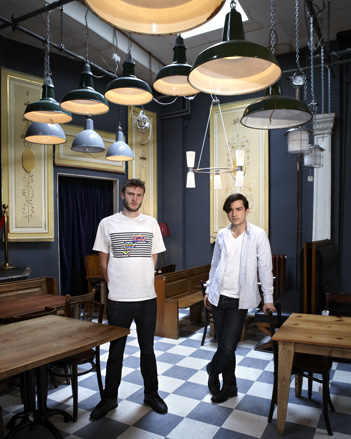
Boxer brothers Frank (left) and Jackson have created their own London-wide empire. The brains behind the Brunswick House Café in Vauxhall, which serves up seasonal, local fare among the architectural antiques at Lassco, the duo have since started independent projects. Jackson heads up Dalston posh diner Rita's, while Frank runs his eponymous Café and Campari Bar on the roof of a car park in Peckham and is now planning a new venture, the Peckham Hotel, a creative, cultural and events space.
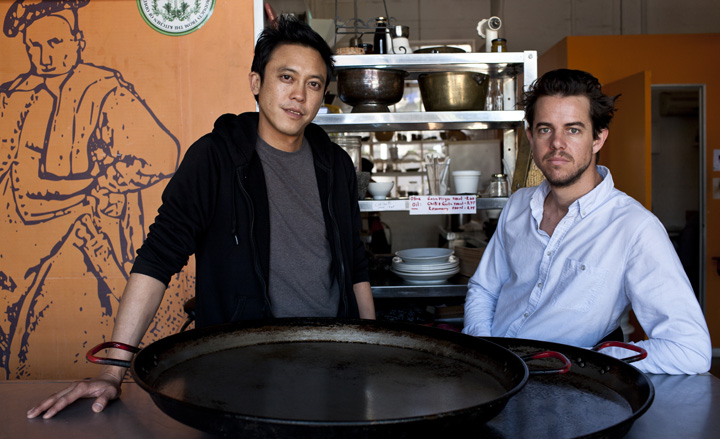
Andrew Kai (left) worked at Marcus Wareing's Michelin-starred restaurant at The Berkeley and the venerable Daphnes in London, before returning to his Cape Town roots and joining forces with journalist Matthew Freemantle to launch the Spanish-flavoured catering company Gusto. The pair are on a mission to grow all of their own produce and now have another branch in Johannesburg and plans for a deli in Cape Town, which will also be a test kitchen for their new culinary inventions.
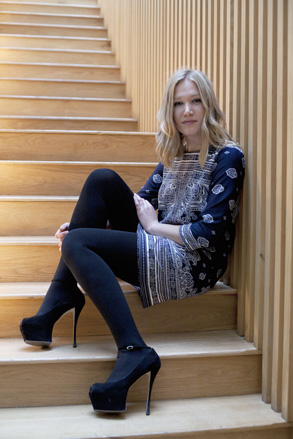
As a chef, food designer, stylist and director of Cream Creative marketing consultancy, Australian Linda Monique has her plate full. She defines her cookery as a mix of Japanese and French, with undertones of Middle Eastern and British classics, and her motto is 'redefining what it means to eat'. She is currently working on crafting SOS food ration packs for private jets, and previous projects have focused on reinventing and reusing products that are usually left aside.

Finnish culinary entrepreneur Matti Santala has run the A21 Cocktail Lounge in Helsinki since 2007, and has now launched the innovative 'mind dining' experience A21 Dining, pairing modern, all-natural Finnish cuisine with specially designed cocktails, all inspired by Nordic landscapes. Also studying for a PhD in strategic marketing and concept creation, Santala sees A21 as a personal research project, allowing him to fully appreciate the challenges of a business and put his concept creation to the test.
Adam Lucas, who is now an art director at Wieden + Kennedy in Portland, worked with fellow RISD student Andrew LeClair on the ongoing project 1 of 1. For the first series they printed their own graphic over pages taken from an art exhibition catalogue, 'transforming reproductions into originals and allowing them to recirculate as new single editions'.
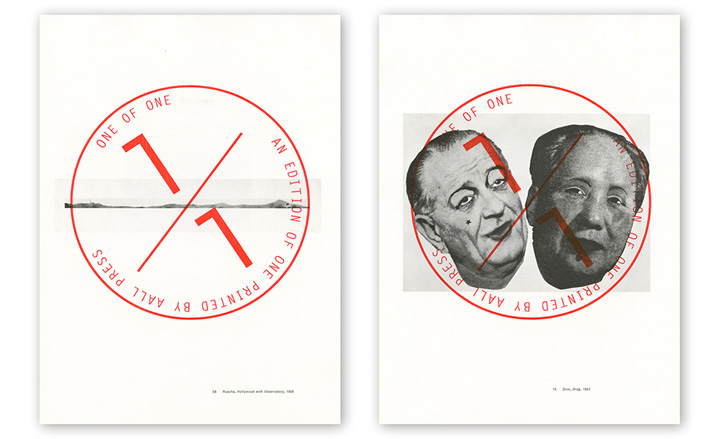
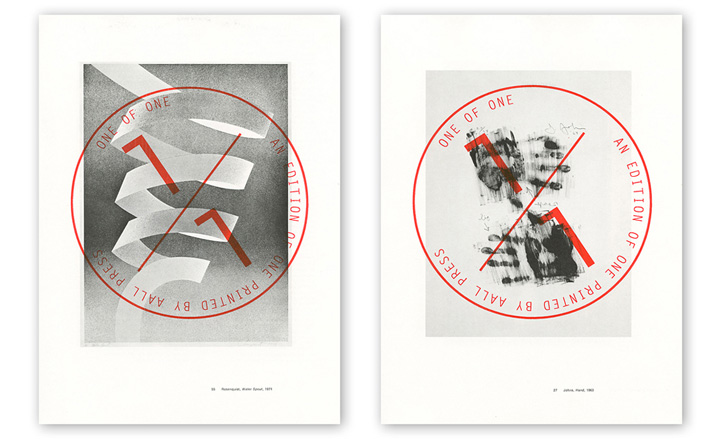
Winter's diverse LCC projects included 'Flamingo: What it Means To Be Beautiful' - a fold-out poster/leaflet featuring a mix of digital and screen printing - and 'Homographs', which plays with the two meanings of the word 'dove'. Since graduating, Winter has completed a series of internships, including a one-month stint at Wallpaper*.
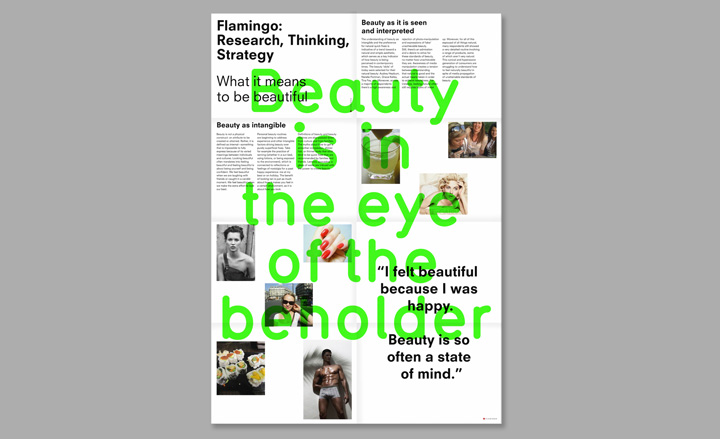
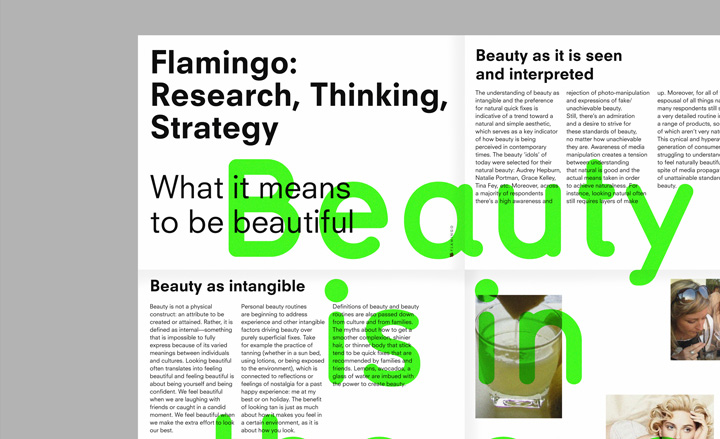
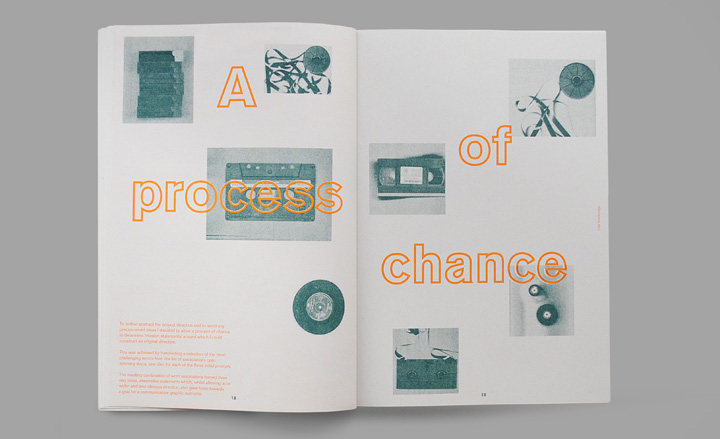
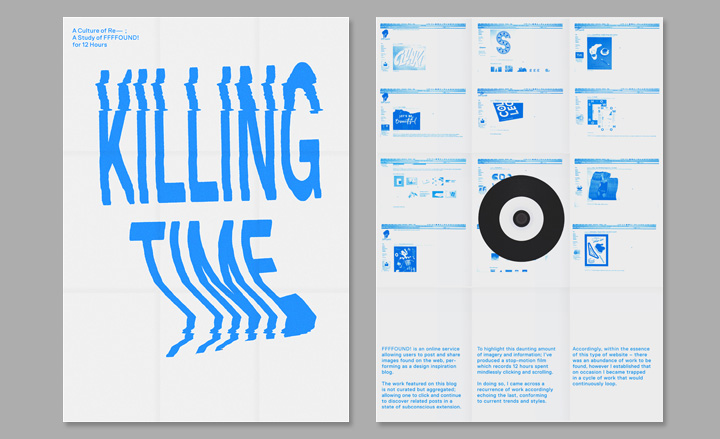
Corina Neuenschwander worked for a graphic design studio in London before studying in Holland. 'This allowed me to explore more individual and experimental design. I see my work as a way to structure and edit content in order for it to be most appropriately communicated on screen and on the printed page.'
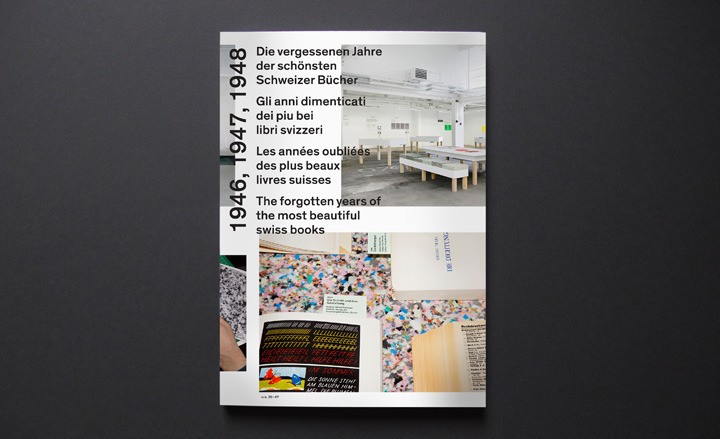

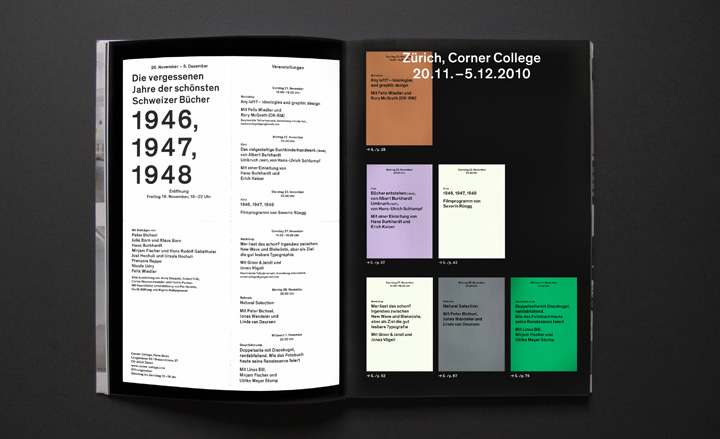
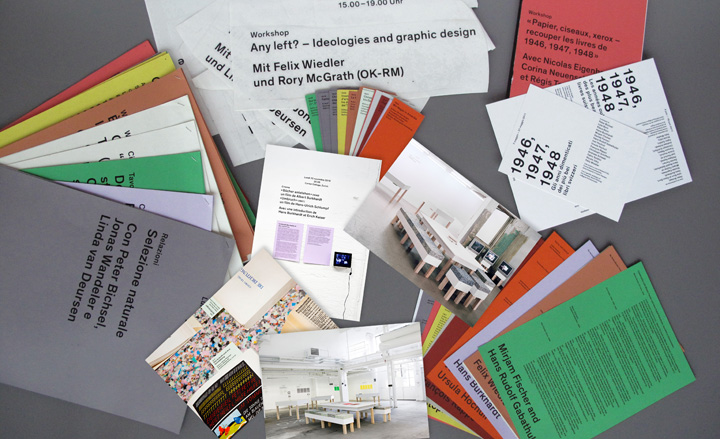
Daniel Clarke’s graduation project is a book about the architecture of the giant, soon-to-be-demolished Heygate housing estate in South London. “I produced a series of architectural documentations looking at the reoccurring patterns, textures and materials throughout the estate, to sit alongside a collection of individual memories from the ex-inhabitants. These documentations combined took the form of a book displaying an in-depth recreation of the monolith’s facade with its personal history behind each wall.”
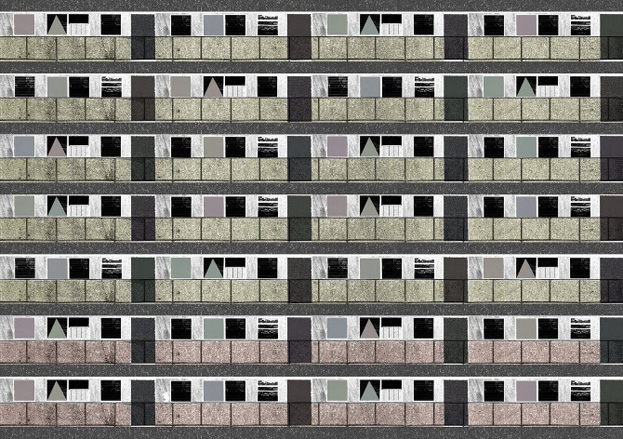
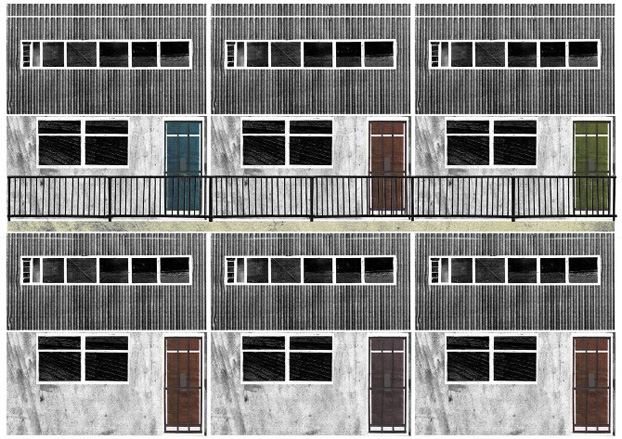
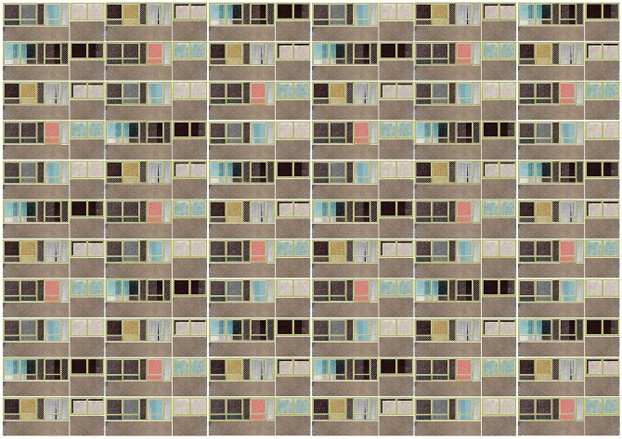

For his final university project, entitled 'ABC 3D', Mueller chose to investigate the 3D depiction of type, lifting it out of the 2D plane by means of various optical effects. Inspired by posters from different eras and genres he created a book containing what he describes as 'experiments in spatially represented typography' - a collection of studies leading to the final poster for a fictional exhibition, which he imagined being held at Zurich's Museum für Gestaltung.
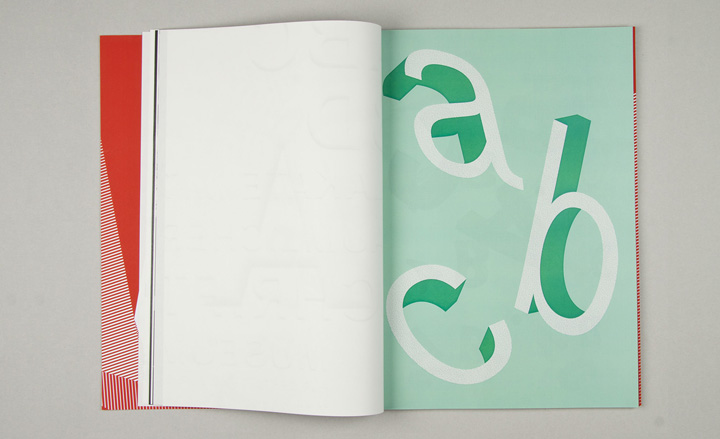
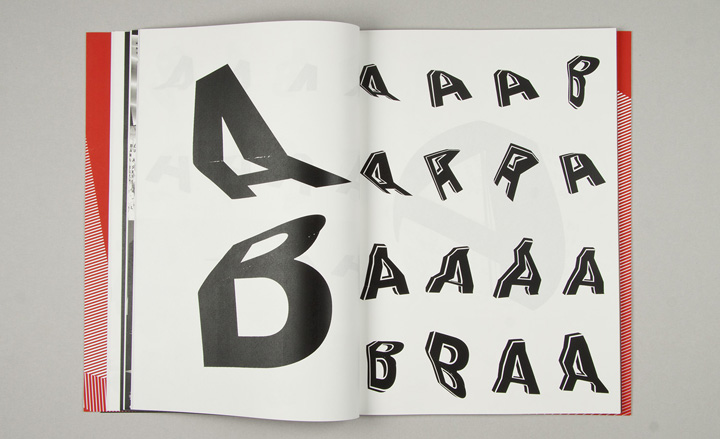
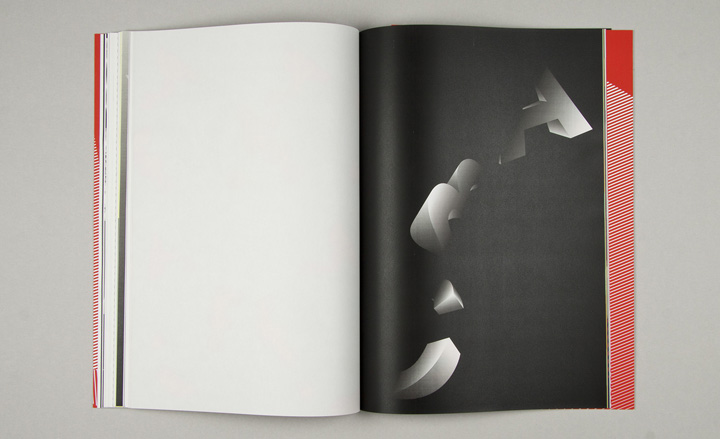
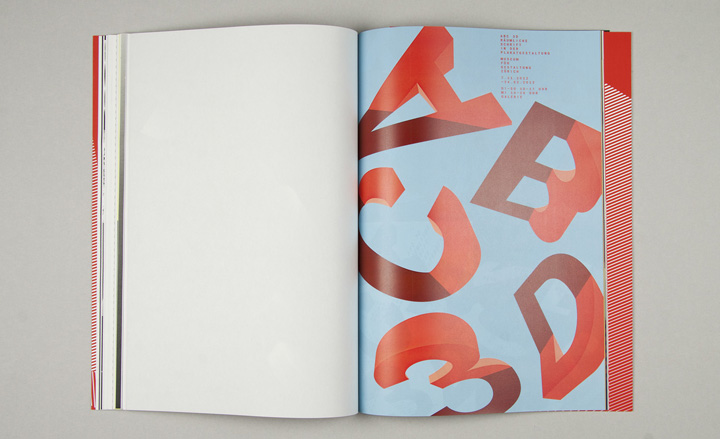
Recovered VIII is a collection of over 30,000 discarded images found on Fabienne Hess' computer and printed onto silk. 'These images were deleted and forgotten, but reappeared after running recovery software - they are a memory map of my digital life. It's an investigation into the role of memory in our technocratic society, showing that forgetting and deletion in a digital age has become more difficult.'
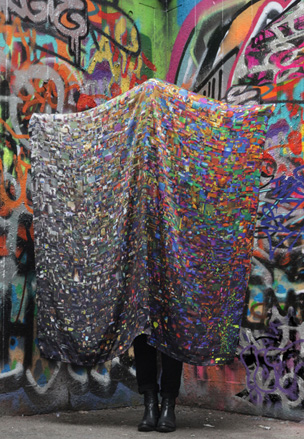
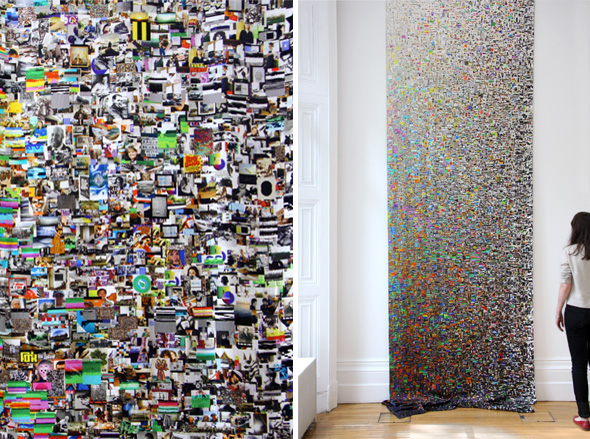
In his project A Buttload of Schmick Words, Helge Hjorth Bentsen presents new words compiled during the past year. Entries are structured as a narrative and he represents the meaning of each word in graphic form through typography, illustration and photography. 'Language is in constant motion, shaped by its users and their surroundings,' he says, and his dictionary of neologisms allows the reader 'to discover current trends, events, and phenomena, which mirror today's society'.
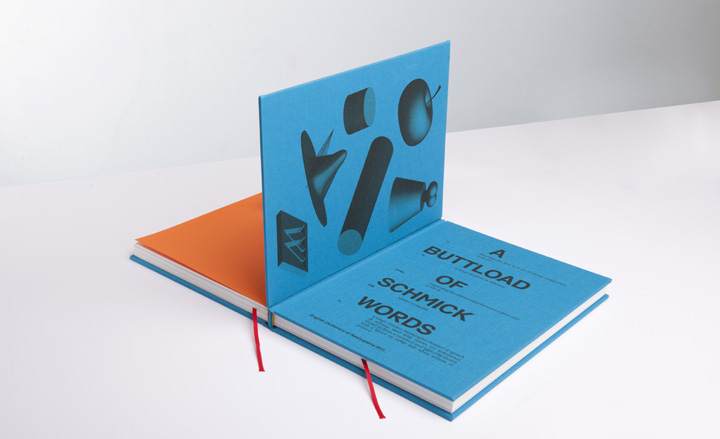
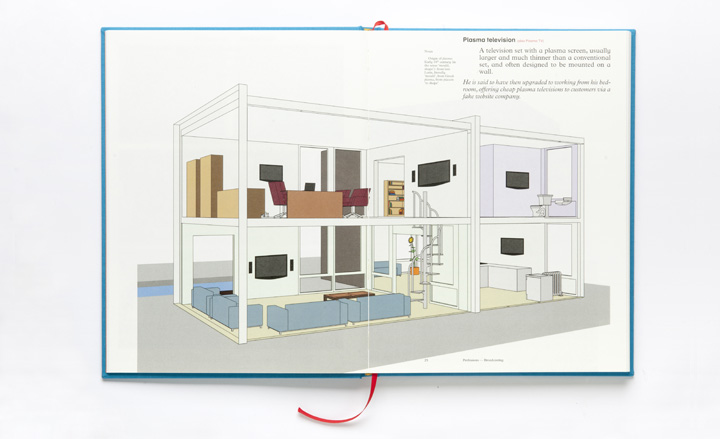
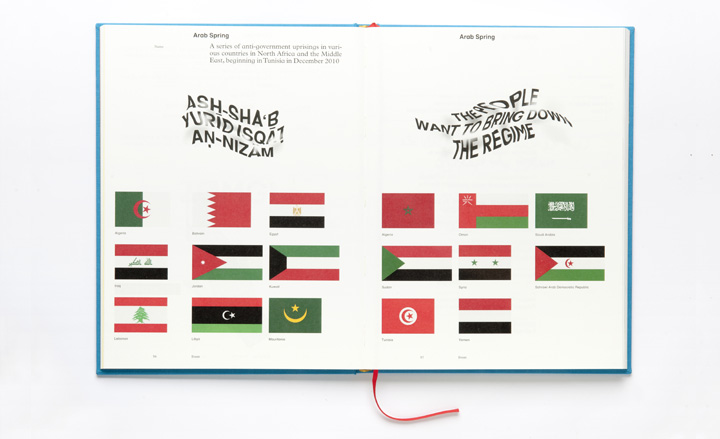

Allam's 'Gridshare' is an online network that enables users to create a visual grid of things that have inspired them from Flickr, Vimeo, YouTube etc. 'By displaying all this media in a grid, it allows you to see a vast amount of content in one view, as well as being able to follow others and view their latest collections,' he says. The project will remain online while he tests and develops it. Users can sign up at gridshare.co/signup using the invite code WALLPAPER.

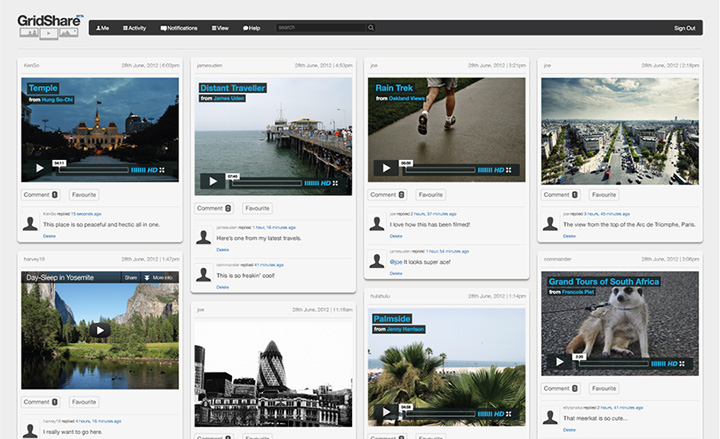


Louisa Gagliardi describes her work as 'seriously playful and playfully serious'. The images featured are from the book ÉCAL Bienvenue, which she created for ÉCAL's open days. She recreated different views of the school on Illustrator to showcase the different departments, teachers, exchanges and workshops.
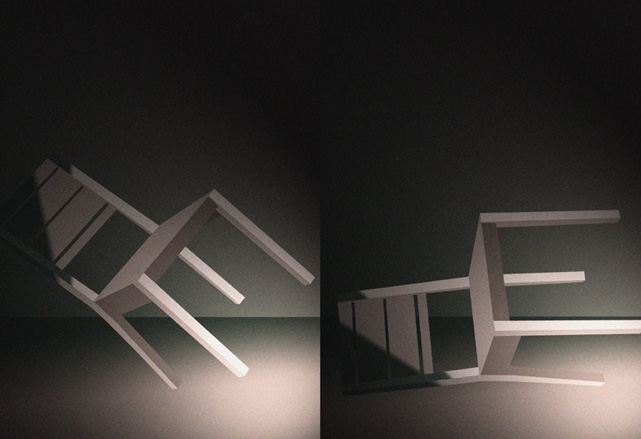
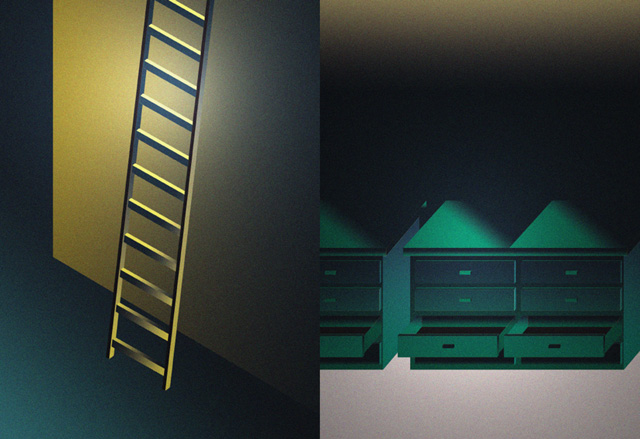
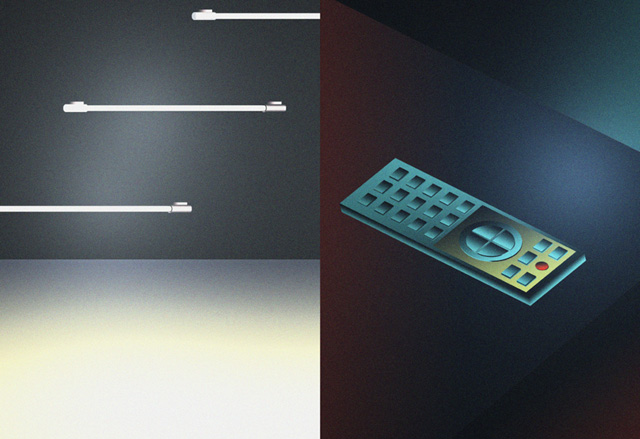
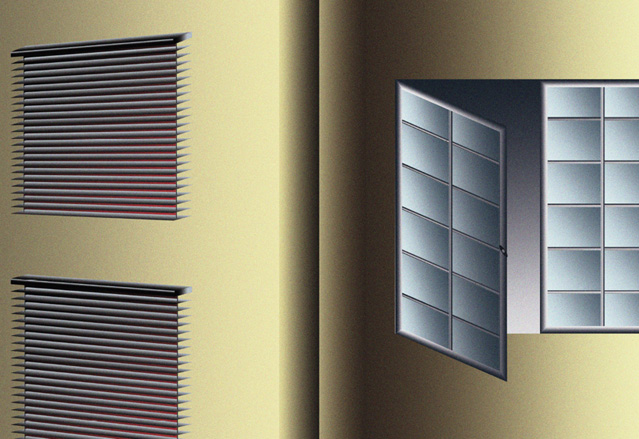
Addressing the universal problem of budgeting, planning and tracking your expenditure, Sidorko's 'Funder' app introduces money management and financial planning to people who have trouble realising their financial goals. 'The key aspect is helping them to visualise their aspirations,' she explains, 'breaking down the process of achieving them into easy steps and making the experience fun and engaging.'

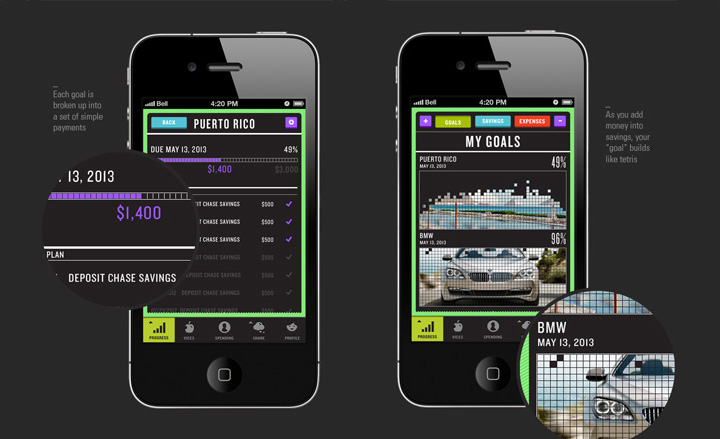

Prendergast studied illustration at Brighton, producing work that has a powerful, mesmeric and occasionally unsettling quality. He describes his video piece 'Flat land' - which he created during his final year - as 'an investigation into structure and restructuring', adding: 'I was interested in the notion of inter-dimensionality and what happens when a 3D object is rendered in two dimensions.'
Copenhagen is a harbour city, which means certain districts are visually connected but physically cut off. The aim of '#CPHsignals' - a collaboration between Schmeiduch, Marques and Frantzis - was to connect two Copenhagen neighbourhoods using the traditional maritime technology of signal lamps, combined with Twitter messages. 'We wanted to demonstrate how communication between remote locations was achieved in the past, while complementing it with a modern digital layer.'
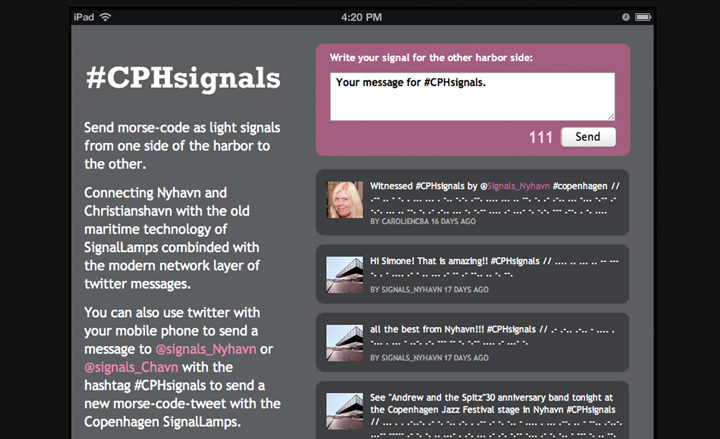

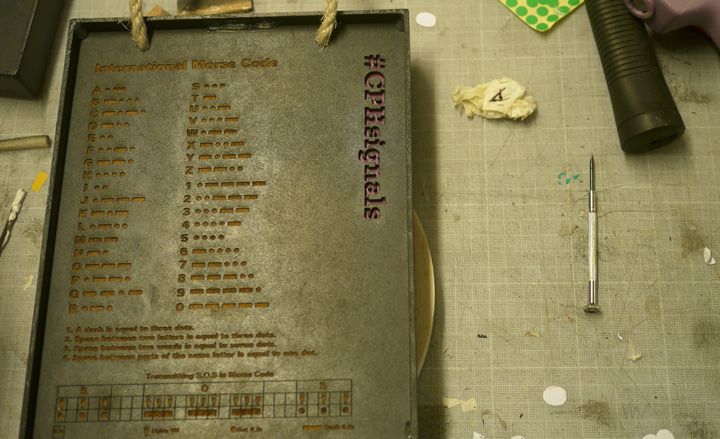
Mauro Tittoto has created a book focusing on the Brion Tomb, the work of Italian architect and designer Carlo Scarpa. Tittoto wanted to highlight 'the link between architecture and graphic design. I am trying to create a graphic system that is based on an architect's manifesto.'
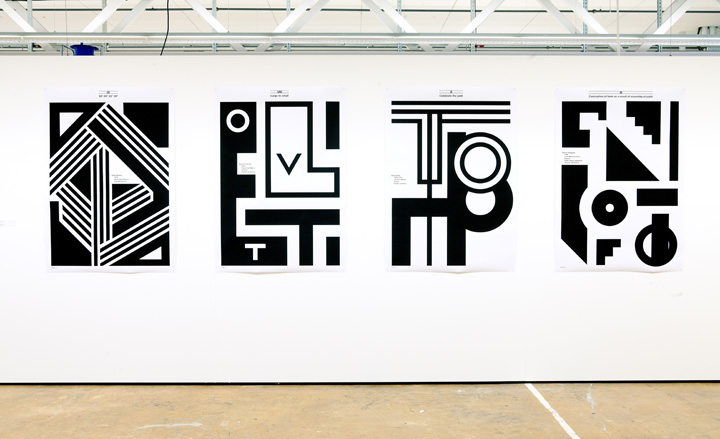
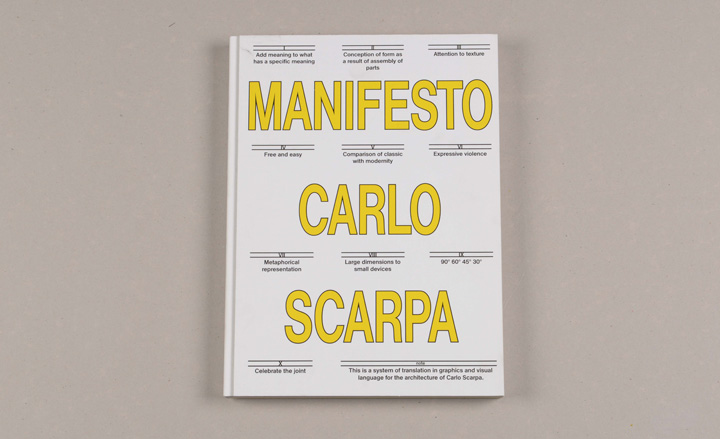
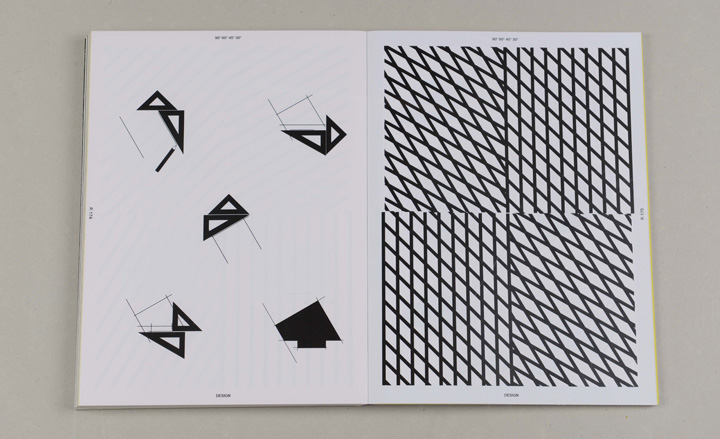
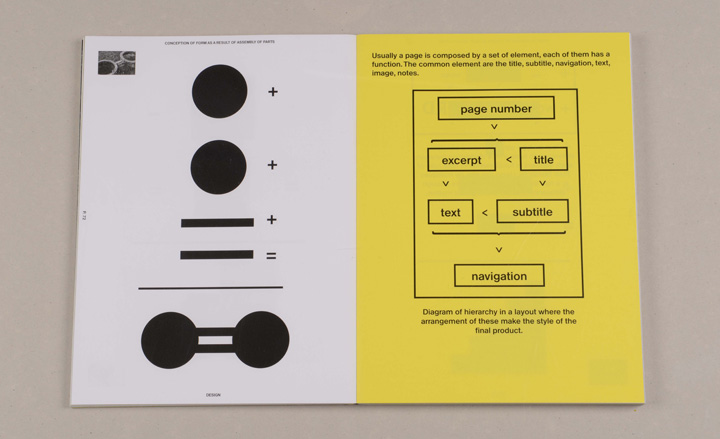
Moa Schulman has an unusual creative method. 'When I go to sleep after a challenging day, in the state between wakefulness and sleep, I often get visual images. As if they were visual dream remnants, residues, from the day gone by. The patterns Spruce Trees Hopes and Essential Descending were created by, or are based on, such visions.'

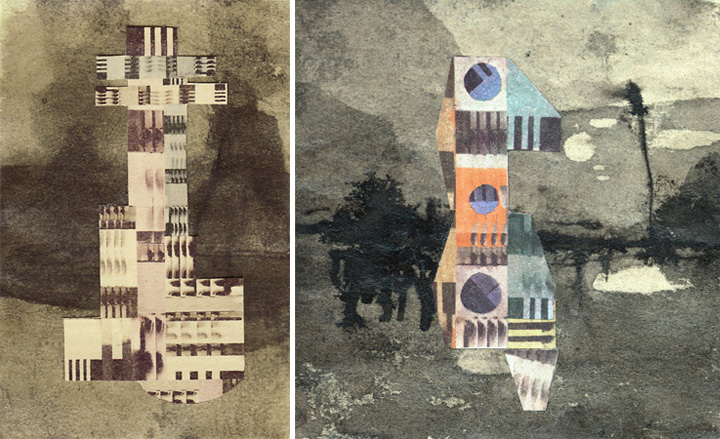
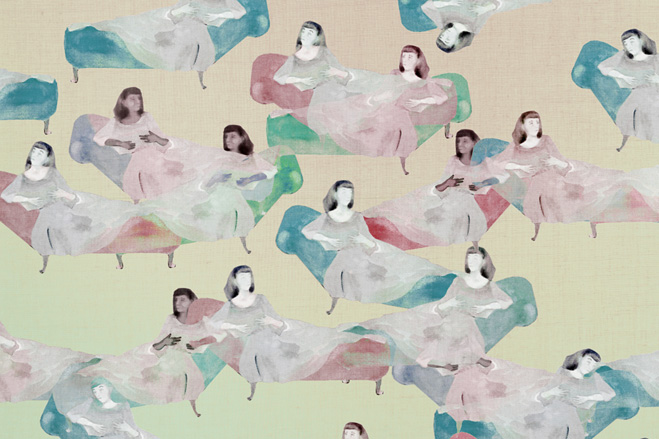
From 2011-2012, as part of an Edinburgh College of Art project, Collin co-founded a successful graphic design studio called Open-play. For 'Pipcorn NYC' he designed hand-stamped packaging for a fledgling organic popcorn brand, inspired by hand-painted signage from the 1850s. And for 'The Typographic Circle' (D&AD Student awards 2012 Best of Year), he designed a series of publications commemorating typography experts.
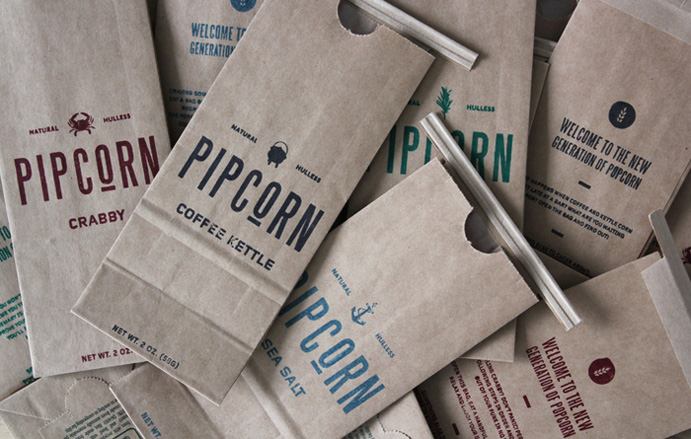
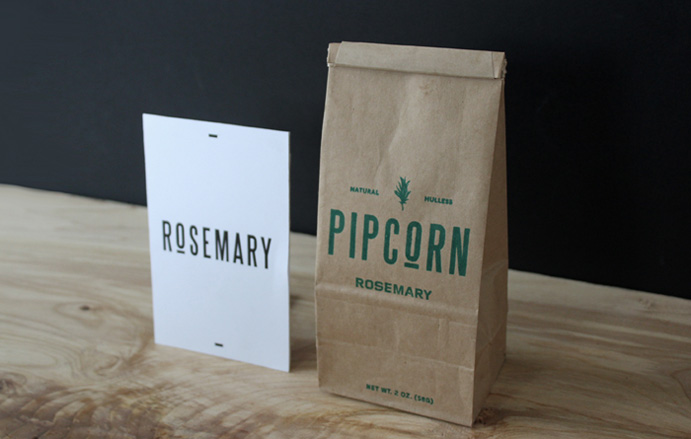
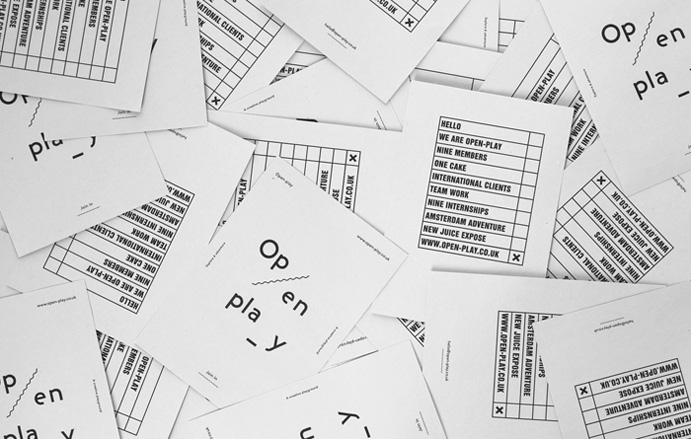
'While it is difficult for me to be seriously funny,' Fresson says gnomically, 'I find I have an aptitude for being funnily serious'. Taking inspiration from 1930s Belgian comics, 1950s travel advertising, Ukiyo-e landscape prints, Winsor McCay and Moebius, his project 'Images from Arbitrary Starting Points' is an organic narrative process that involves taking a small section of an abstract watercolour and using it to inform the design of a new image.
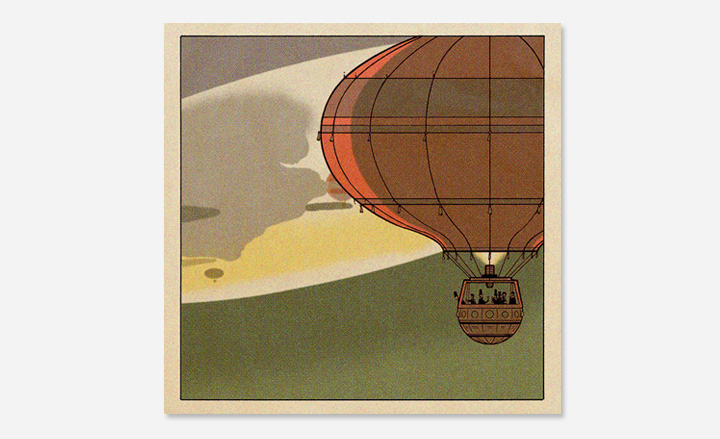

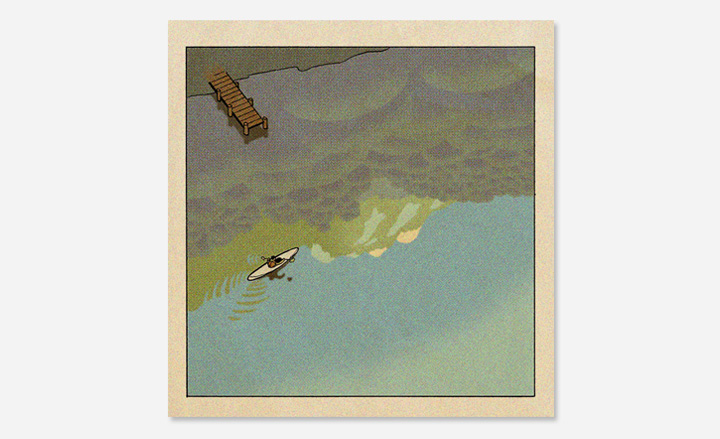
Aquascaping is the craft of arranging aquatic plants, rocks, stones and driftwood in an aquarium - in effect, gardening under water. For 'Takashi Amano Poster' Langer employed the methodology of aquascaping master Takashi Amano to create a 2D composition. Langer's hand silk-screened 'French New Wave Cinema Series' posters 'are an attempt to take aspects of the visual aesthetic of the movement and re-contextualise it', while 'Great American Writers: A biography of Gil Scott-Heron' uses graphic design to establish a rhythm similar to Scott-Heron's beat poetry.
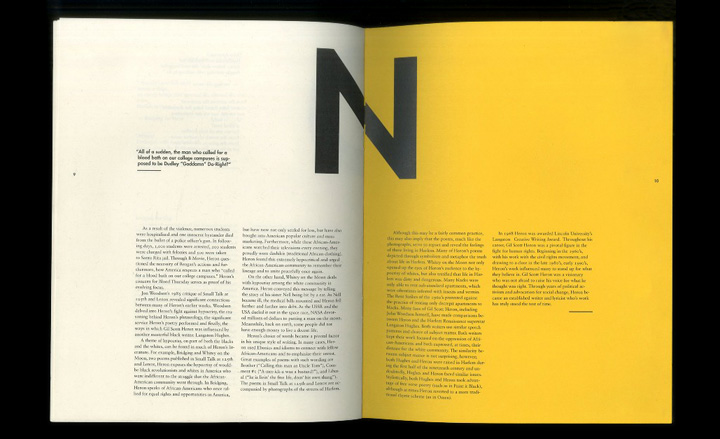
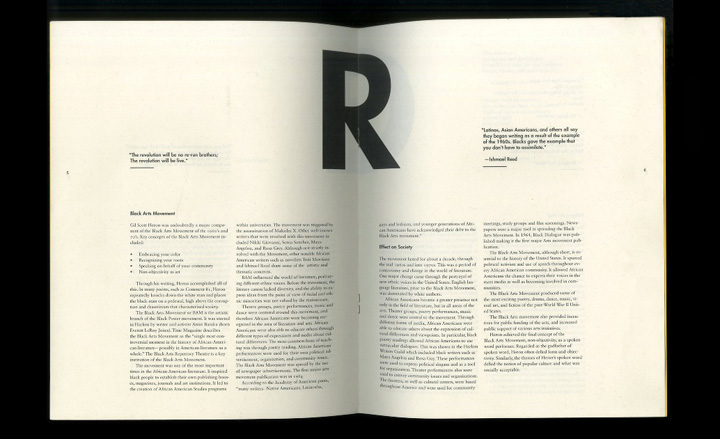
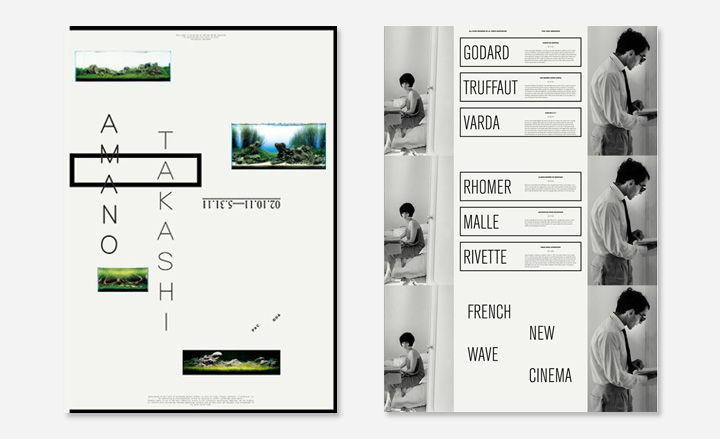
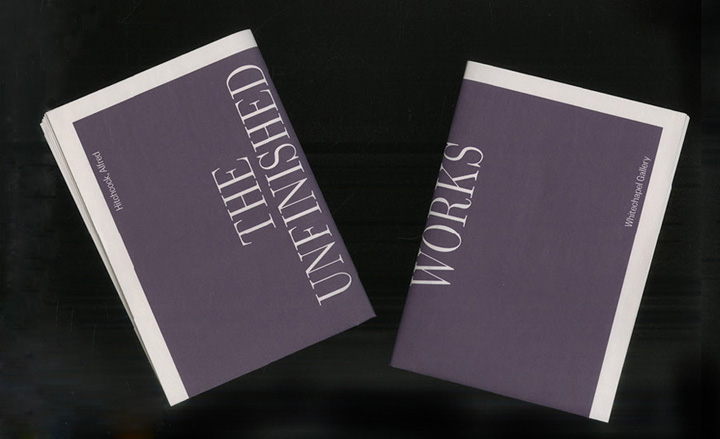
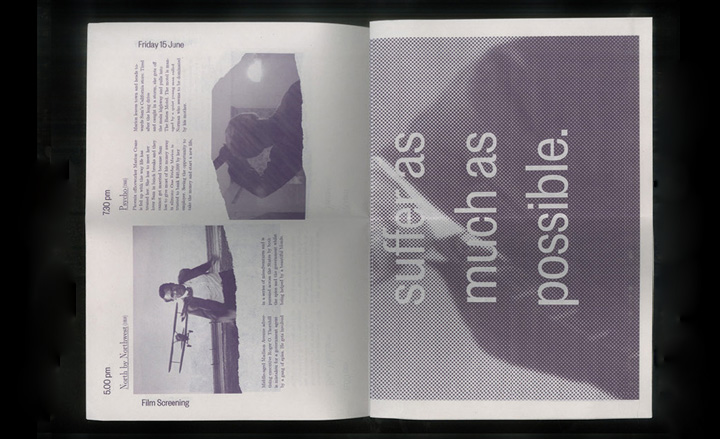
As part of his degree course, Sinclair created 'Aquapax - Poetry Inside', a motion graphics piece promoting eco-luxury brand Aquapax. It can now be viewed by consumers who scan the QR code on the rear of each bottle. For his 'D&AD, Coutts - Installation Design' he carried out extensive preliminary research into human-computer interaction, and was awarded a D&AD Yellow Pencil Nomination, ultimately leading to a spot on the 2012 D&AD Graduate Academy.
Grebenshchikova's design aesthetic, she says, is partly influenced by deconstructivist architecture. Her graphic accompaniment for a series of exhibitions at the Bulthaup Design Gallery in St Petersburg in 2011-2012 was a self-initiated project inspired by her love of furniture and design objects. The project included posters, postcards and other promotional material for 'Eileen Gray - Rediscovery' and 'Classics of Finnish Design'.
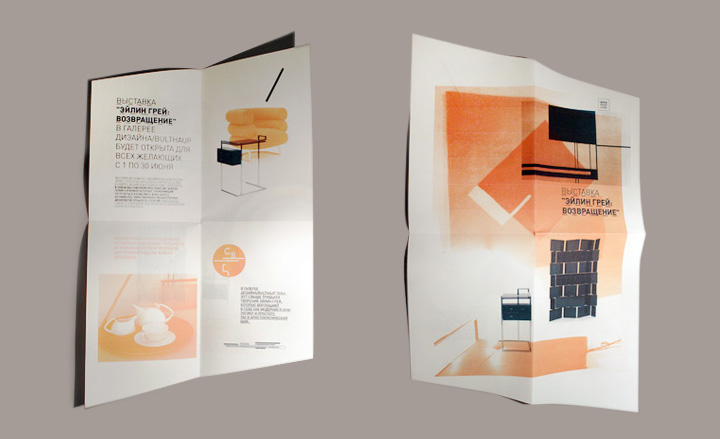
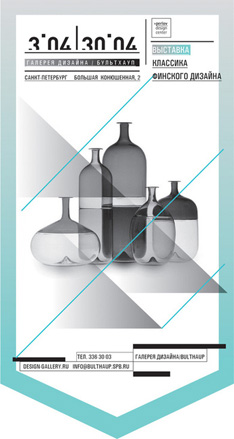

Stockholm-based animator, graphic designer and illustrator Viktor Khan produces work in a wide range of styles. His surreal '7 Rooms' is an attempt to recreate the feeling of dream he once had. 'I wanted to use drawing that would enhance that eerie feeling,' he explains. 'After experimenting, I discovered that a crudely hand-drawn style produced the effect I was looking for.' Khan's graduation project 'Cassiopeia' is an animated short about a failed expedition in an arctic region - partly inspired by Swedish explorer SA Andrée. The film will be released in 2013.
Ellie Stathaki is the Architecture & Environment Director at Wallpaper*. She trained as an architect at the Aristotle University of Thessaloniki in Greece and studied architectural history at the Bartlett in London. Now an established journalist, she has been a member of the Wallpaper* team since 2006, visiting buildings across the globe and interviewing leading architects such as Tadao Ando and Rem Koolhaas. Ellie has also taken part in judging panels, moderated events, curated shows and contributed in books, such as The Contemporary House (Thames & Hudson, 2018), Glenn Sestig Architecture Diary (2020) and House London (2022).
-
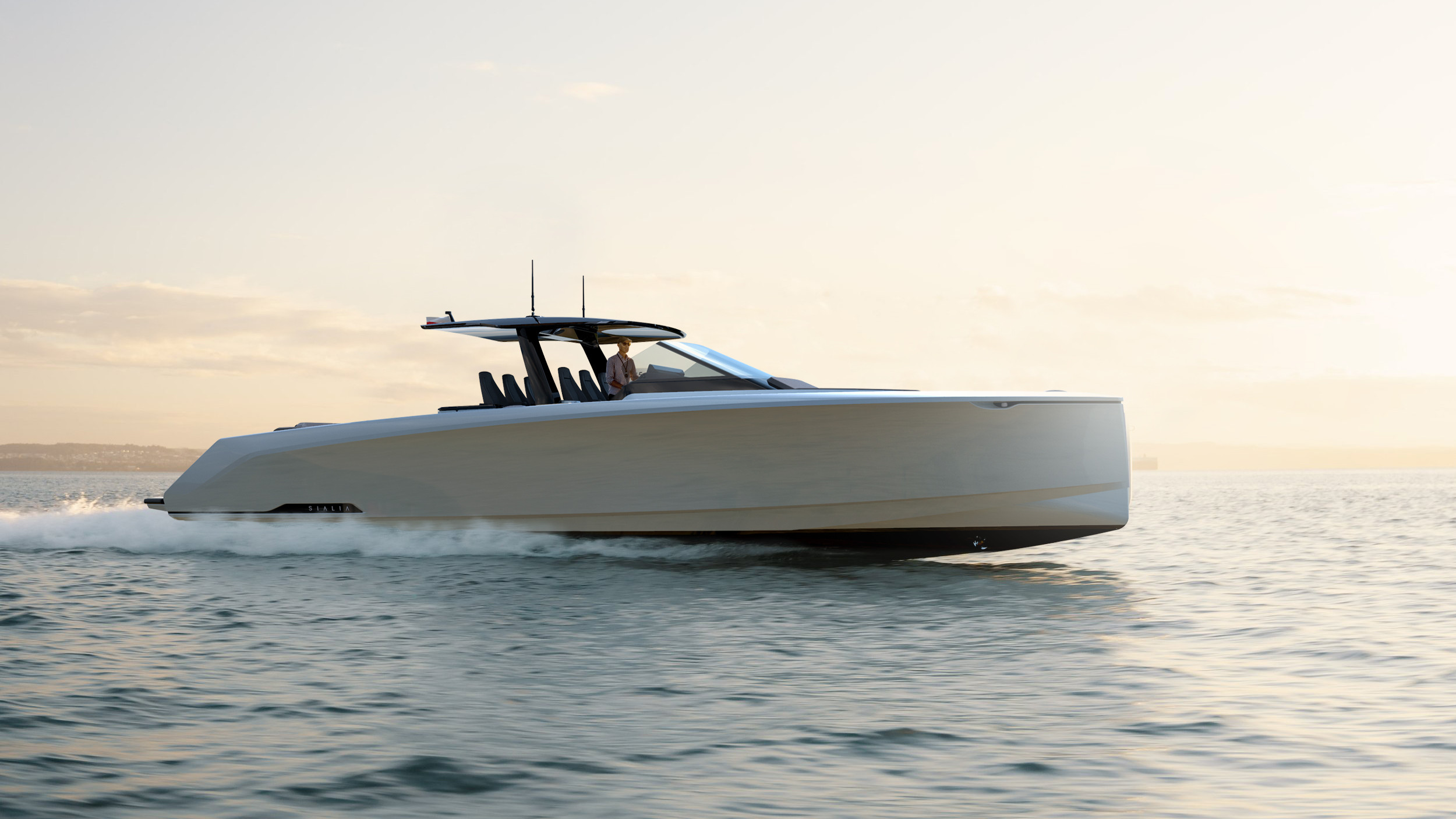 The Sialia 45 cruiser is a welcome addition to the new generation of electric boats
The Sialia 45 cruiser is a welcome addition to the new generation of electric boatsPolish shipbuilder Sialia Yachts has launched the Sialia 45, a 14m all-electric cruiser for silent running
By Jonathan Bell
-
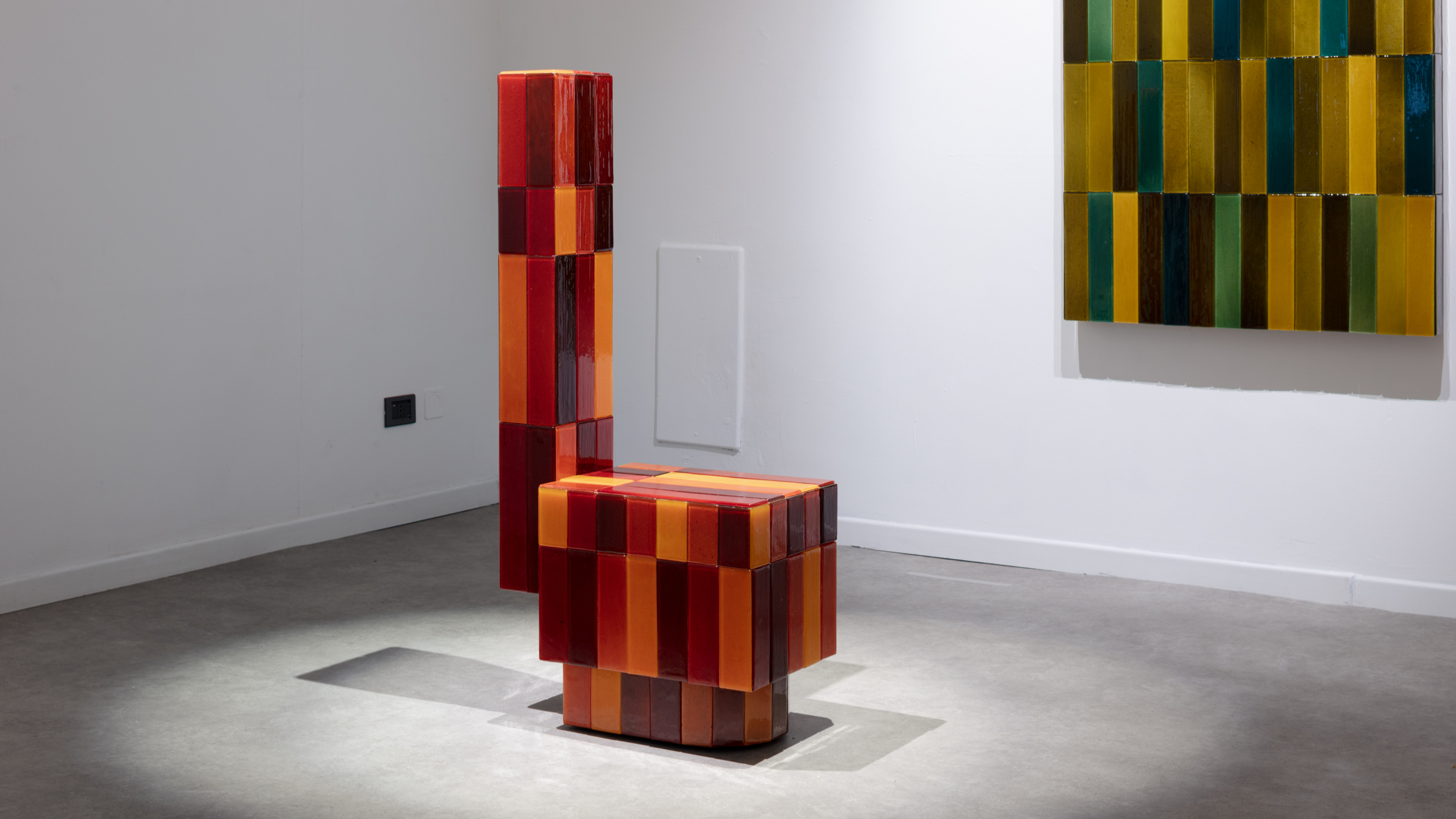 Tokyo design studio We+ transforms microalgae into colours
Tokyo design studio We+ transforms microalgae into coloursCould microalgae be the sustainable pigment of the future? A Japanese research project investigates
By Danielle Demetriou
-
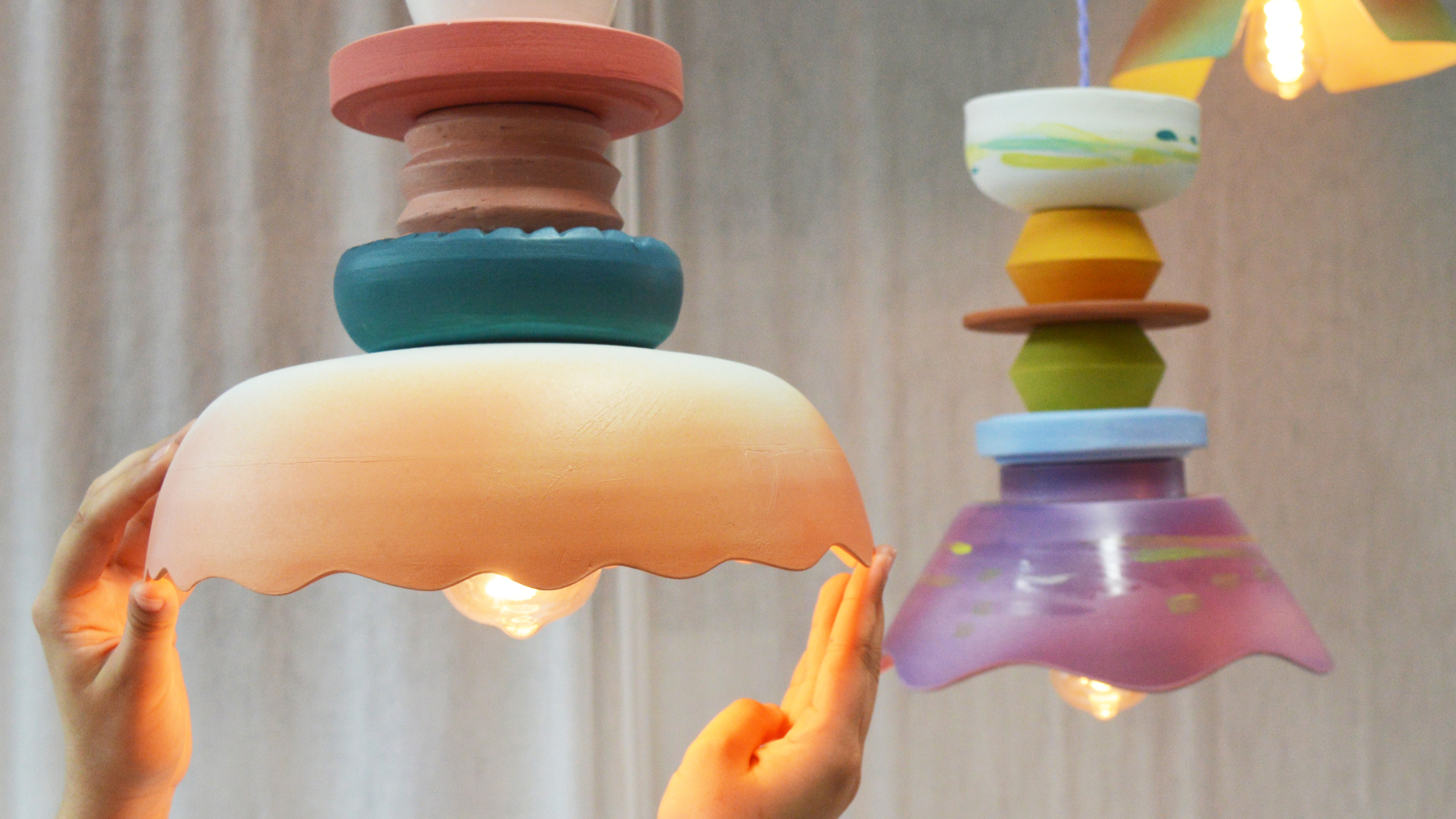 What to see at London Craft Week 2025
What to see at London Craft Week 2025With London Craft Week just around the corner, Wallpaper* rounds up the must-see moments from this year’s programme
By Francesca Perry
-
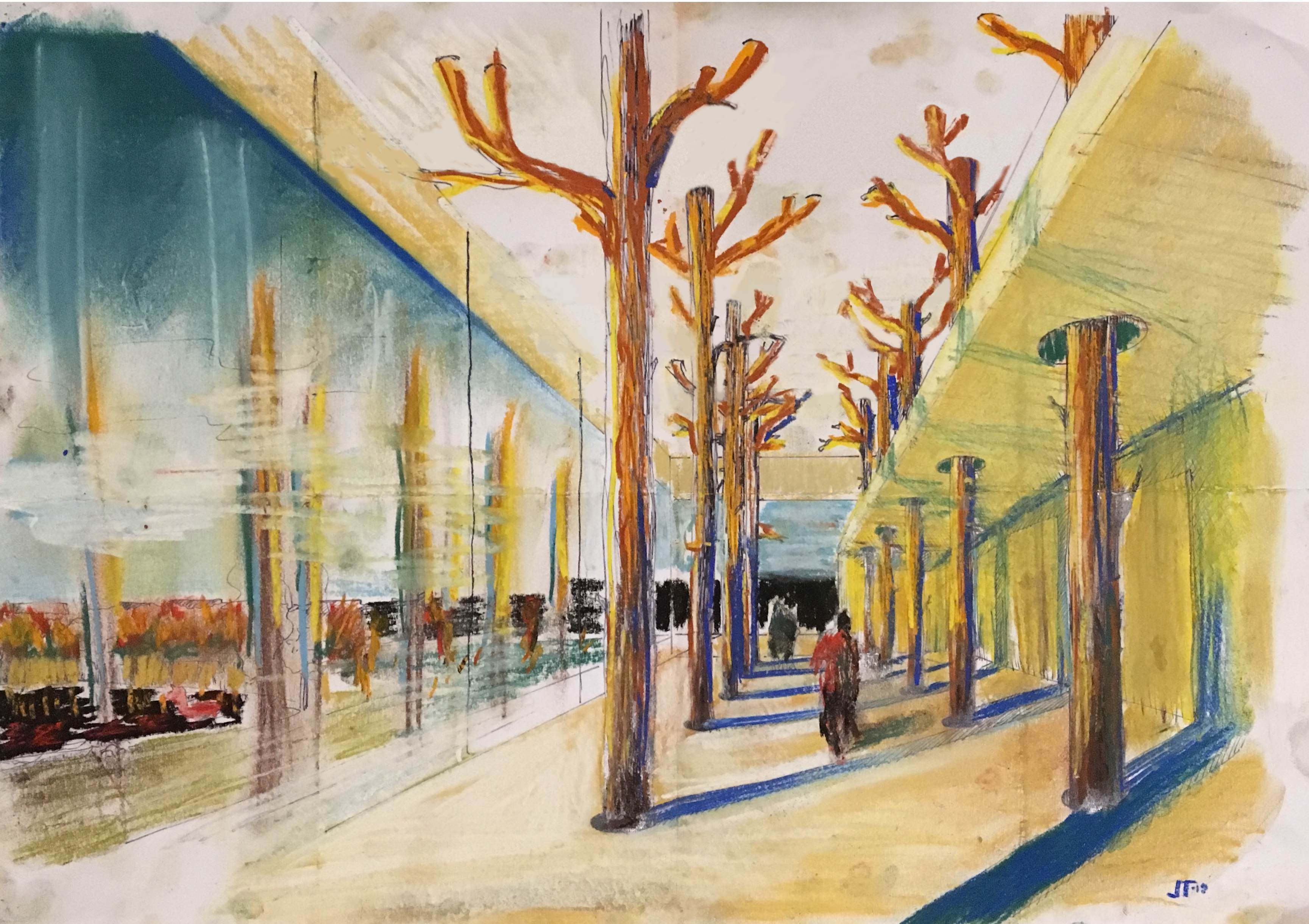 Jaakko Torvinen and Elli Wendelin design transportable wooden building
Jaakko Torvinen and Elli Wendelin design transportable wooden buildingOur Next Generation 2022 showcase shines a light on 22 outstanding graduates from around the globe. Here, we profile architecture graduates Jaakko Torvinen and Elli Wendelin from Aalto University’s School of Arts, Design and Architecture, Finland
By Nasra Abdullahi
-
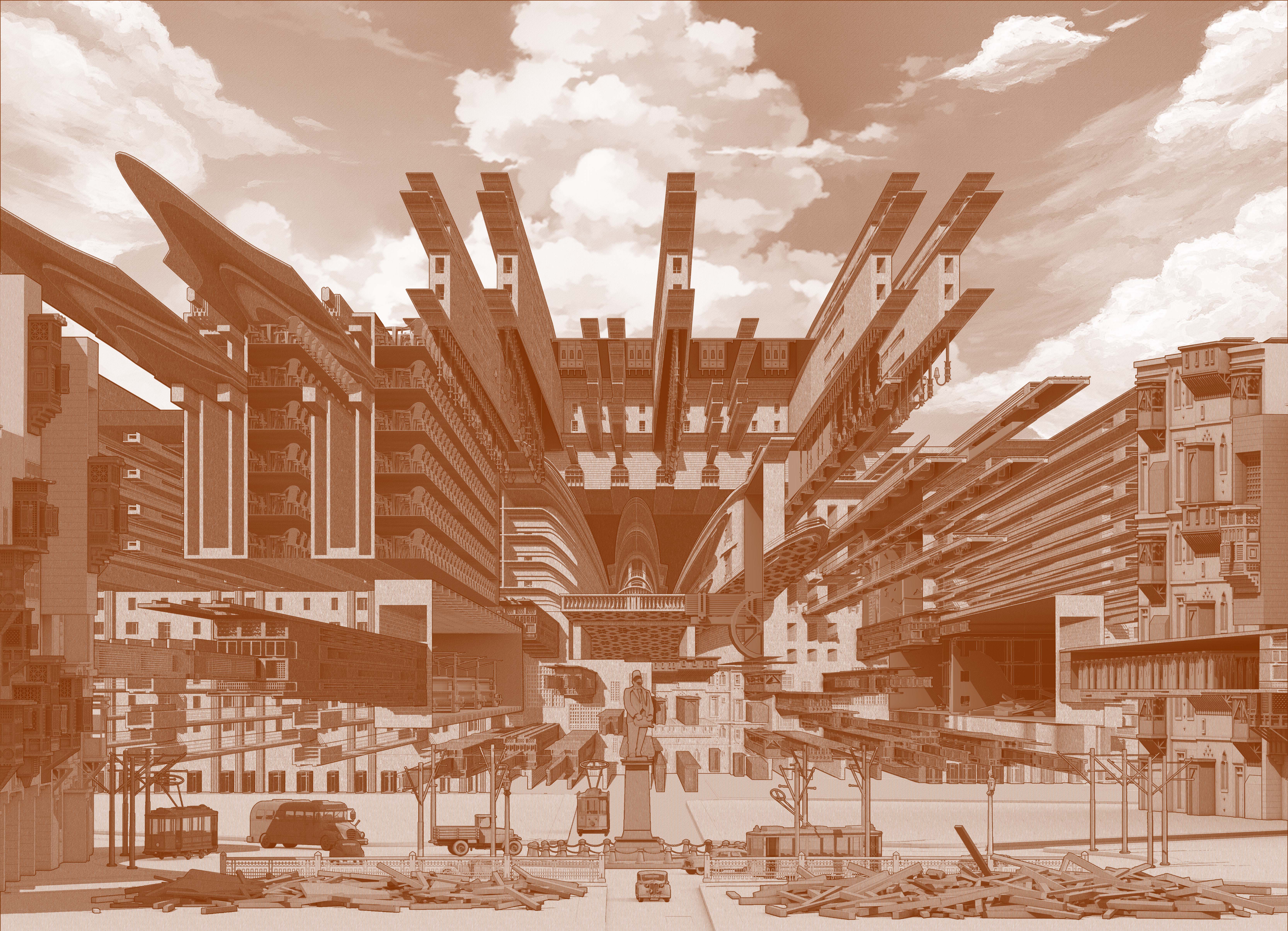 Kamal Ranchod uses architectural drawing to decolonise Egyptian history
Kamal Ranchod uses architectural drawing to decolonise Egyptian historyOur Next Generation 2022 showcase shines a light on 22 outstanding graduates from around the globe, in seven creative fields. Here, we profile Kamal Ranchod, from the University of Johannesburg’s Graduate School of Architecture, South Africa
By Nasra Abdullahi
-
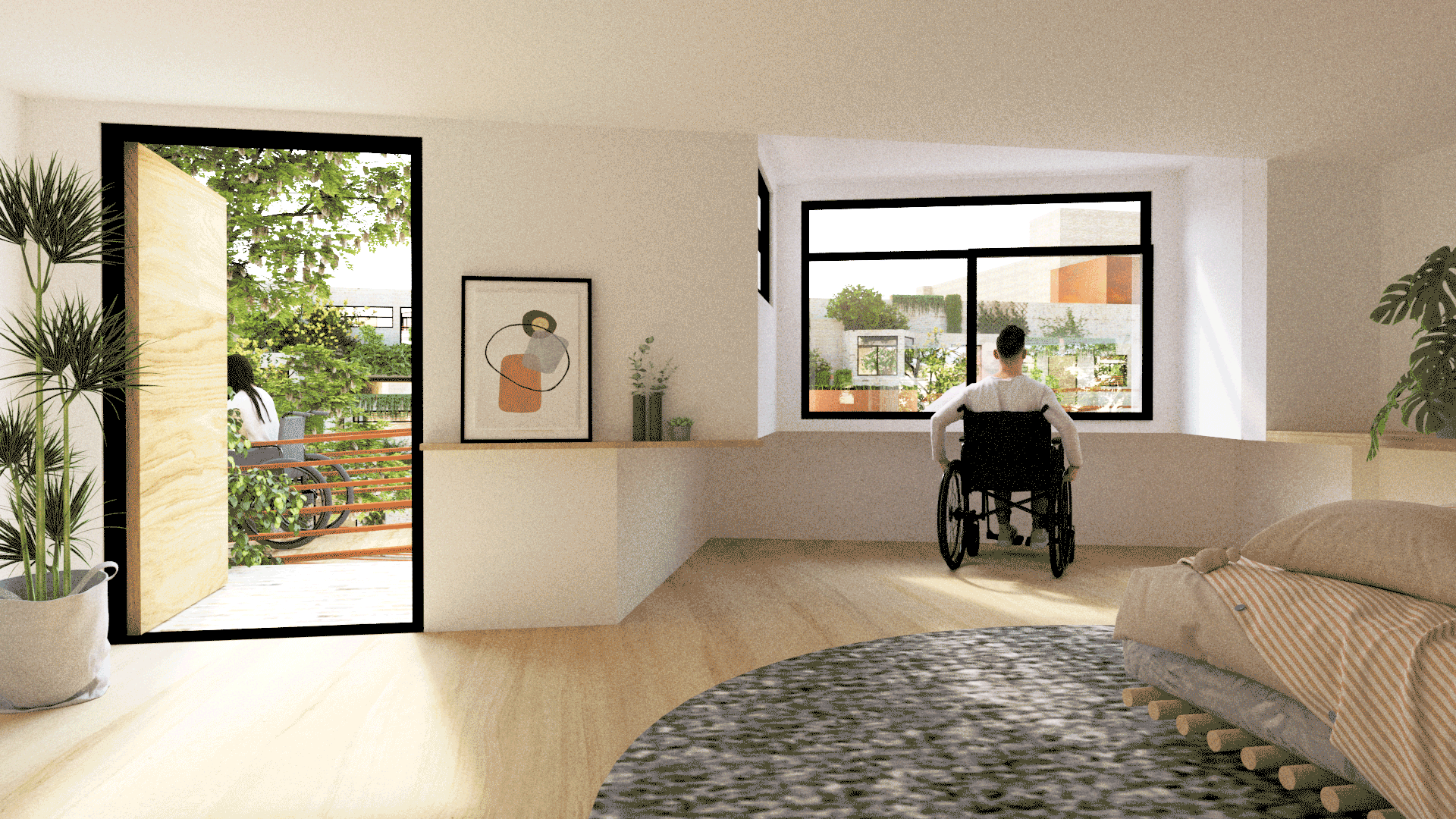 ‘Cripping Architecture’: Shaina Yang reimagines the world for a different body type
‘Cripping Architecture’: Shaina Yang reimagines the world for a different body typeOur Next Generation 2022 showcase shines a light on 22 outstanding graduates from around the globe, in seven creative fields. Here, we profile architecture graduate Shaina Yang from the Harvard Graduate School of Design, USA
By Nasra Abdullahi
-
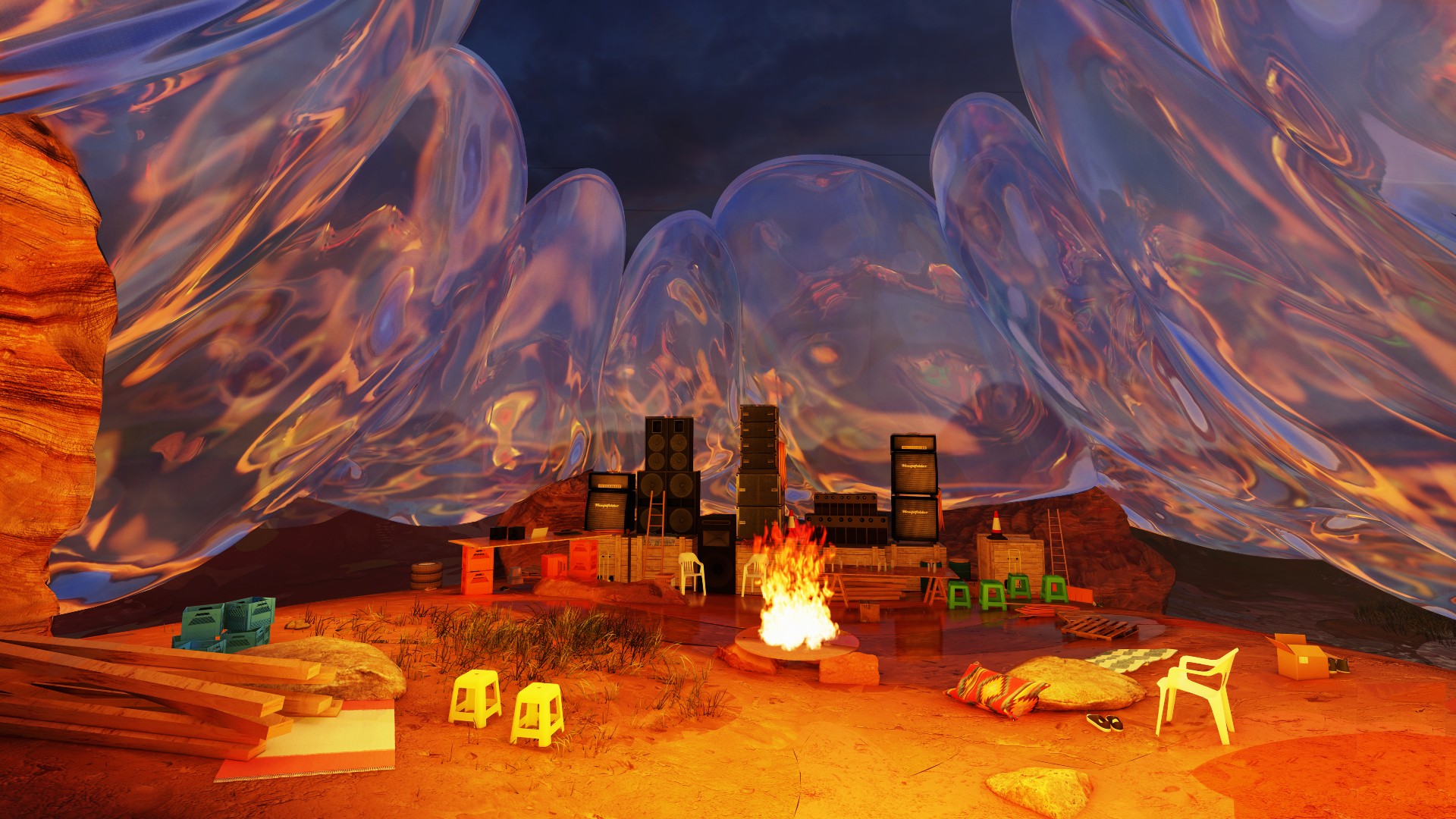 Matthew Avallone proposes ‘inhabitable park-scape’ for togetherness in Tijuana
Matthew Avallone proposes ‘inhabitable park-scape’ for togetherness in TijuanaOur Next Generation 2022 showcase shines a light on 22 outstanding graduates from around the globe, in seven creative fields. Here, we profile architecture graduate Matthew Avallone, from the Royal College of Art, UK
By Nasra Abdullahi
-
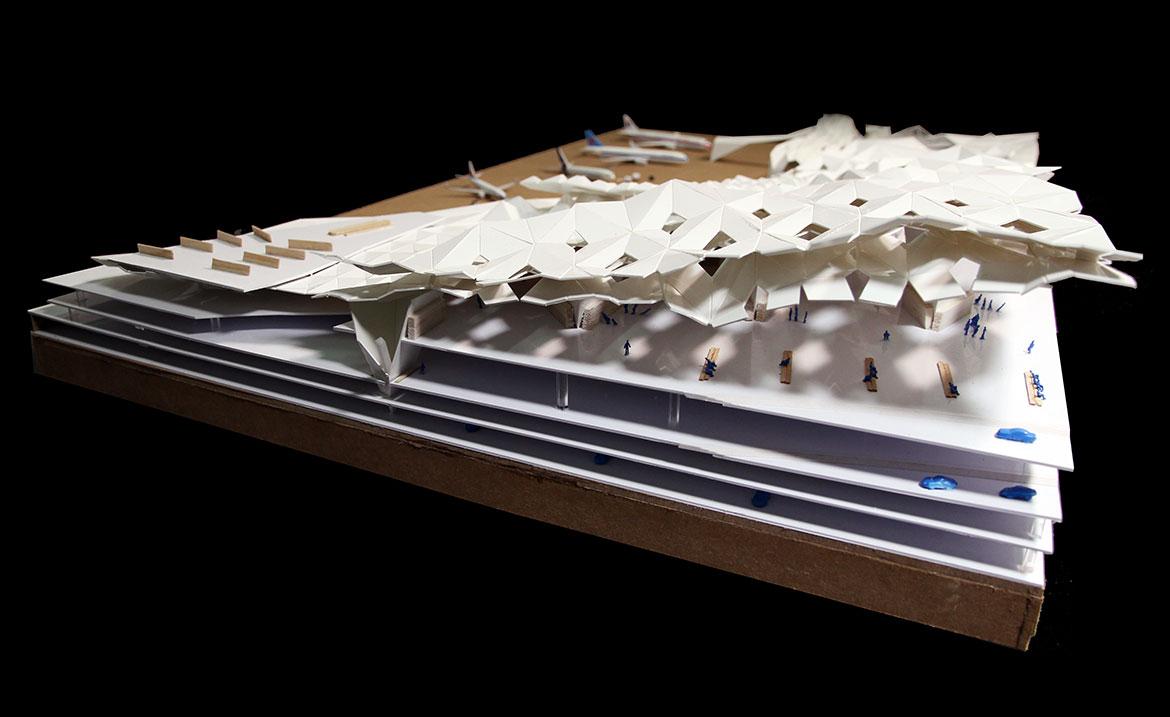 Architecture
ArchitectureThe next generation of architects and engineers exploring space and surface
By Ellie Stathaki
-
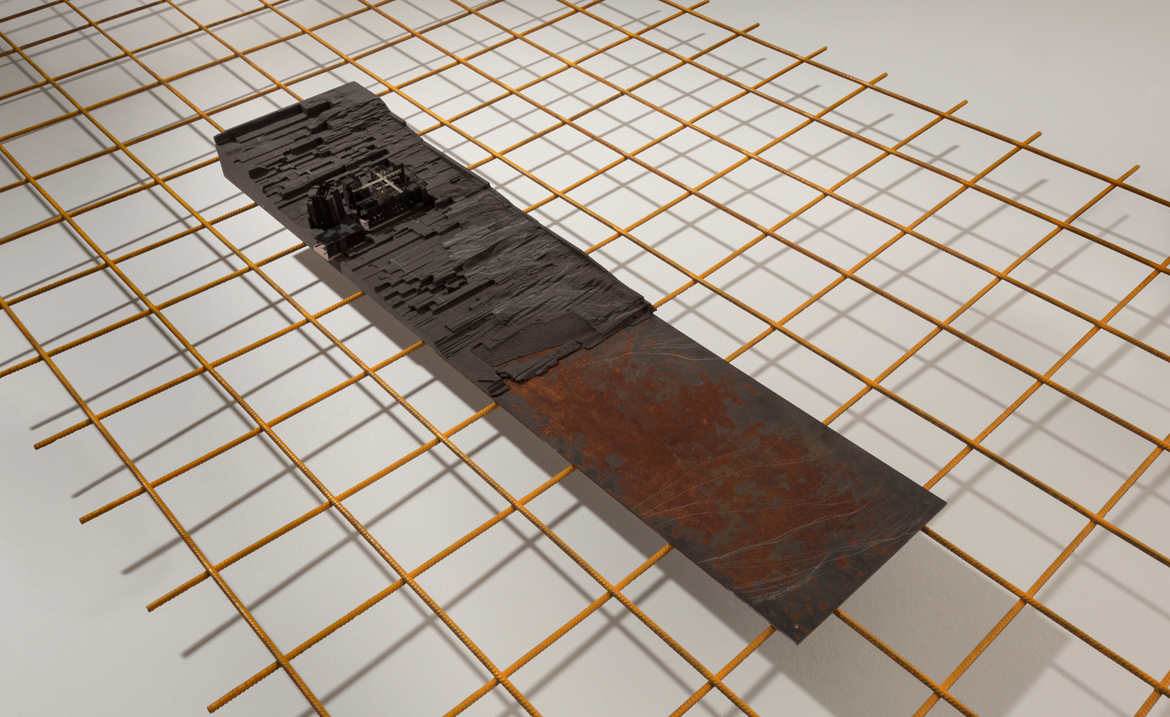 Architecture
ArchitectureWe cast our nets wide to find the best emerging architects and engineers
By Ellie Stathaki
-
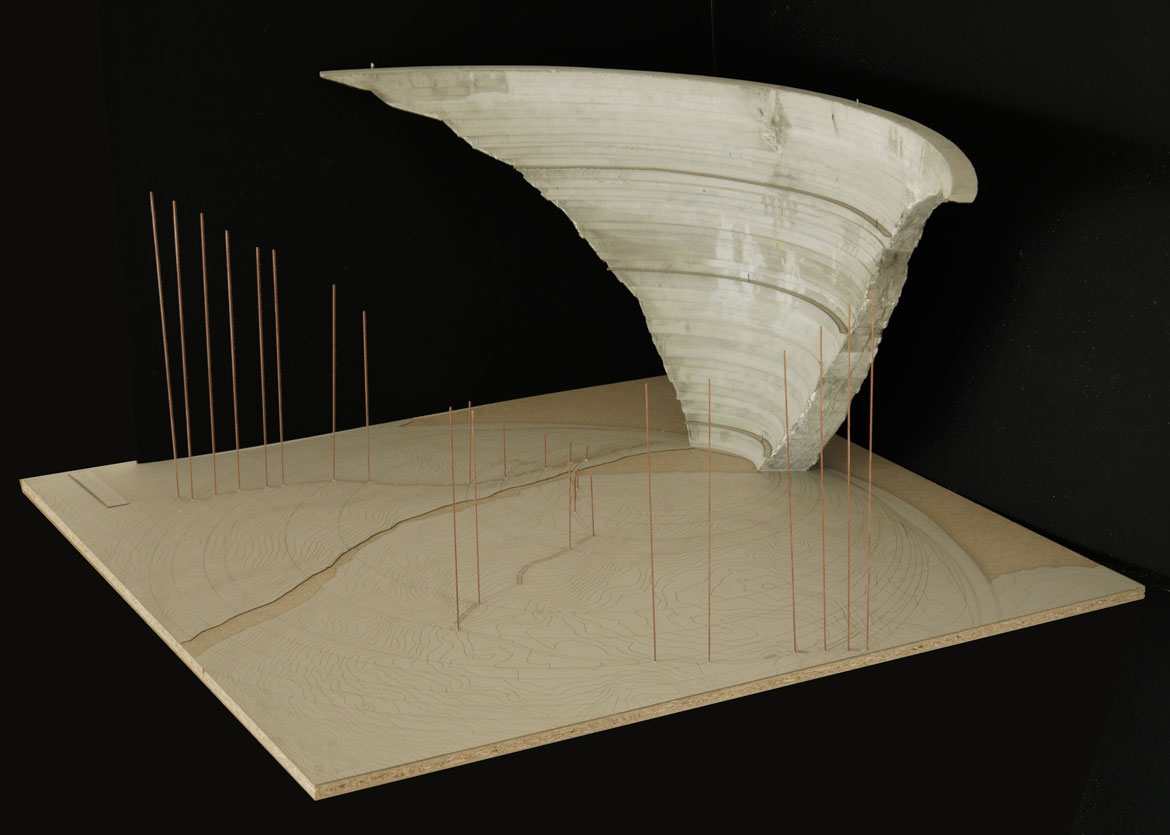 Architecture
ArchitectureThe next generation of architects and engineers are setting themselves an ambitious agenda
By Ellie Stathaki
-
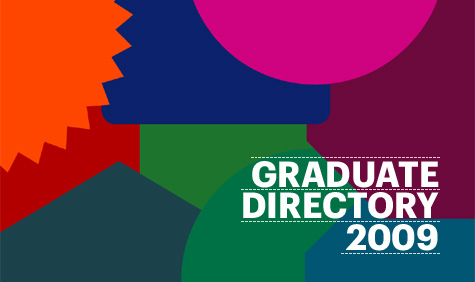 Wallpaper* Graduate Directory 2009
Wallpaper* Graduate Directory 2009By Ellie Stathaki